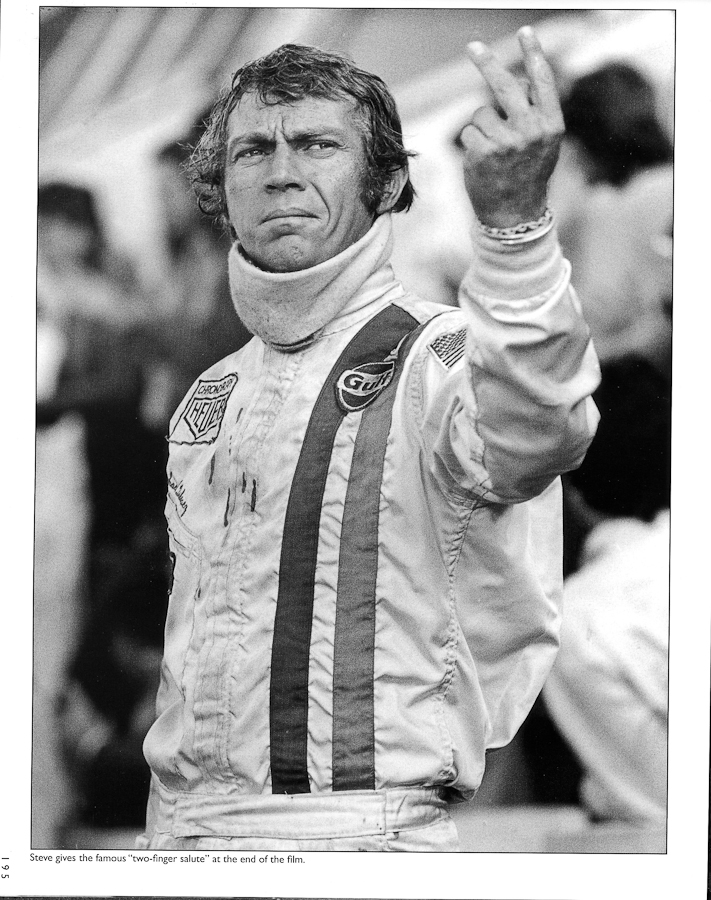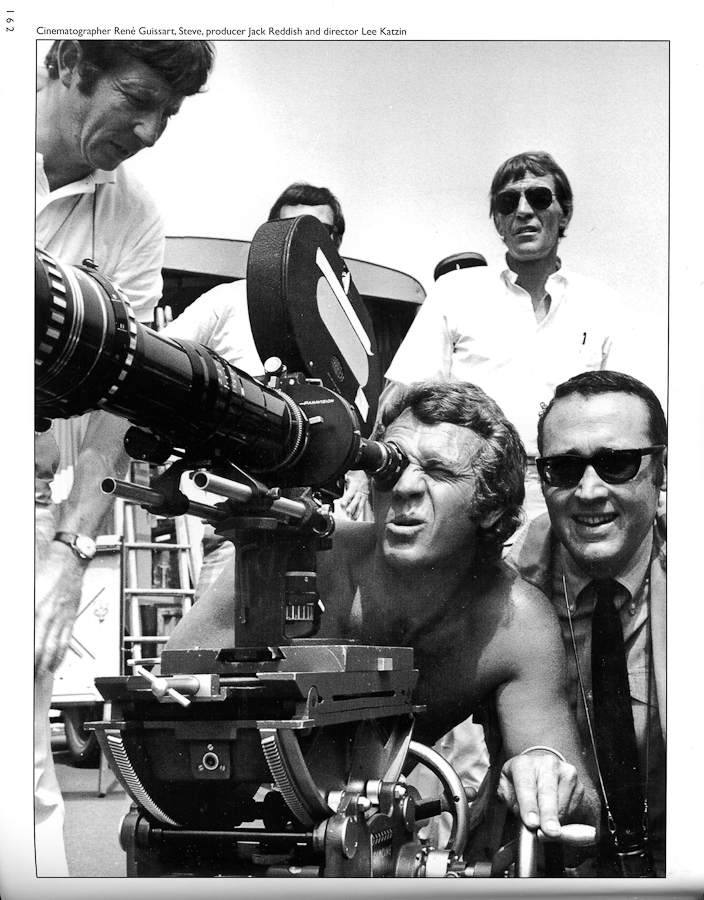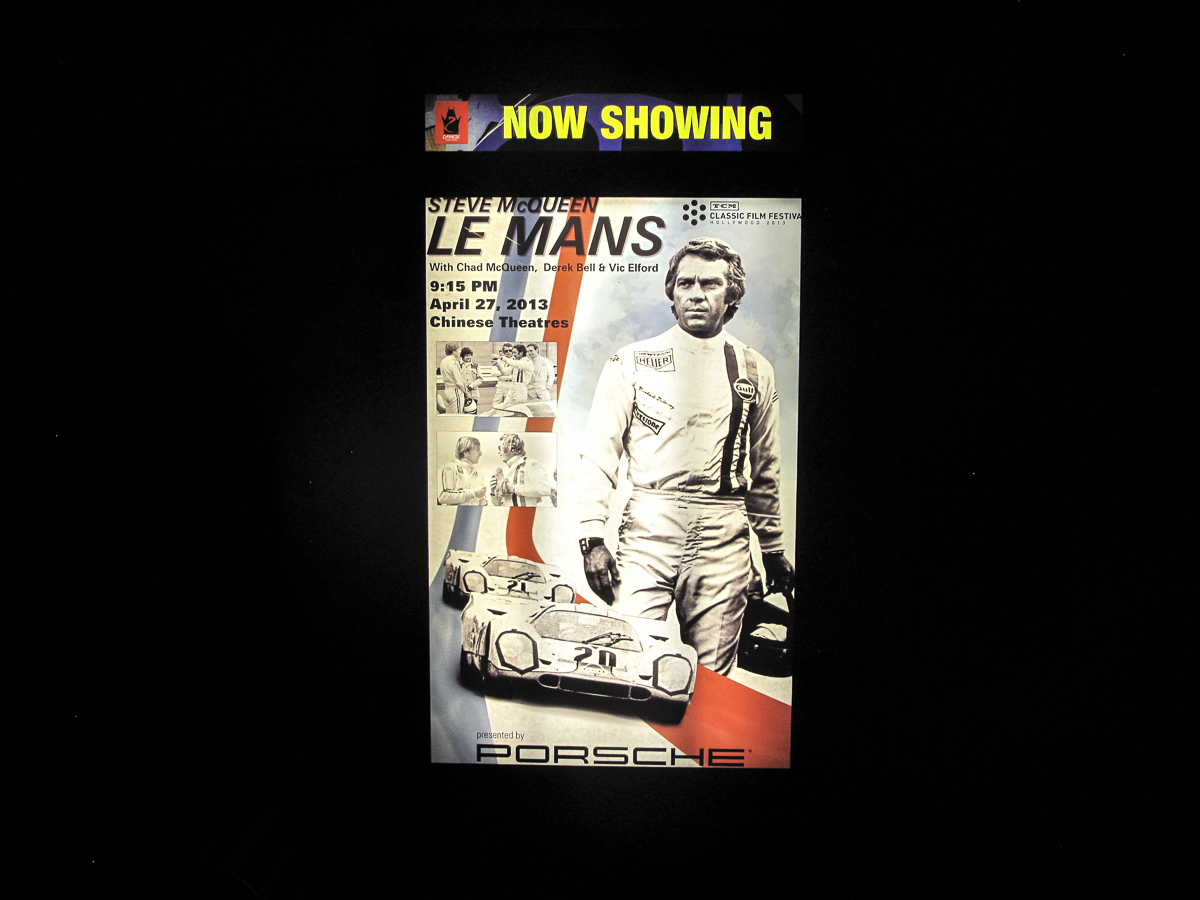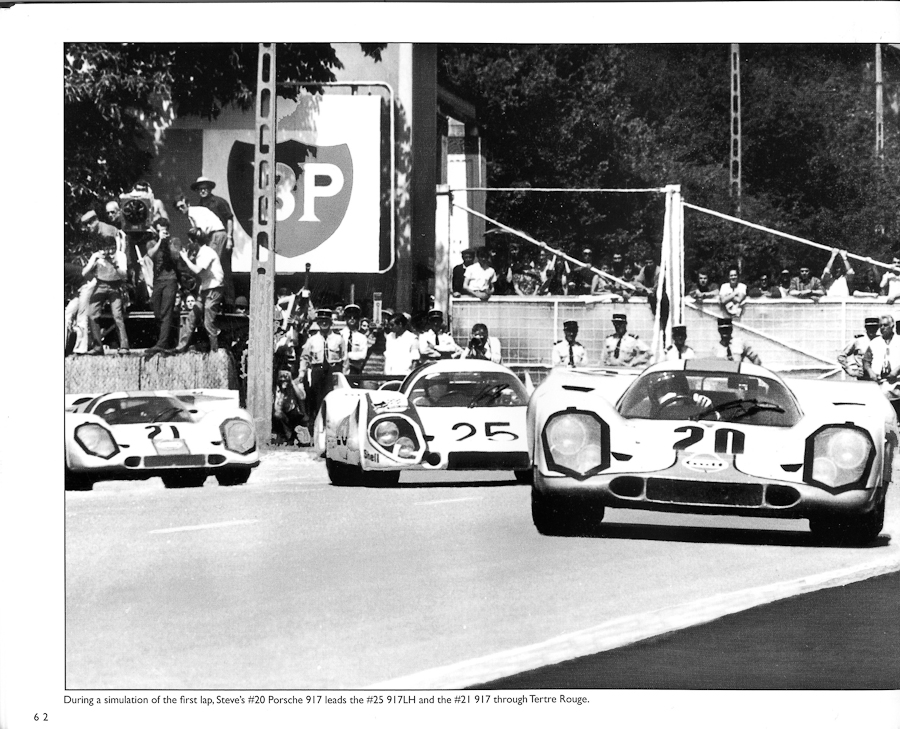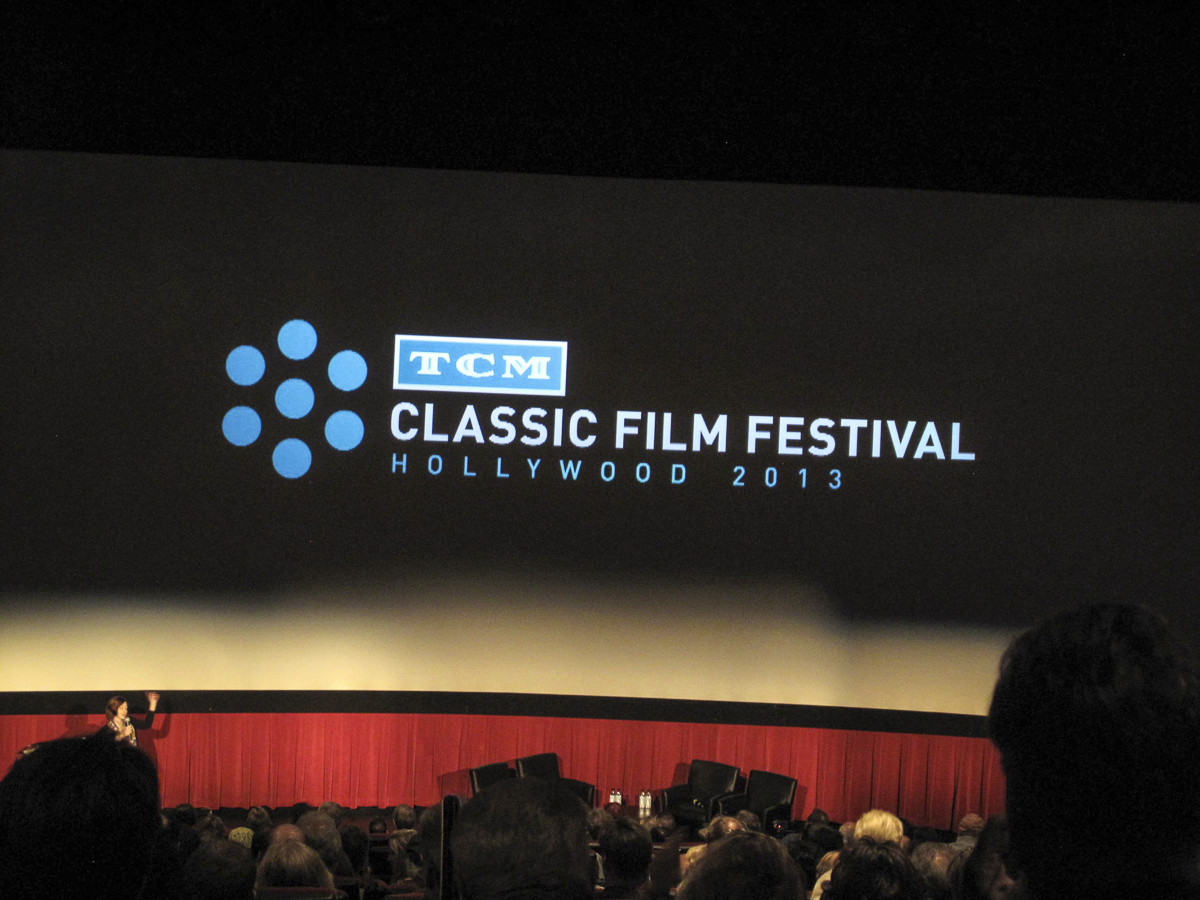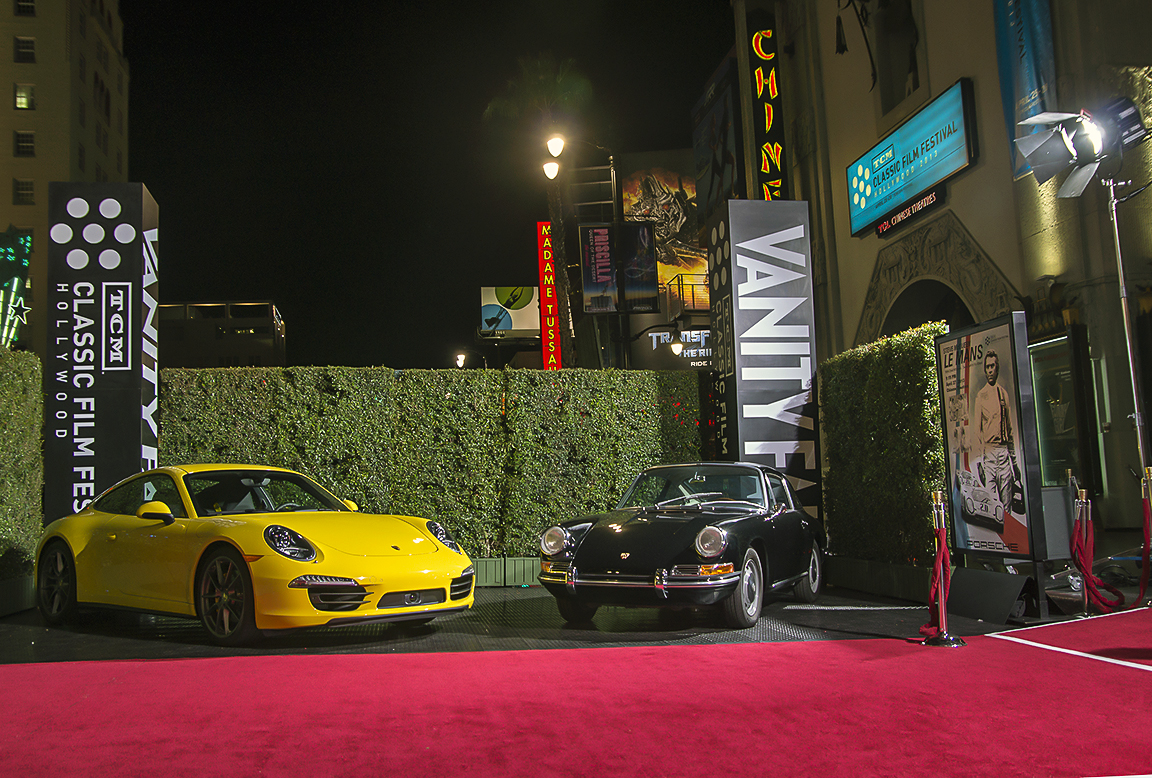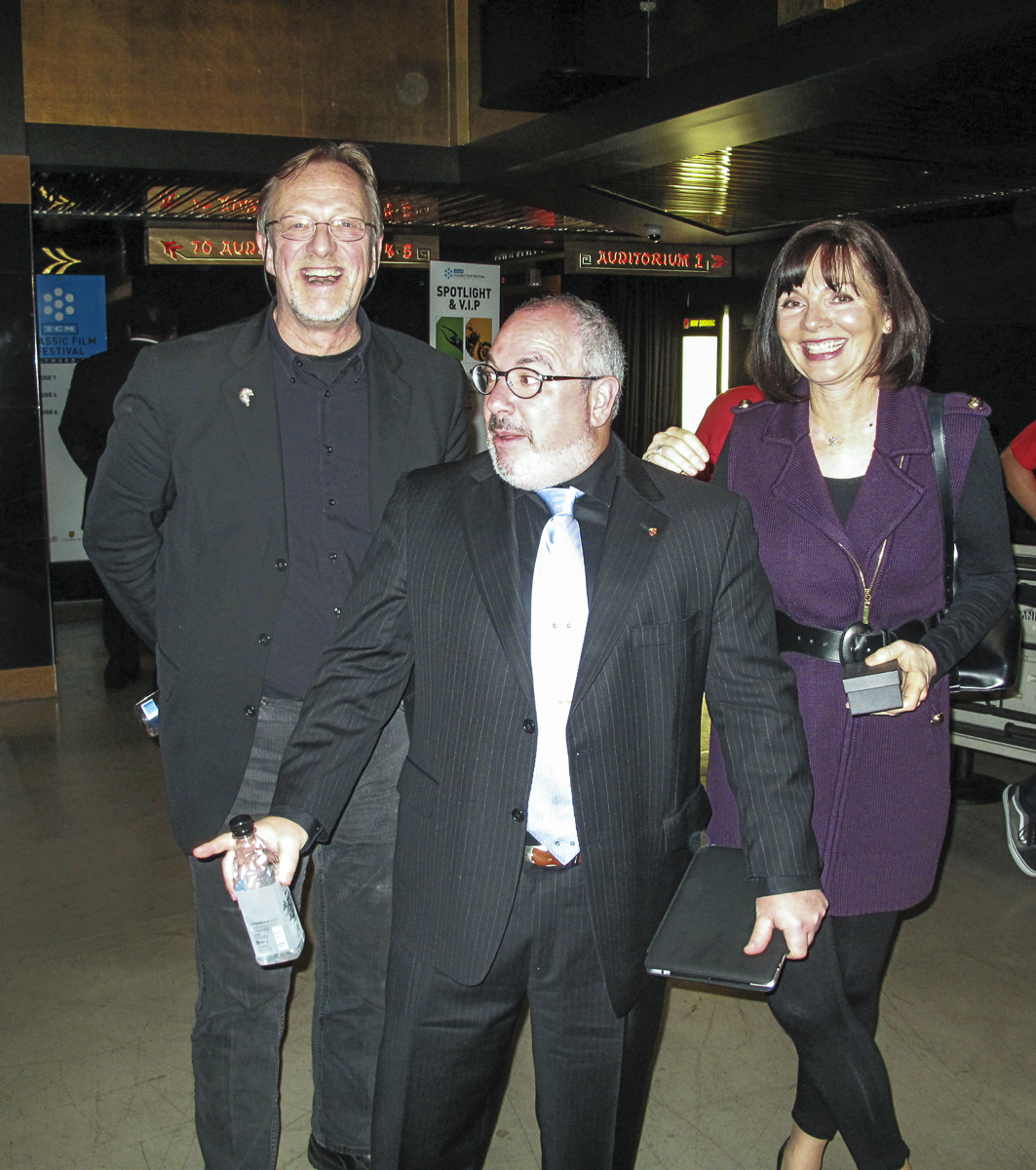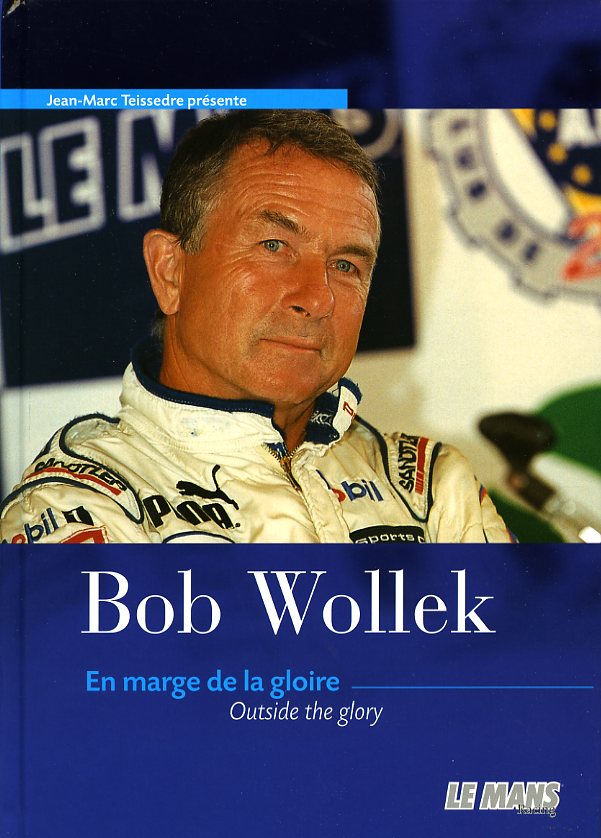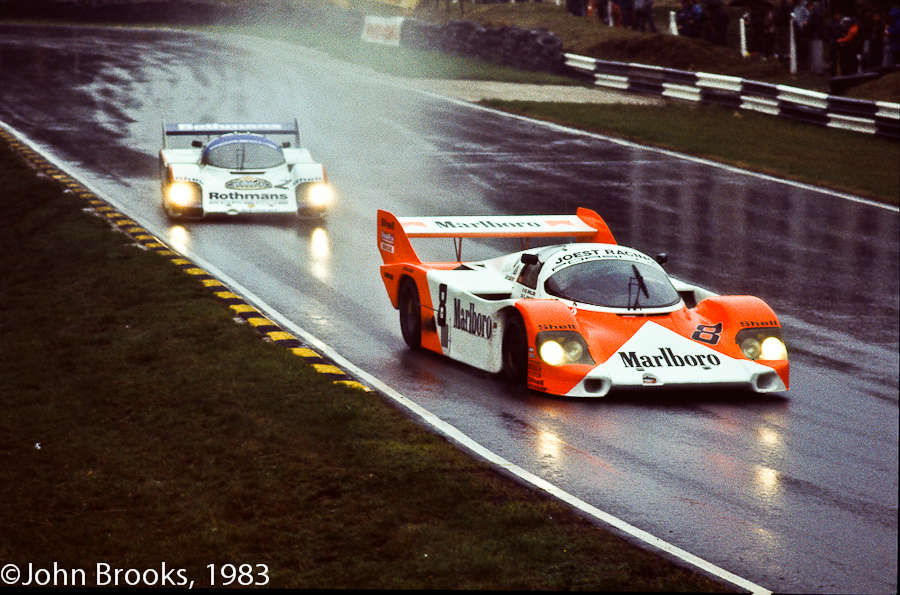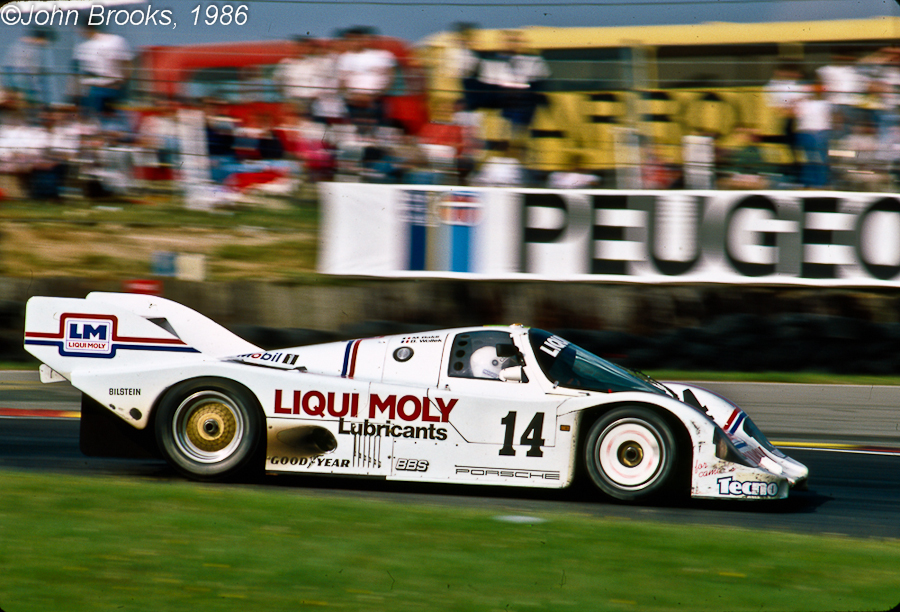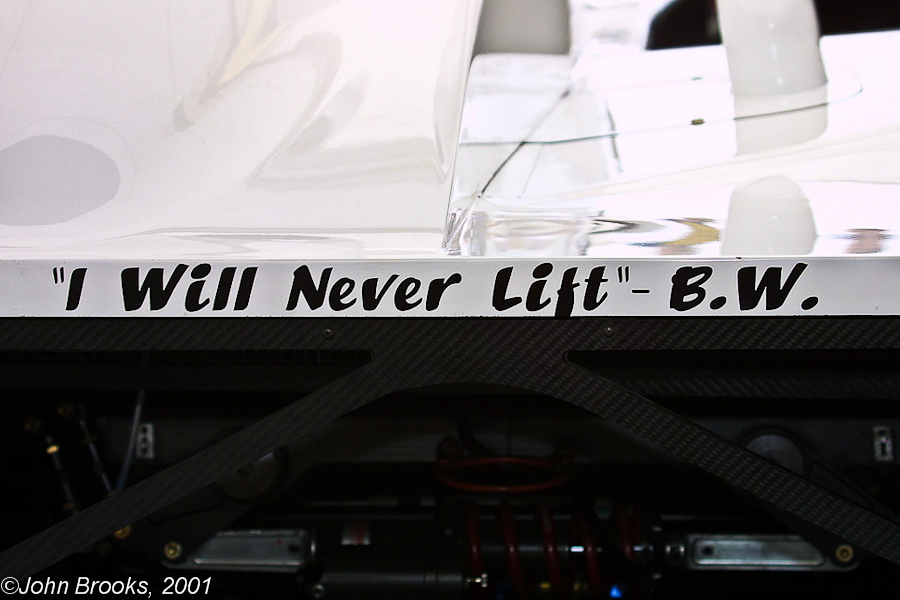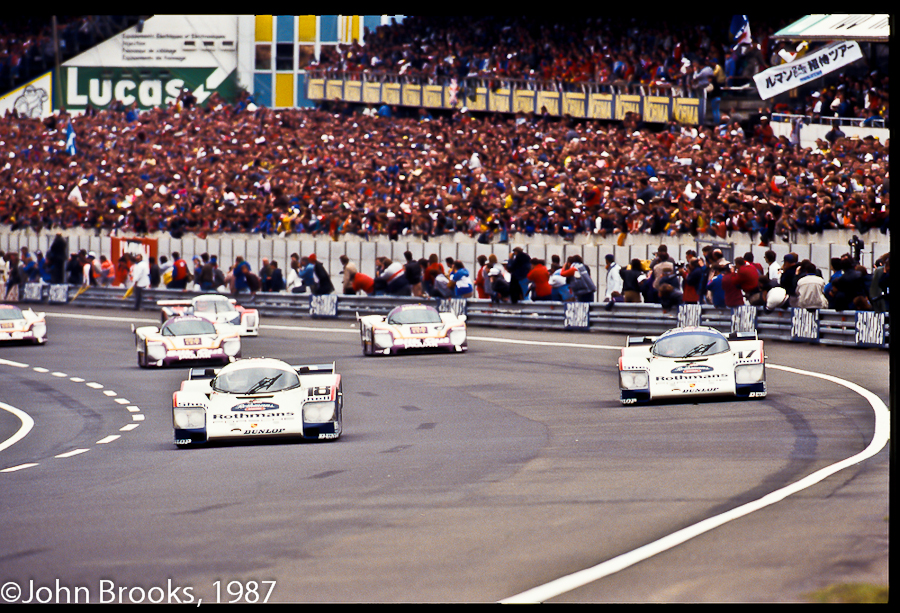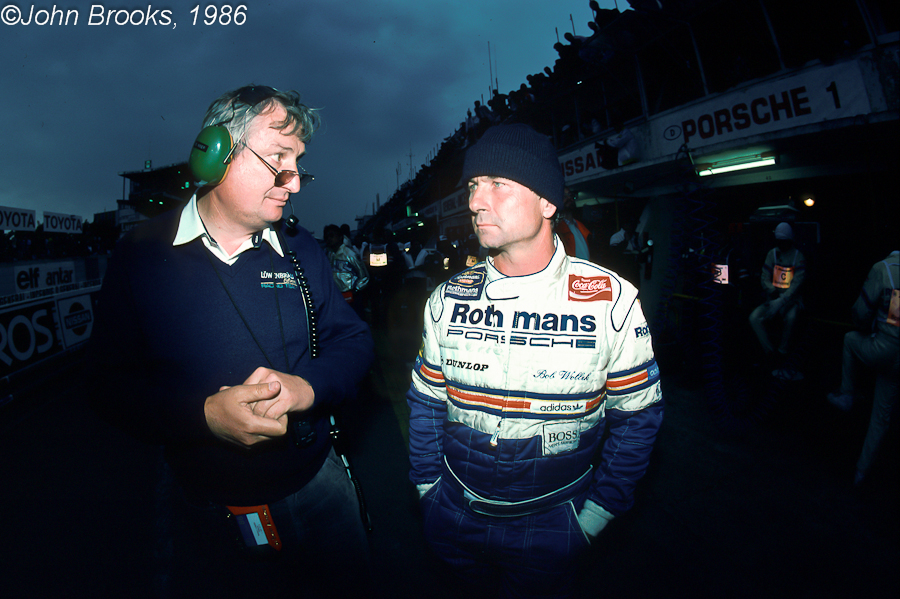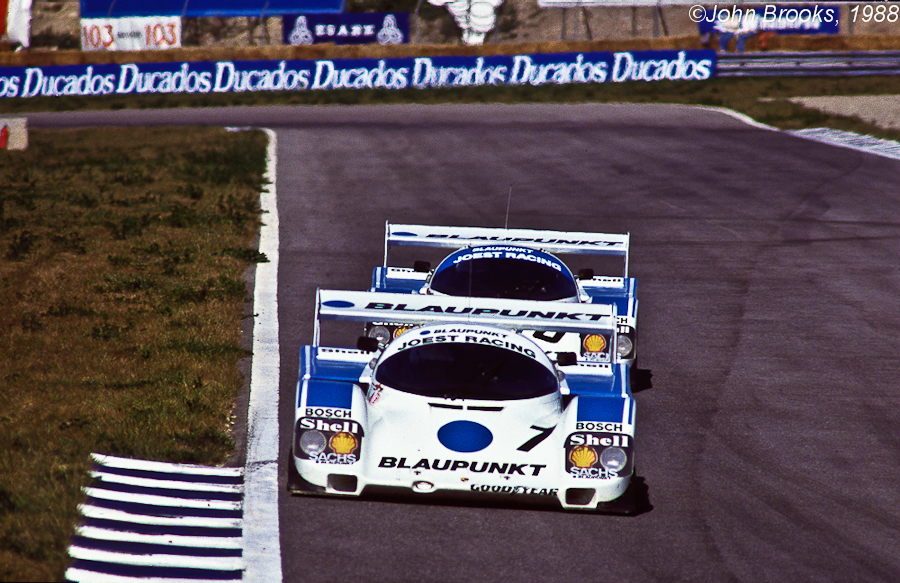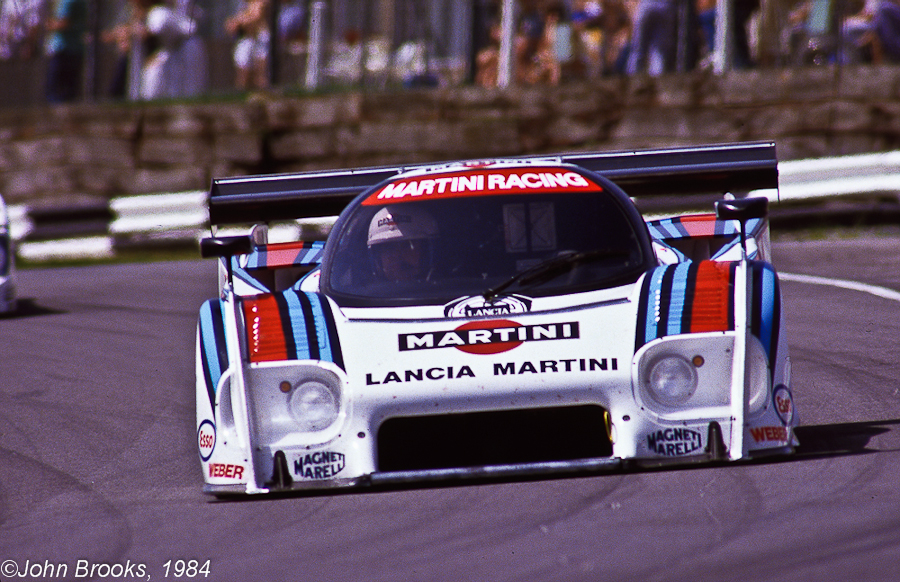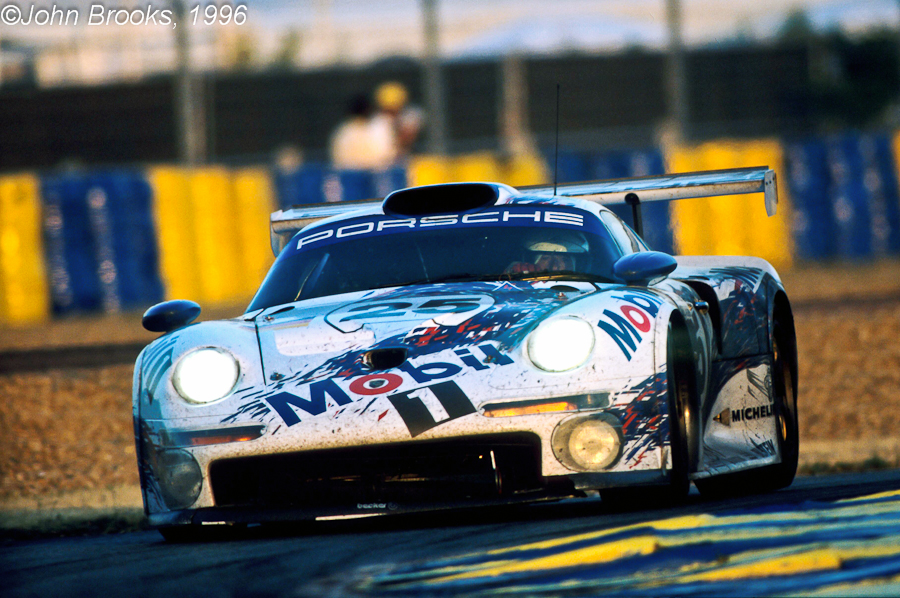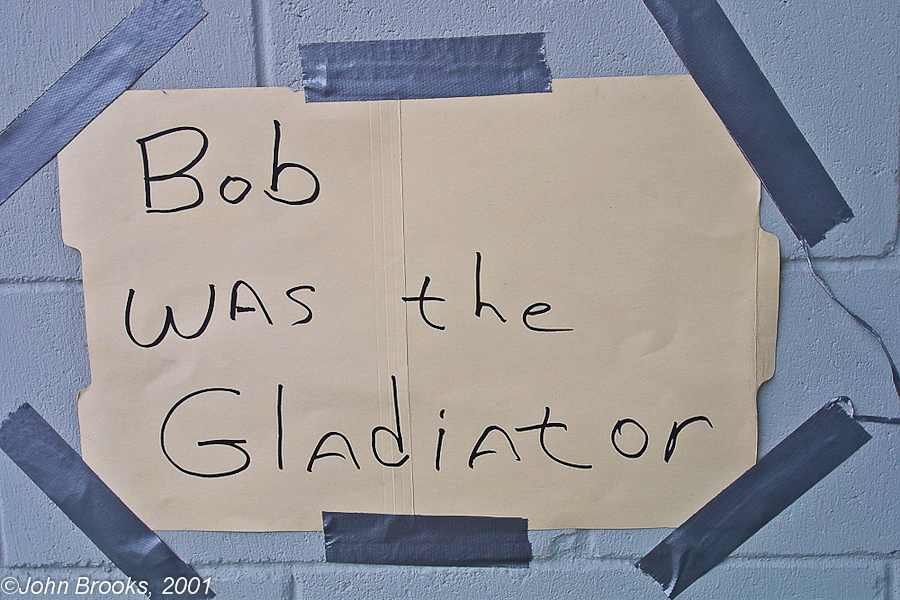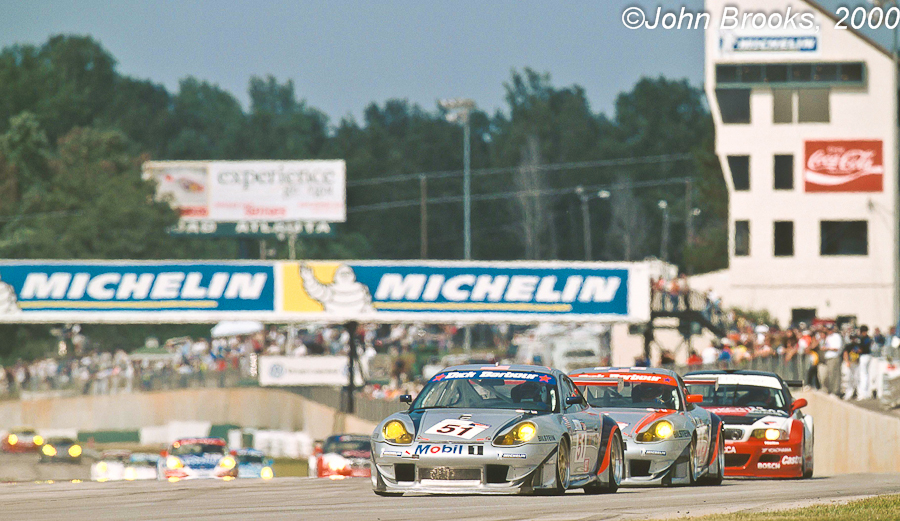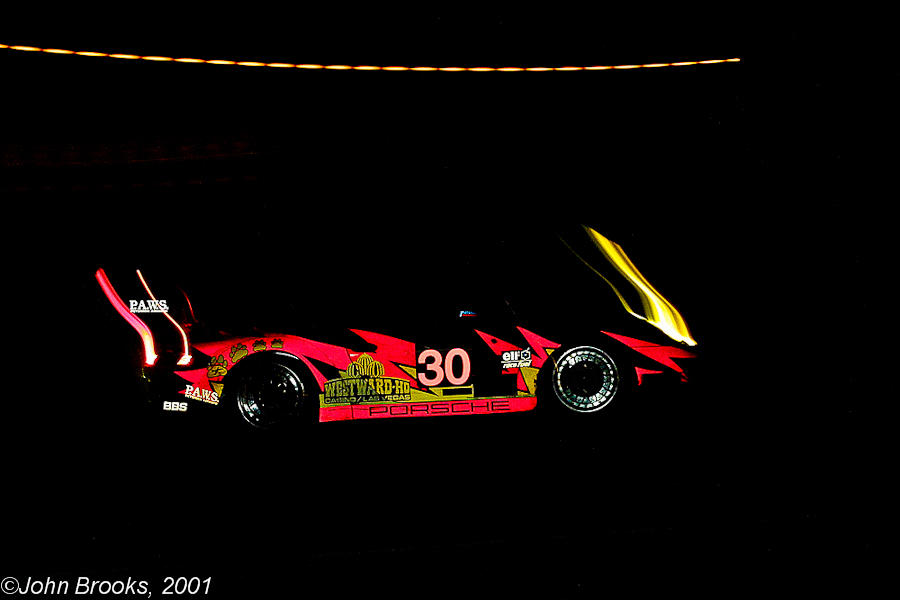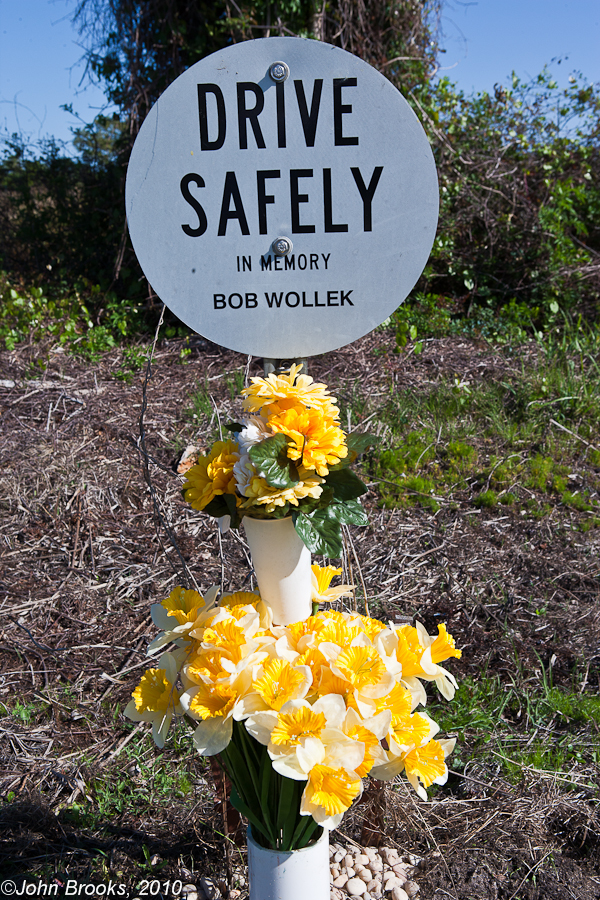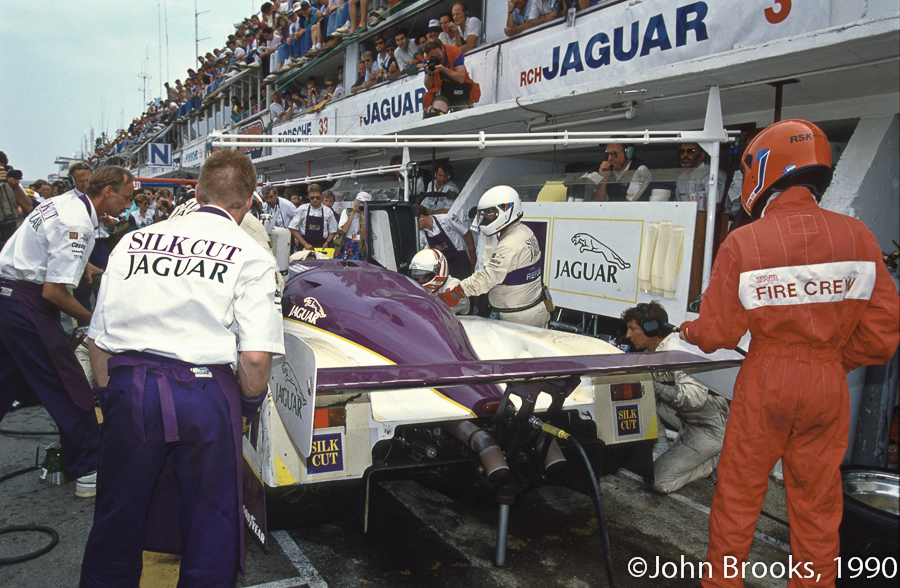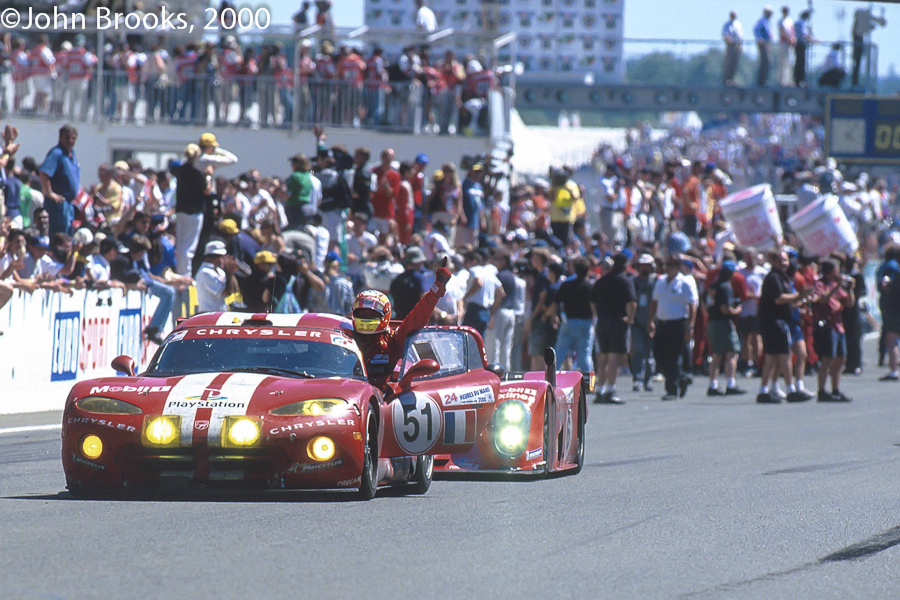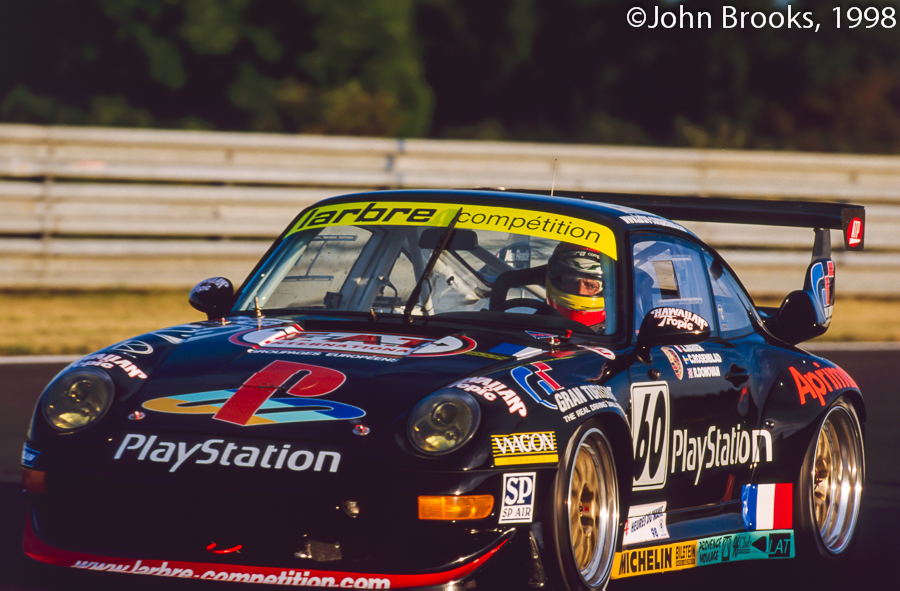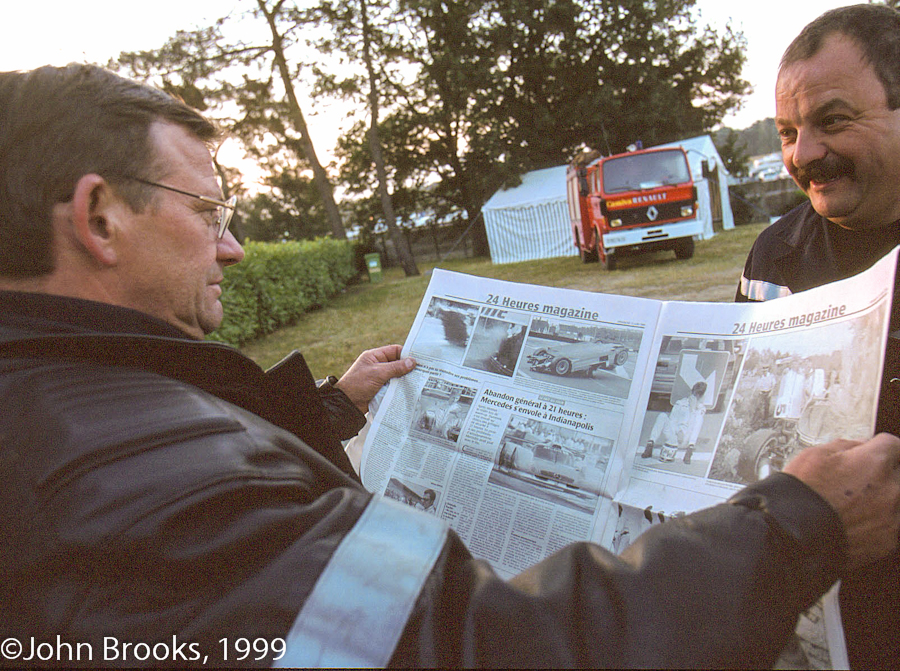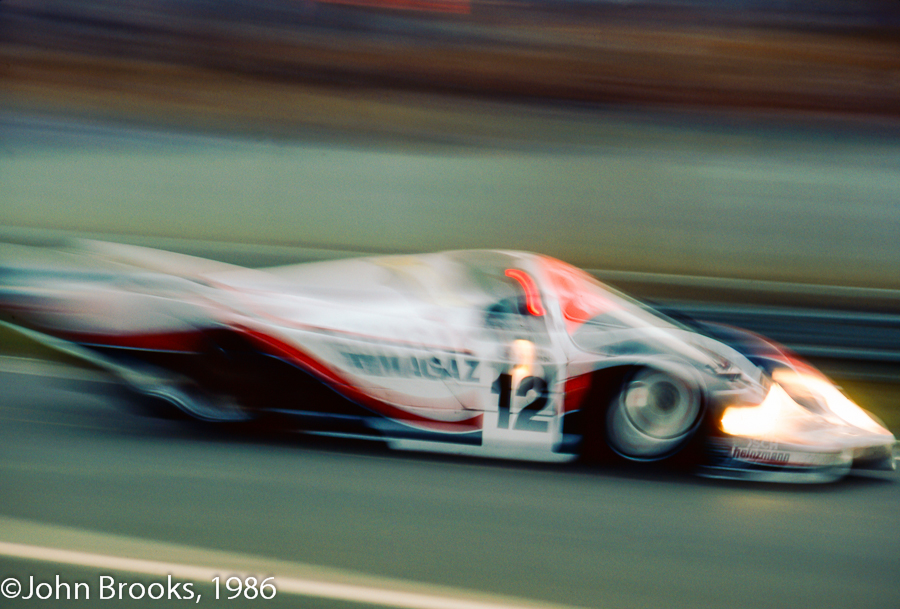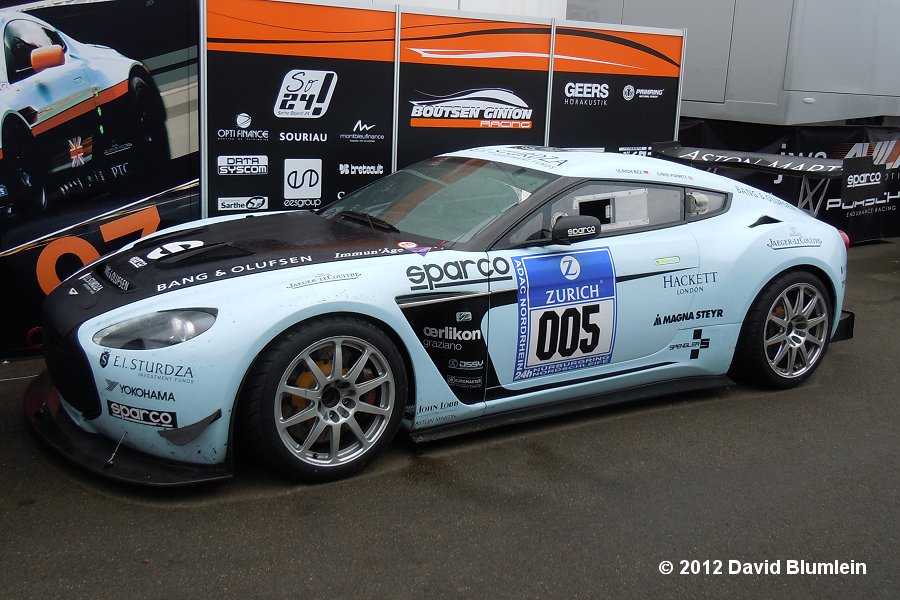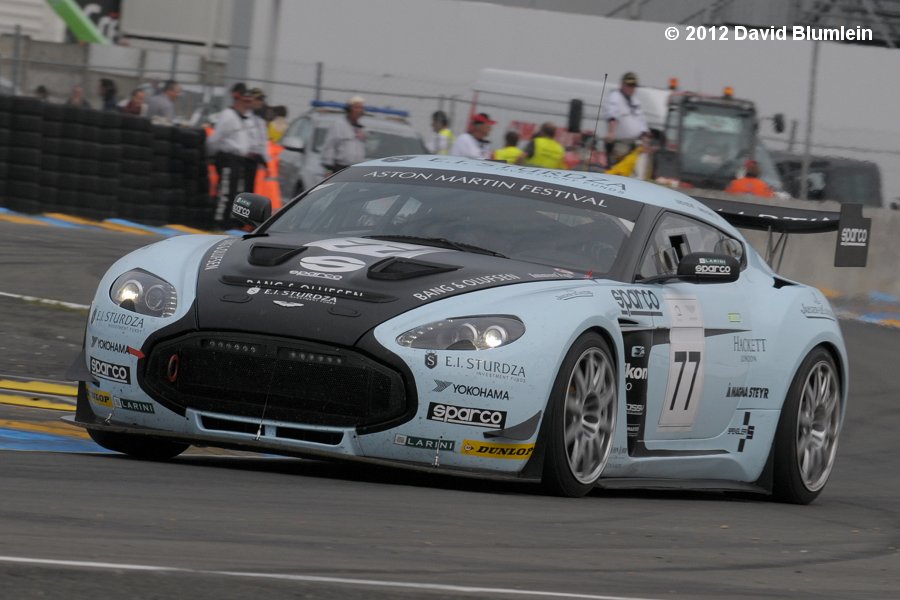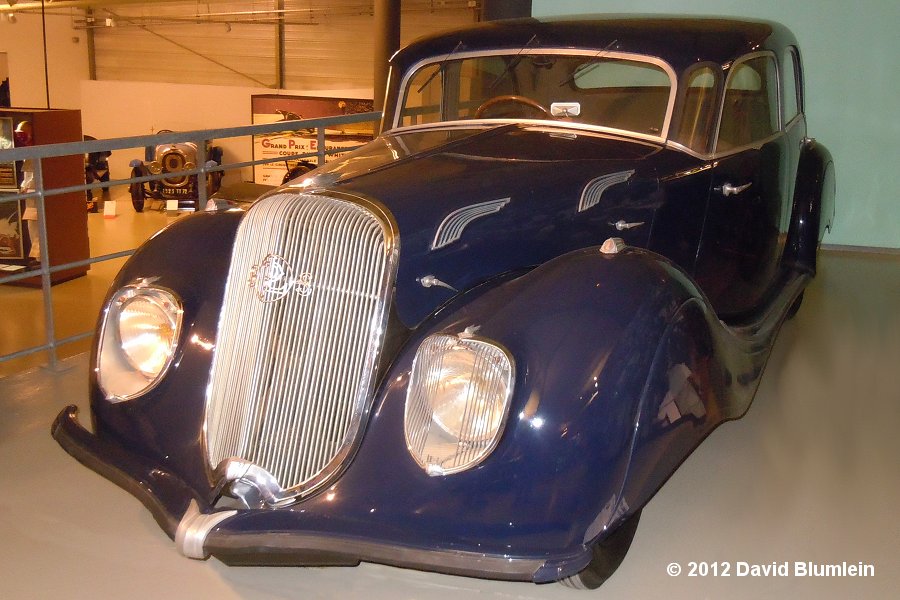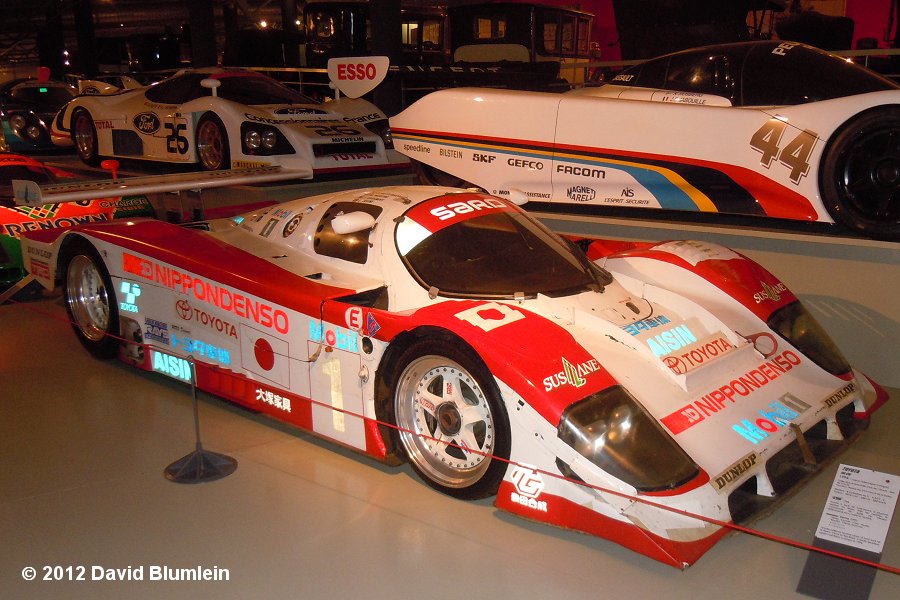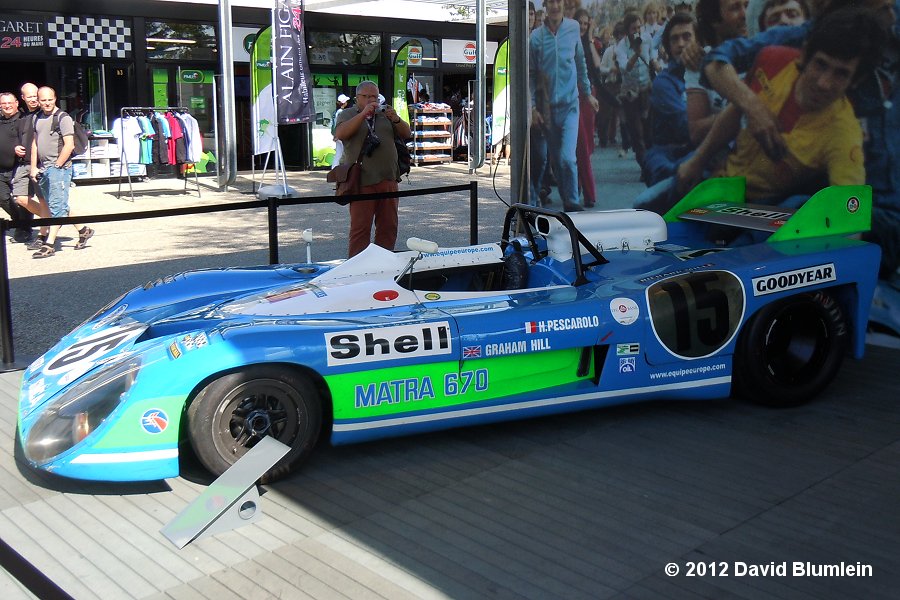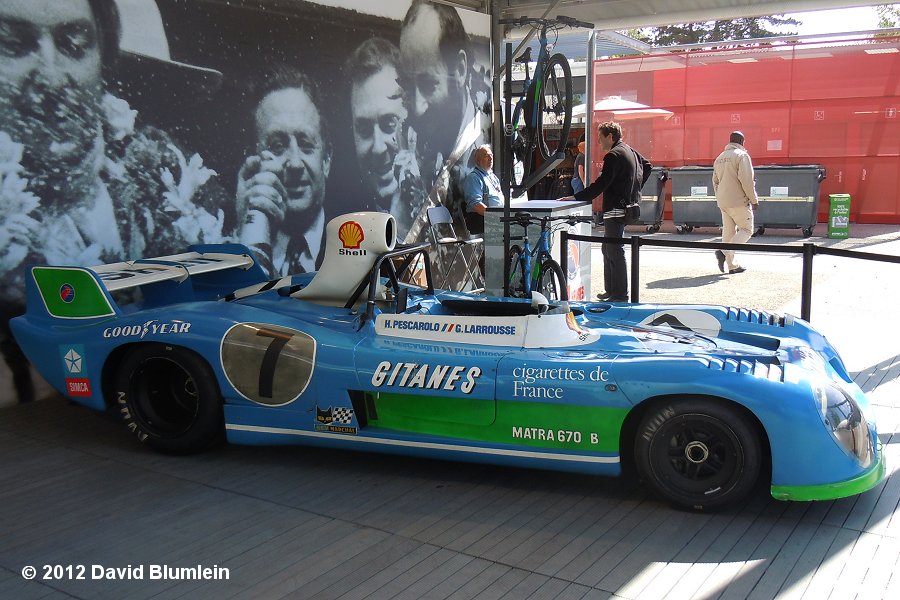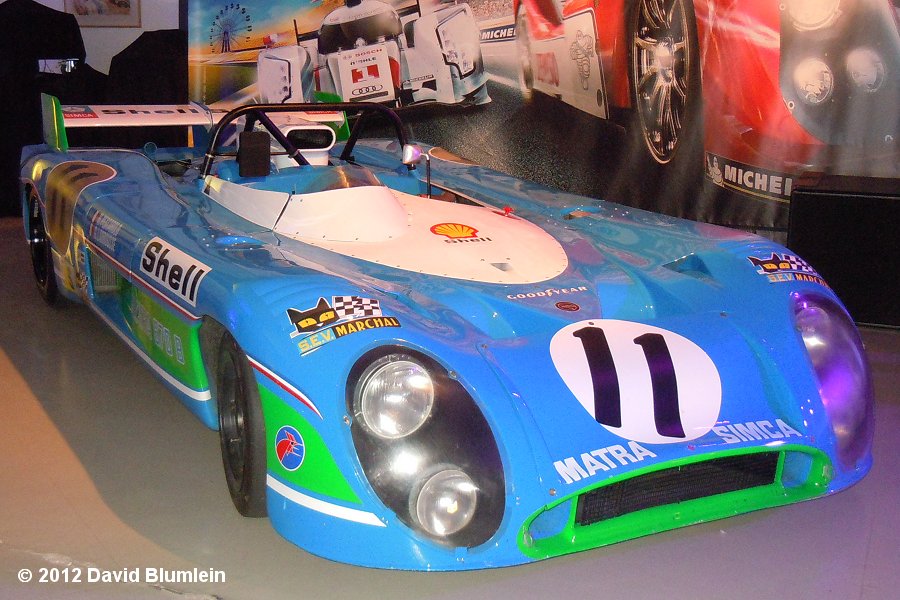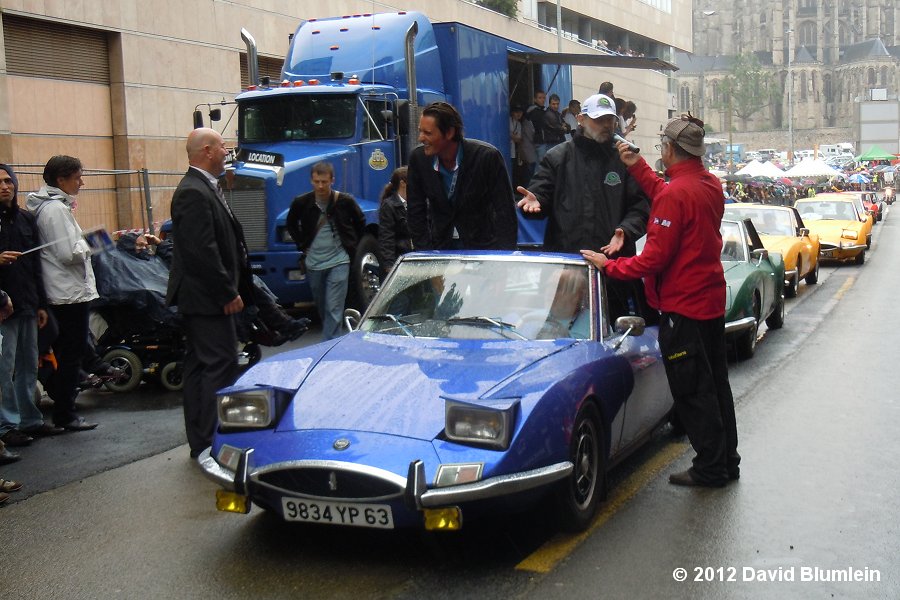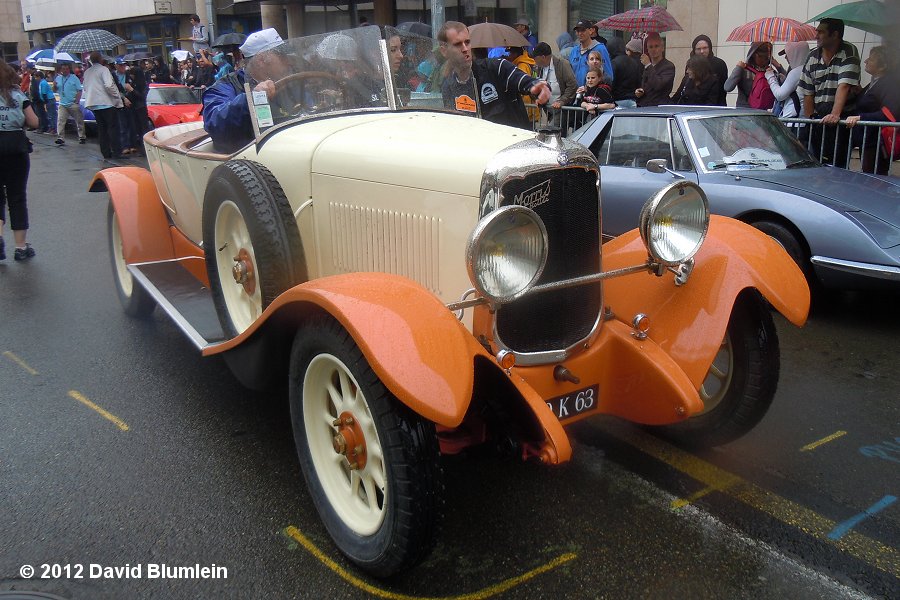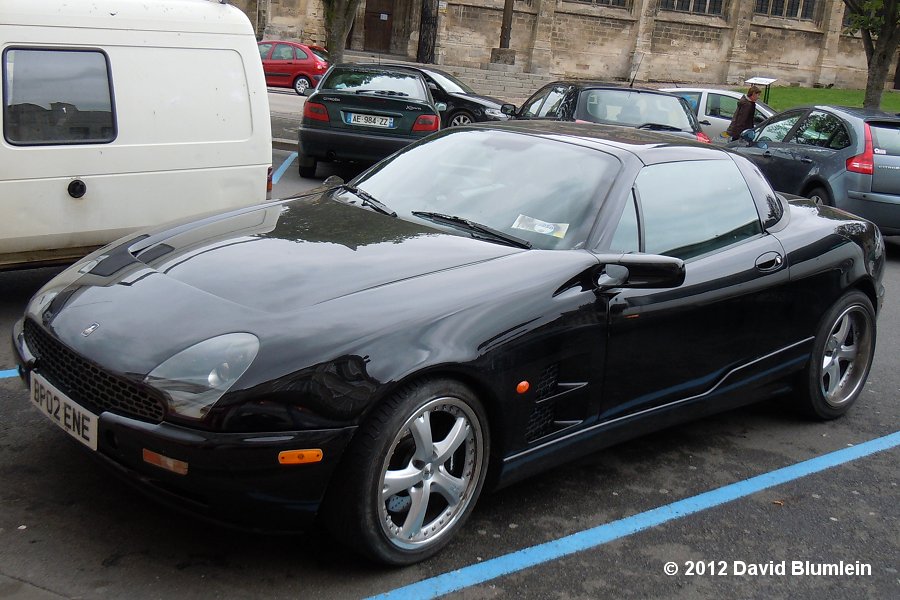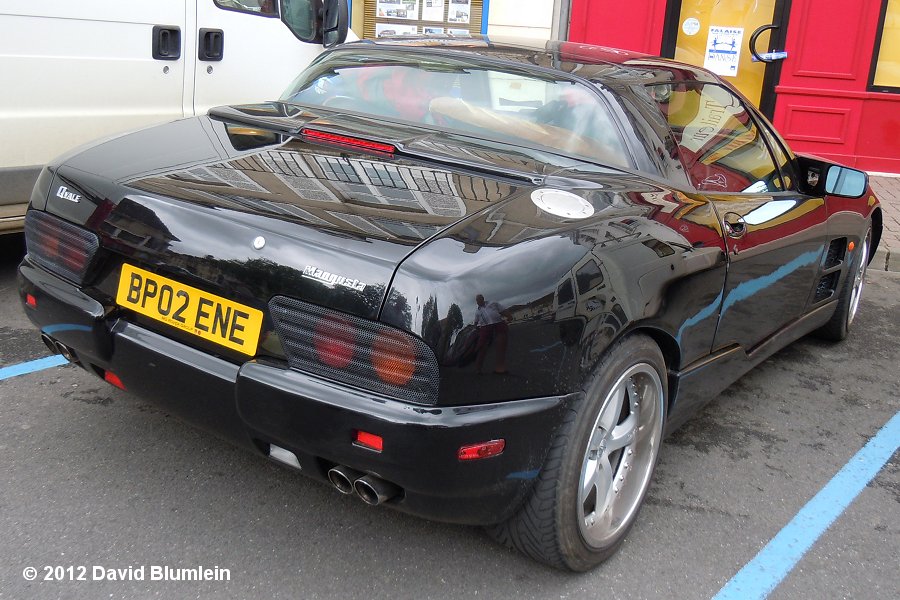DDC is a broad church with its congregation drawn together by a common interest in motoring and motor sport. It has given a pulpit to many fine preachers over the past decade, the latest to join this roll of honour is our old friend, Julian Roberts. Back in 2007 he fell from grace and joined […]
The post My Big Year – The Prologue first appeared on DoubleDeClutch.com.
]]>DDC is a broad church with its congregation drawn together by a common interest in motoring and motor sport. It has given a pulpit to many fine preachers over the past decade, the latest to join this roll of honour is our old friend, Julian Roberts. Back in 2007 he fell from grace and joined the media circus. Over the next few weeks he will recount his path to redemption.
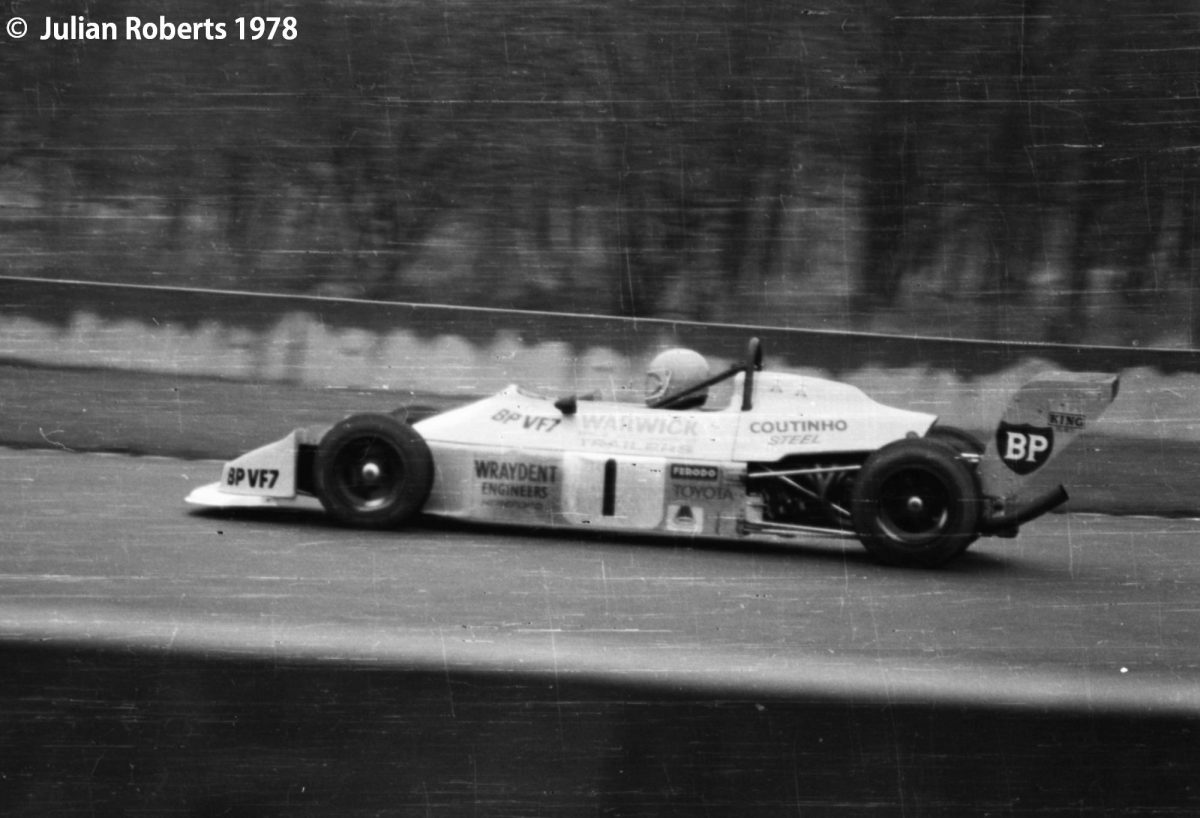
I have been a keen amateur motor racing photographer since 1978 when I bought my first SLR camera, a Nikkormat FT3 with a Vivitar 135mm lens. The first race I attended with my camera was the Easter round of the BP Super Visco British Formula 3 Championship held at Donington Park. As a favour, my close friend Clive offered to develop my film allowing me to see my precious negatives that night, before having them professionally printed the next day. He knew a little about processing as he used to help his father in the darkroom. His father was George Phillips, the chief photographer with Autosport when it was first published in 1950. He had also been as successful racing driver, developing and driving his own MGs at Le Mans in 1949/50/51. George was a lovely old chap with a caustic wit that equally amused or terrified his victims – often me!
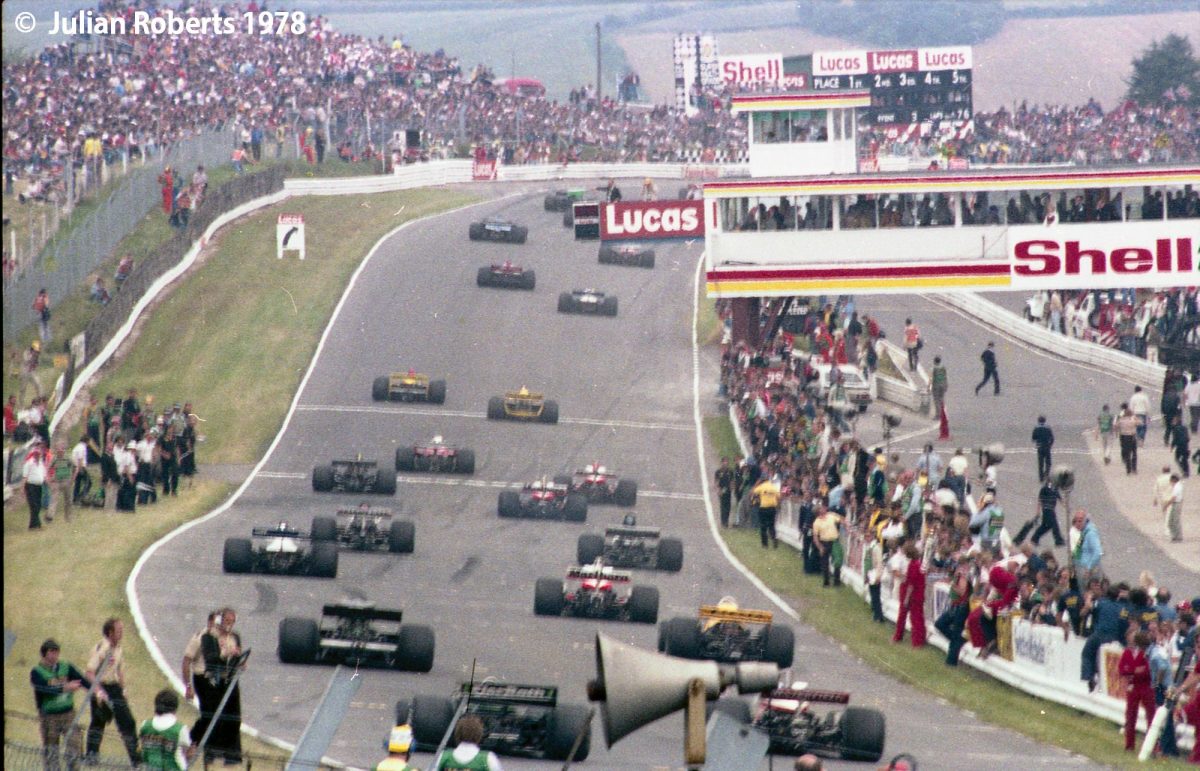
I attended every British Grand Prix and 6 Hour race plus as many ‘clubbies’ as I could get to, usually at Silverstone which is only 40 minutes away.
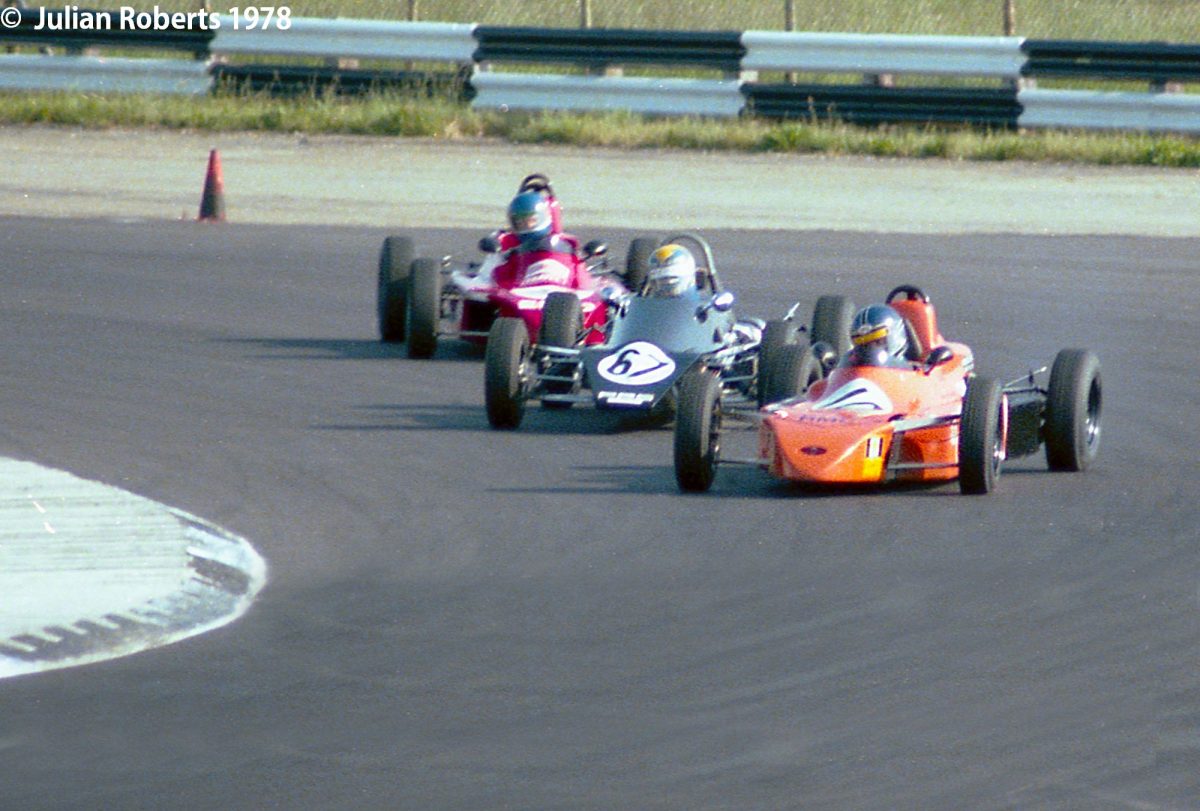
But despite loving Grand Prix racing and devouring Motoring News and Autosport every week and Motor Sport once a month, I was already an Endurance racing fan.
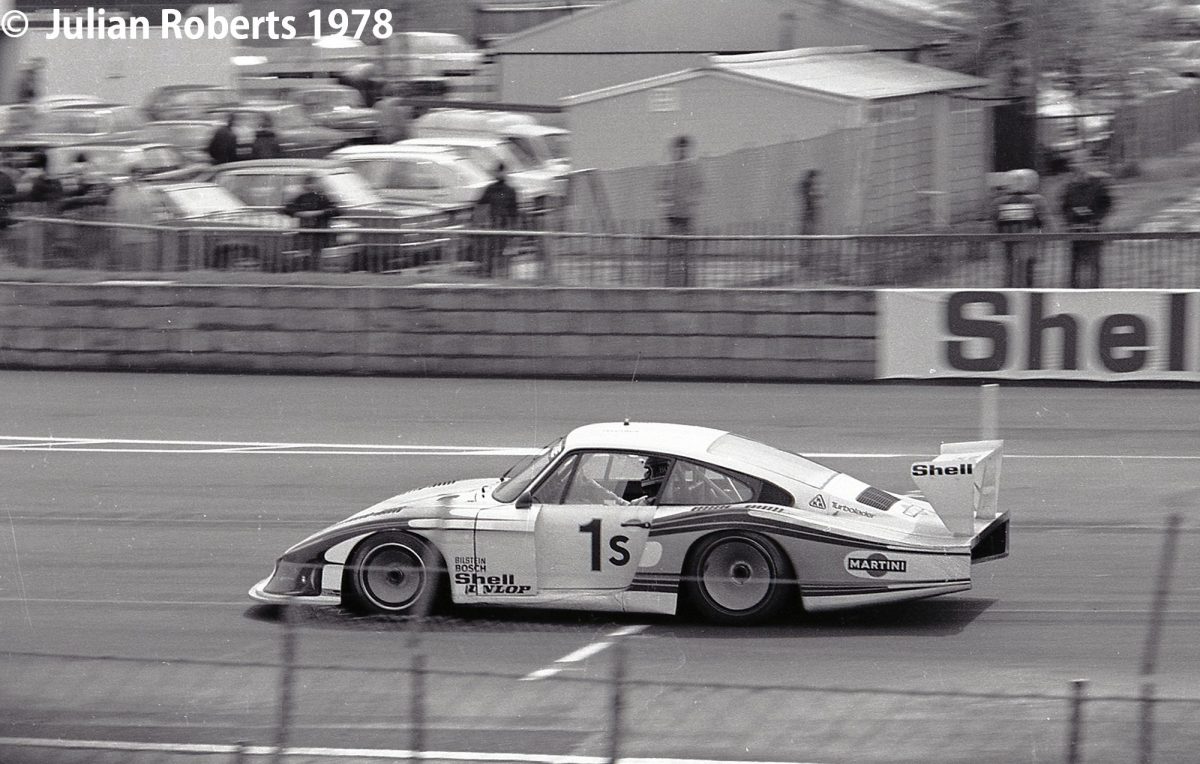
Formula One was great, but a Martini Porsche 935-78 was greater. As soon as I could just, possibly, afford the new Canon A1, I upgraded and also bought Tamron 300mm f5.6 lens. This was a much better combination than my faithful Nikkormat, though I did keep that as a second body.
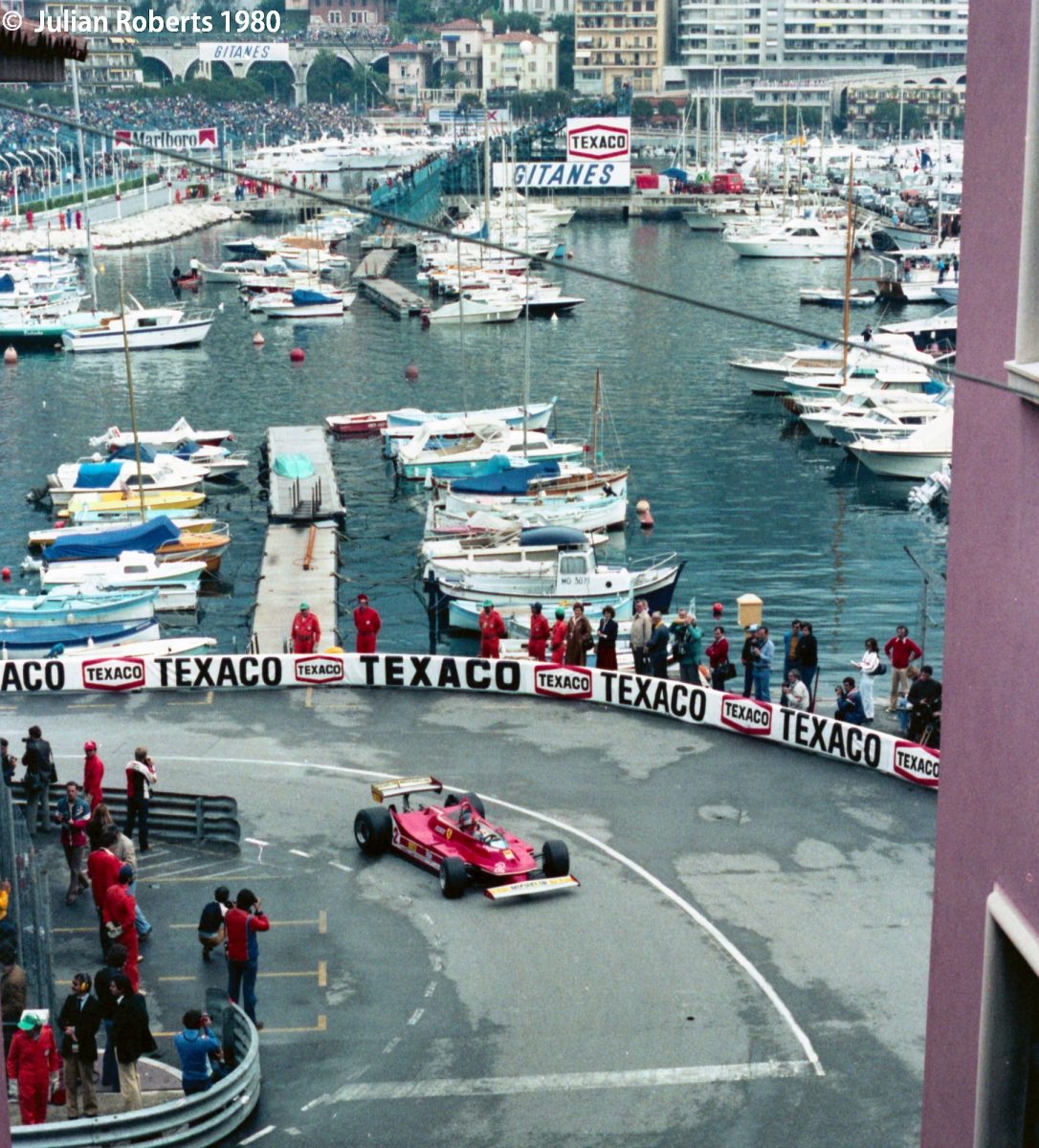
In 1980 as a ridiculously generous twenty-first birthday present, my father paid my share for a two week trip to the French Riviera which included attending the Monaco Grand Prix. Two friends and I rented a villa in the hills above Menton and I found a hospitality package offering grandstand seats just beyond Ste. Devote and lunch in the Restaurant Quicksilver which was located beneath, near Tabac corner, I think it was £50 each! We missed Thursday practice and watched Qualifying from the grandstand opposite the swimming pool. I shot three rolls of film from there and another roll from our grandstand during the Sunday morning warm up. I have some excellent images from that weekend, but I think my favourite is one I literally snatched on the way to the boat taxi which would take us across the harbour to the swimming pool grandstand. In a gap between two buildings there was an aerial view of La Rascasse. Being hurried along I hastily snapped five shots and left.
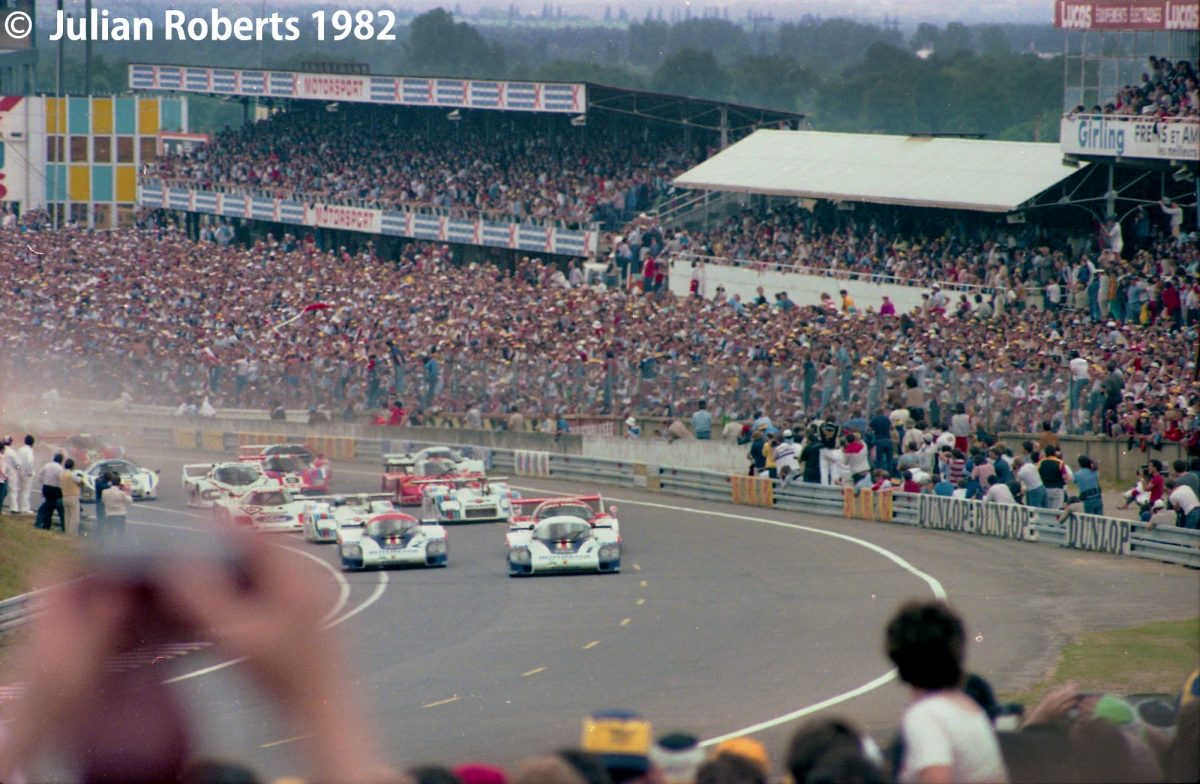
In 1982 I finally got to visit Le Mans and began a love affair which is still as strong today after 23 events. Incidentally, this is the first photo I ever took at Le Mans, spoiled somewhat by the chap in front holding his camera at arms length above his head, though I mustn’t complain as I doing exactly the same thing! I had arrived at the first corner too late to get a clear view and held my camera aloft finger on the shutter and hoping. With the motordrive I managed 10 shots, but this was the best.
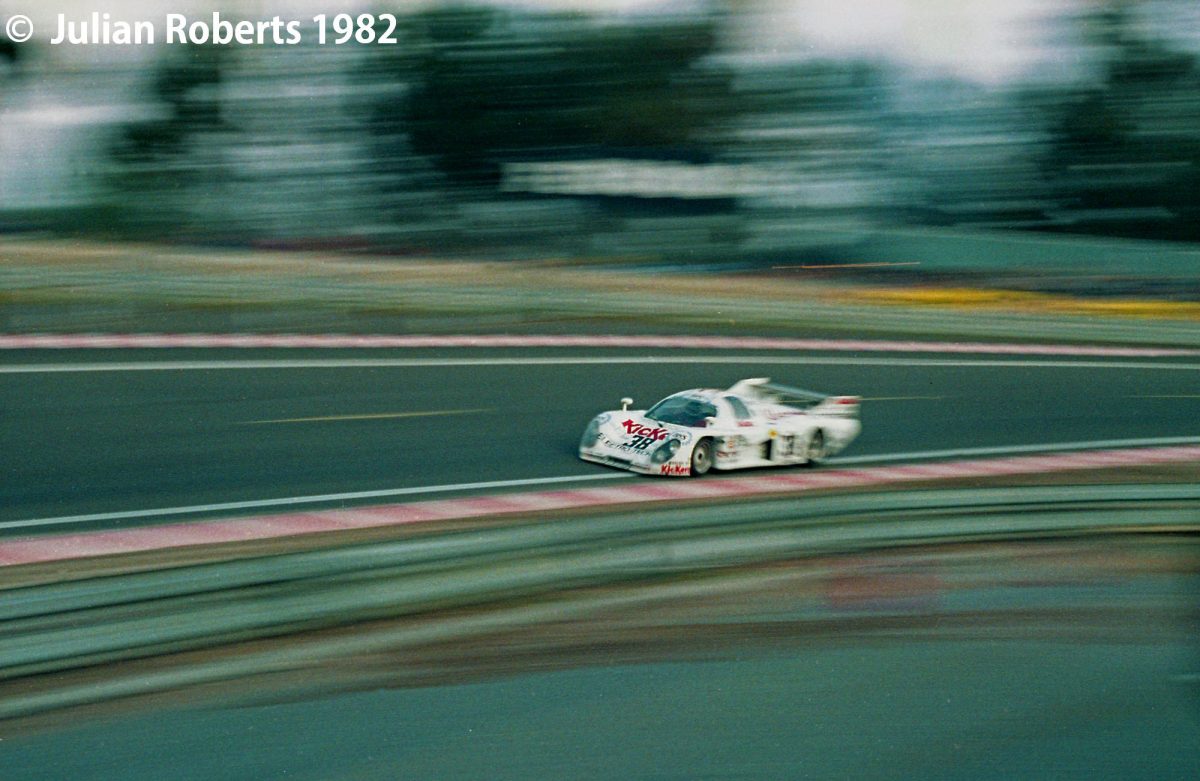
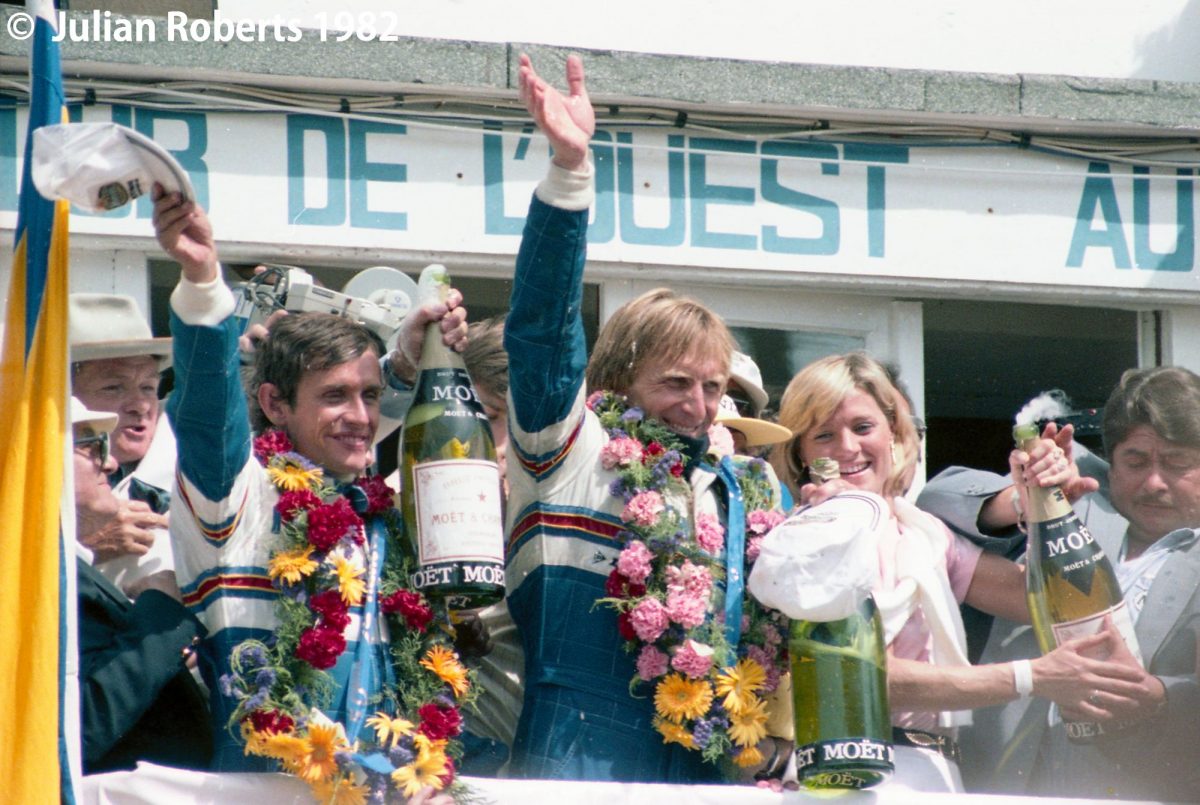
I stayed trackside for 18 hours and although I only shot three rolls of film all weekend I am still very pleased with my results shooting from the Tribunes.
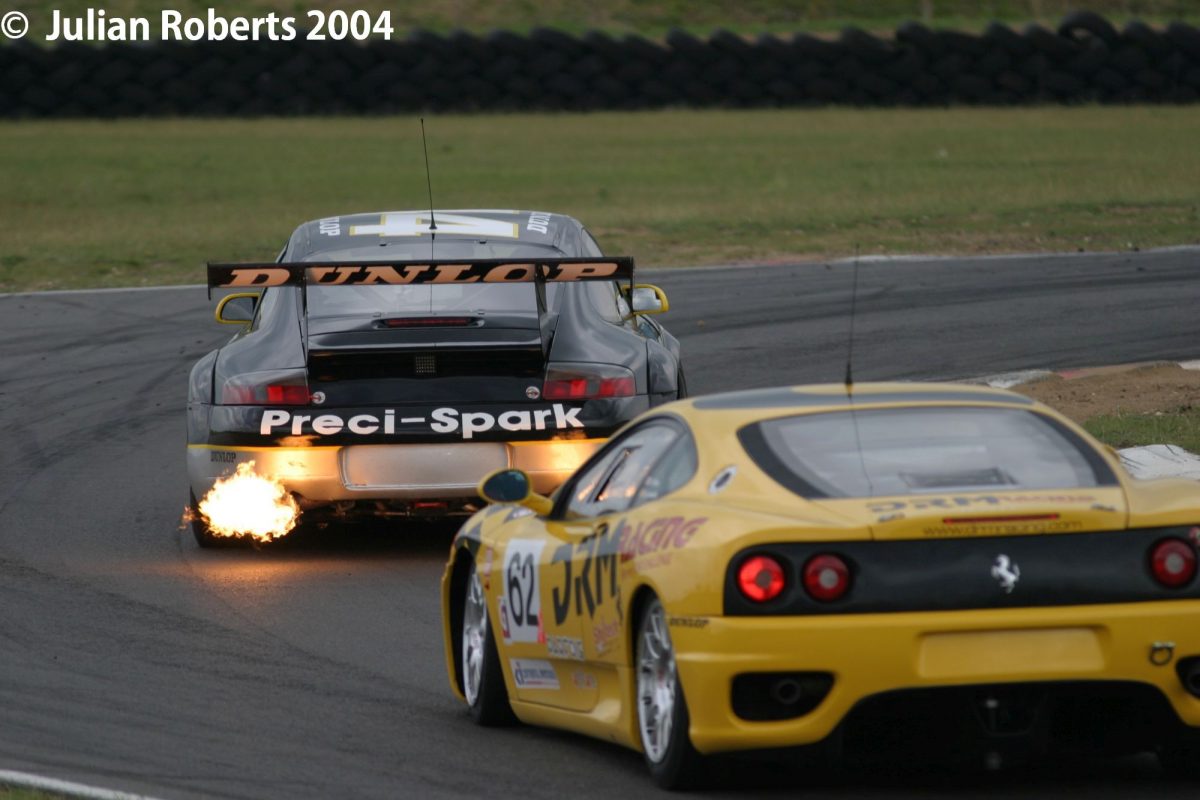
By 2004 used digital SLR cameras were becoming affordable and with some trepidation, and against all advice, I ordered a year old Canon EOS 10D and 28-135mm kit lens from an American seller on ebay. I also added a new Canon EF300 F4 L IS USM together with a Canon X1.4 extender from Digitalrev (again via ebay) in Hong Kong – back in 2004 it was by no means usual to pay hundreds and hundreds pounds, in advance, to unknown foreign sellers hoping they’ll do their stuff. They both did, in fact I still buy from Digitalrev today. What became of my faithful friend of 26 years the Canon A1? I sold it and all my analogue gear immediately and without a qualm ! The 10D (not forgetting my beautiful L lens) was a game changer. I was now able to produce very good work consistently. Because I was able to critique my shots on the go, I quickly learnt much more about proper exposure and to alter ISO as and when required (remember on film I was stuck with the film’s ISO and never beyond 800). My first time out with the 10D was a round of the British GT Championship at Snetterton.
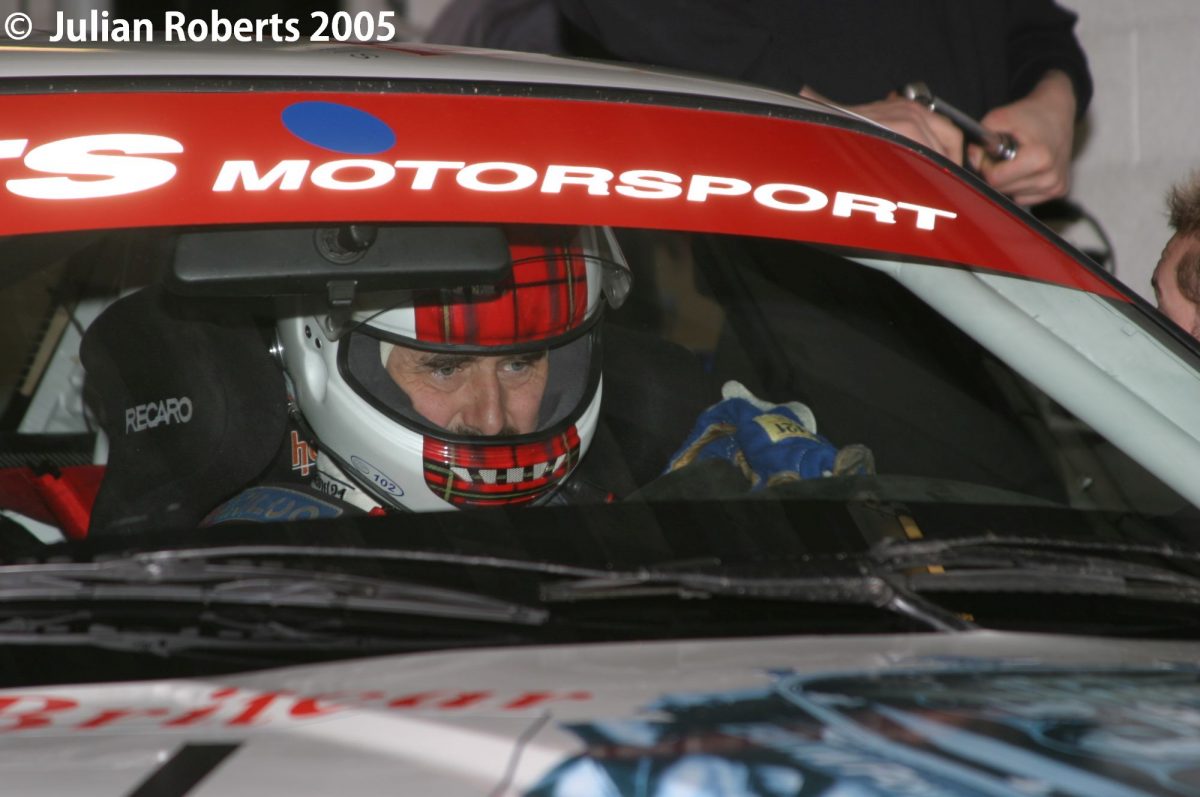
As my photography improved so did my desire to share my photos with a larger audience. I had been an early convert to Malcolm Cracknell’s excellent websites SportsCarWorld.com and TotalMotorSport.com and then DailySportsCar.com. So in 2005 decided to go to the opening Britcar meeting at Silverstone and ‘pretend’ I had received a commission from him to cover the event.
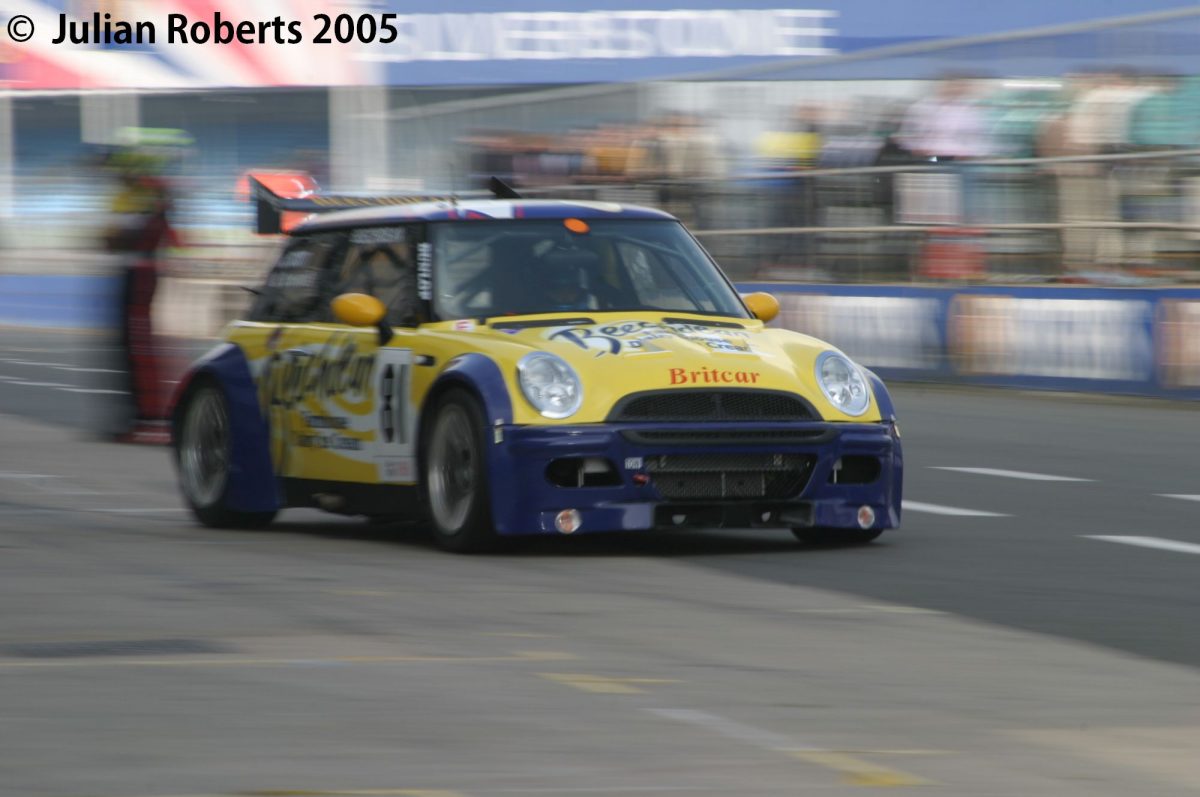
My intention being to submit my photo’s as a sort of visual c.v. I spent a lot of time in the paddock and pit garages and eventually the pitlane as I could take better photos there than through the tall fences synonymous with Stalag Silverstone.
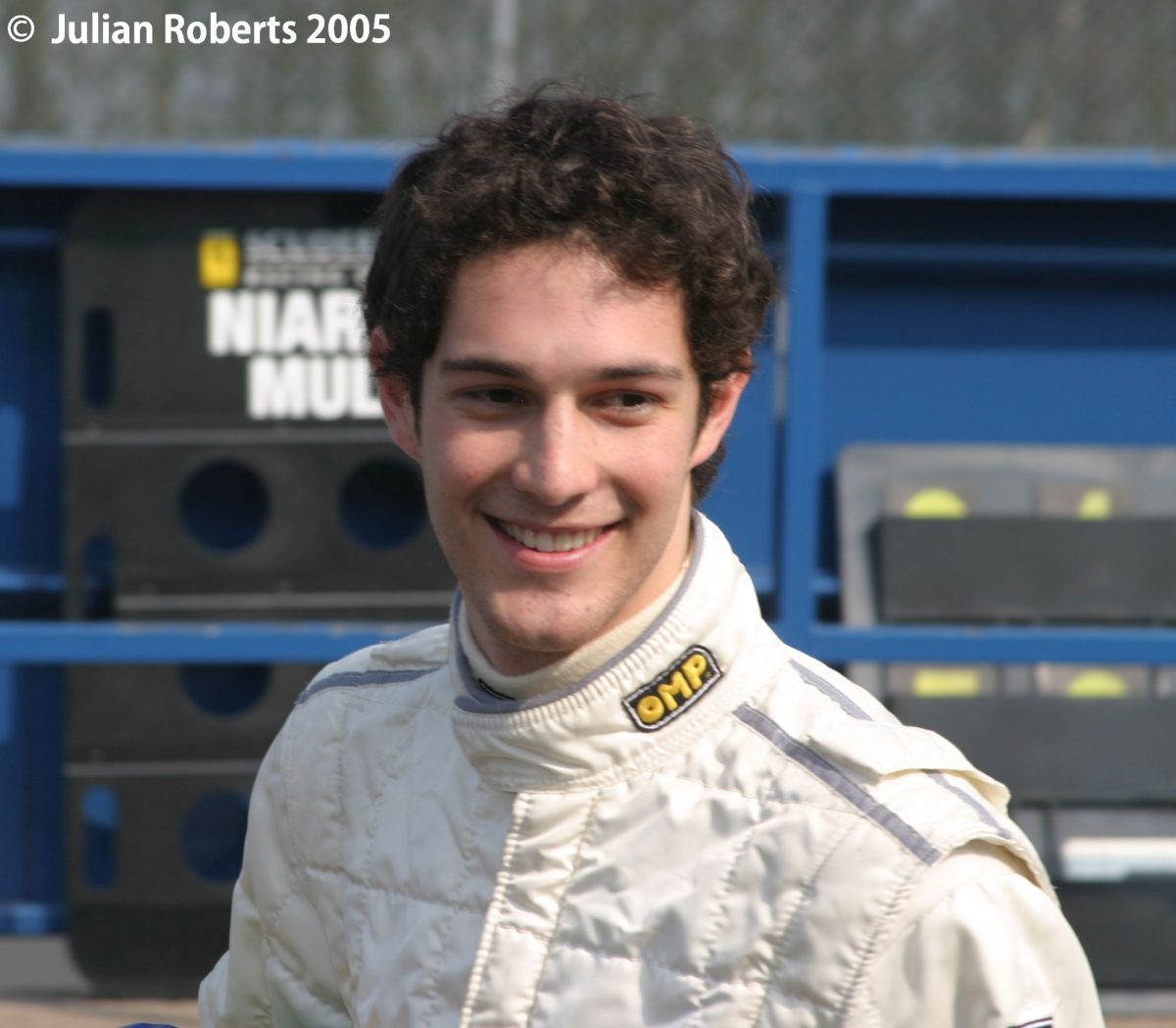
I selected a dozen of what I considered to be the best and emailed them to Malcolm. He was very pleased and used some of my images in his report. He also asked me to go the Donington for the opening round of the British GT Championship.

Arriving at Media Accreditation bursting with anticipation I was quickly brought back to earth with a bump; there was no media pass and I was expected to pay for my entry ticket! Hmmm. Oh well, I hadn’t driven 90 miles to turn around so I paid up and went to find my contact, Graham Goodwin. GG gave me a quick tour of the pitlane pointing out favoured teams to pay extra attention to and that was it.
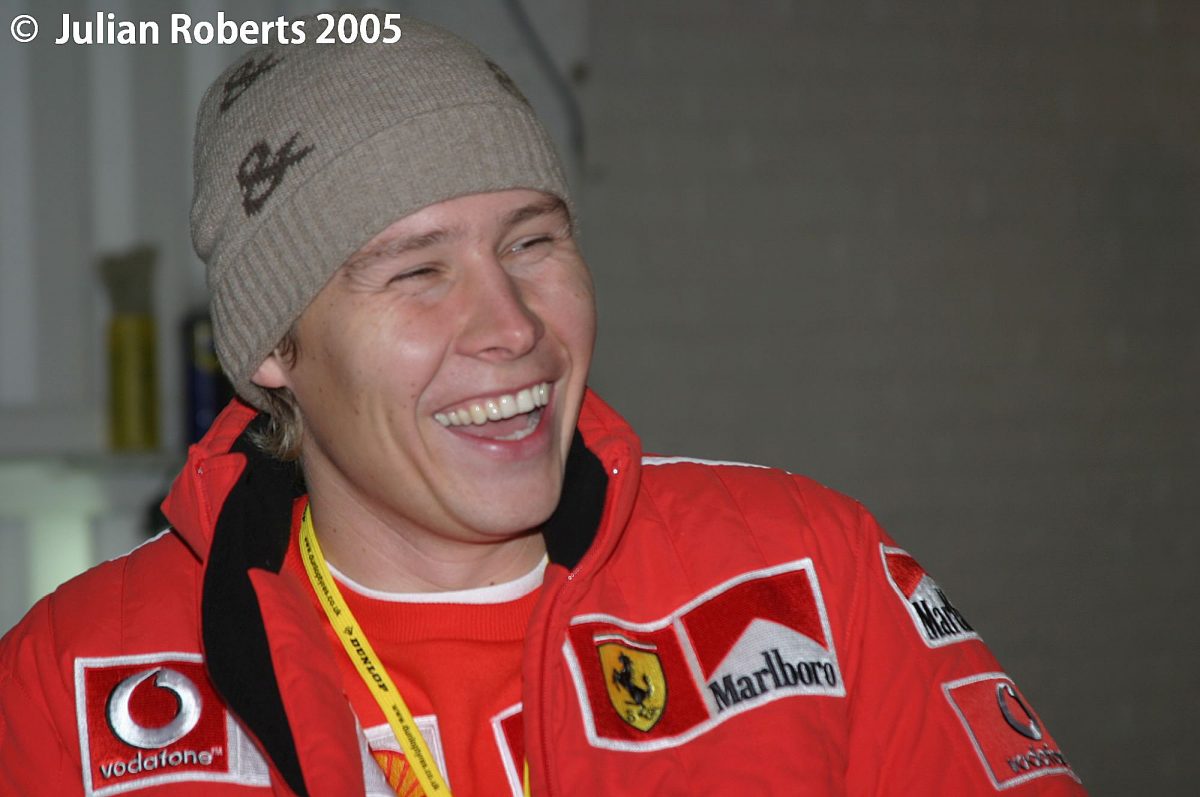
I made myself busy and, as usual, roamed the pitlane as if it were my own. To my wife’s irritation I arrived home about 7pm and spent the next 4 hours editing photo’s for submission to DailySportsCar.com. I got a few more gigs from DSC but in every case I had to contact them and offer my services for free rather than be asked. So I continued as an amateur snapper peering through the fence, a totally free agent, photographing what I liked.
In late 2006 my employers (a North African oil producer) announced they were to close all European operations and I was to be made redundant in 2007 after 20 years. By now I was 48 and (thankfully) financially stable. So on a bit of a whim I decided to give myself a redundancy present and take a year discovering whether I had what it takes to be a freelance motorsport photographer.
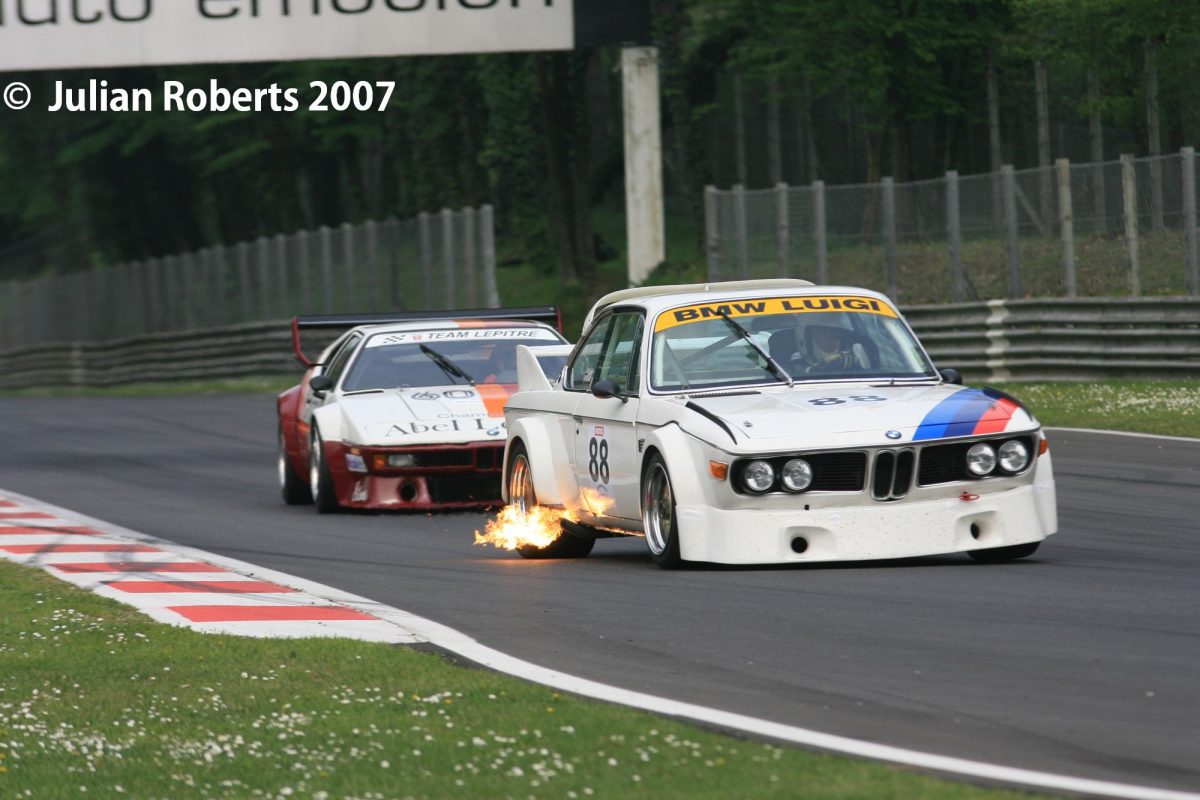
I knew of Martin Krejci’s superb website RacingSportCars.com and had been contributing my images to him for a number of years. With this in mind I had the idea to contact him and suggest I apply for media accreditation acting as his photographer, he agreed. In early 2007 I applied to the FIA GT Championship, the Le Mans Series and, heart in mouth, the ACO. After a bit of form filling, a lot of emails, and supplying website traffic statistics to the ACO, all three accepted me. WOW !
No longer would my humble EOS 10D cut it as my main camera, so I bought a year old Canon EOS1D MkIIN and a new Canon EF400 DO IS USM plus a Pelicase to cart it all around Europe in safety.
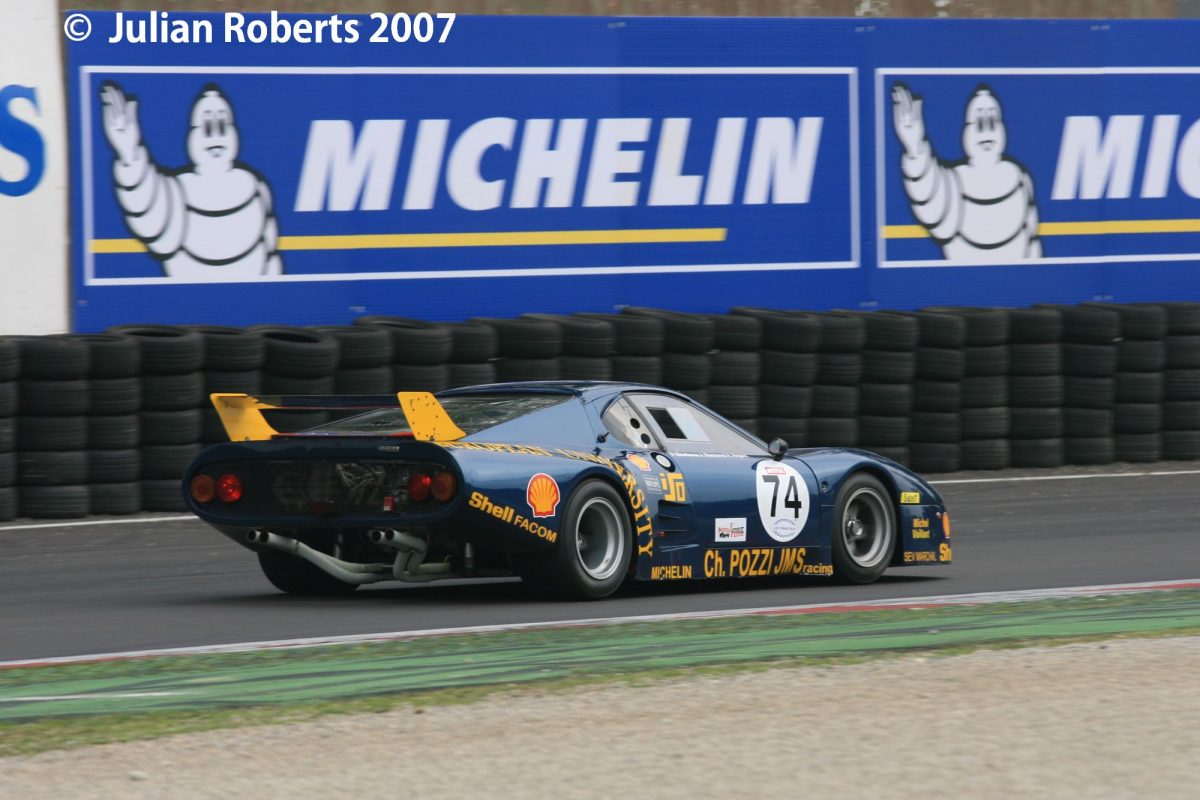
The first race for me was the 2007 Monza 1000kms. The media representative for the LMS was a French lady. She had confirmed my acceptance via email and I was given details of how to collect my media pass from a school in suburban Monza (why not at the circuit I have no idea). In my job as a Client Procurement Co-ordinator I had many contacts worldwide and one in particular with whom I was on very good terms lived and worked in Milan. He found me a small but classy hotel on the edge of the Parco di Monza, roughly opposite the circuit, but a few kilometres away, plus he arranged a taxi to meet me from the airport.
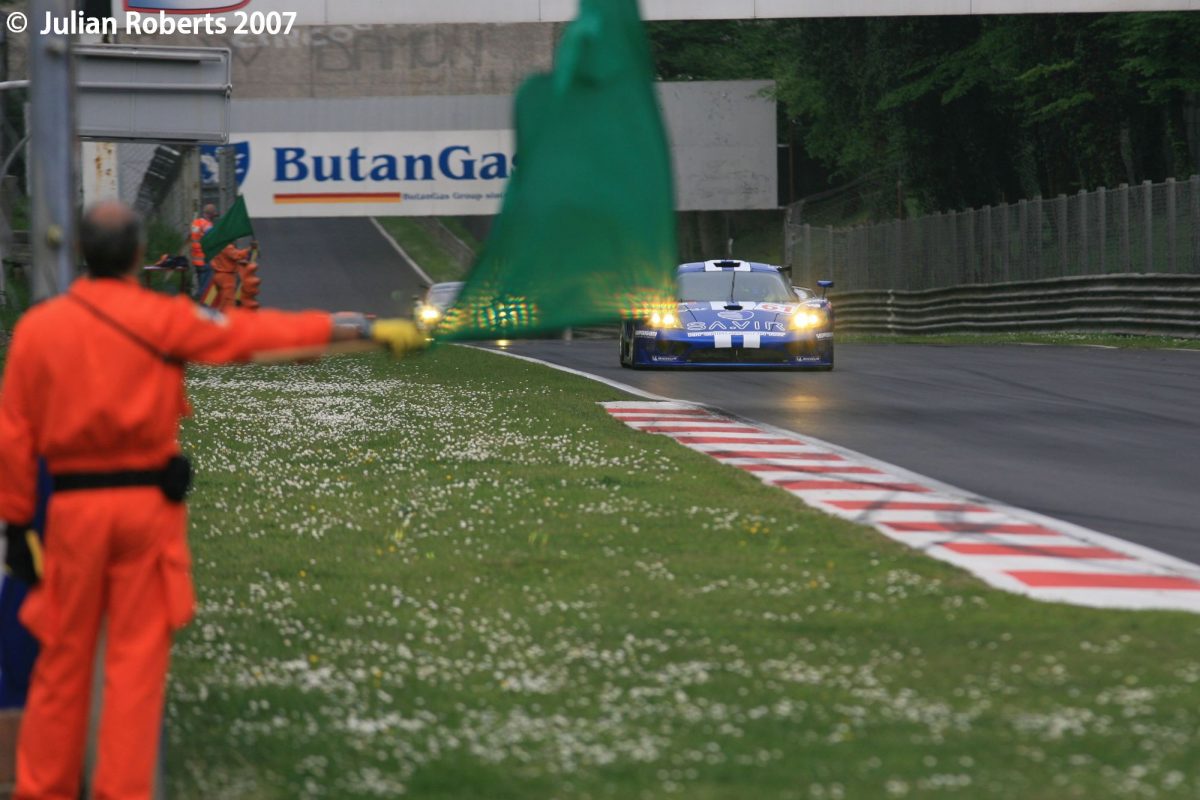
The flight was incident free and I easily found my taxi. Once I’d checked into the hotel, with numerous signed Ferrari driver portraits behind the desk, the driver took me to collect my passes. We eventually found the school and I followed the signs downstairs to a small room with a table and dozens of envelopes containing passes. I announced myself and the young lady searched her list and with a look of genuine regret said “non”. I almost dropped to my knees! I really couldn’t believe it. I recovered my composure and asked to borrow her phone so I could speak to the LMS Media representative. I have to say she was very offhand with me, initially denying I had been accepted (fortunately I had printed copies of all emails and forms so my case was watertight). She eventually agreed to permit me access; she would see me in the Media Centre. Note; only whilst writing this have I realised this all occurred on Friday the 13th!
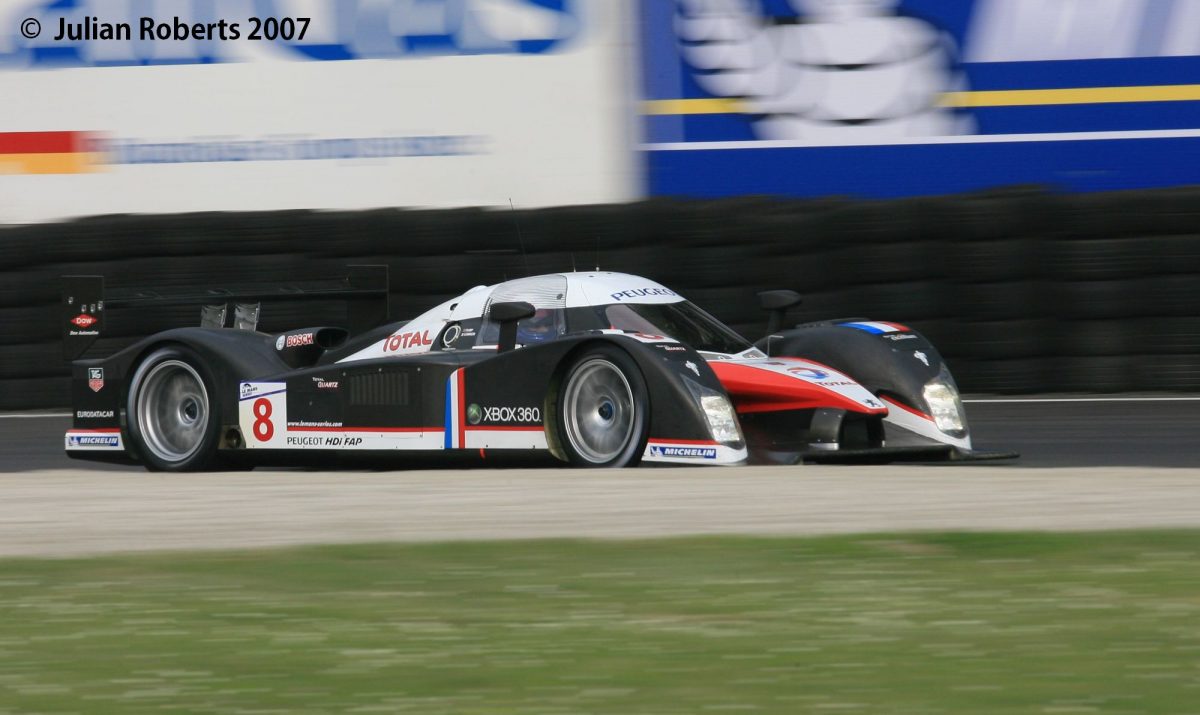
Back to the car and my willing driver. He drove to the circuit and to my joy blagged us through the main gate then into the Paddock itself, not bad going without a ticket between us. I climbed the stairs to the Media Centre and found my target. I won’t go into too much detail but I made it clear I was extremely unhappy and she made it equally clear she couldn’t care less. My Media Pass ? Nothing doing, I was given a ‘Guest Pass’! We didn’t part as friends and I still haven’t sent or received a Christmas card. I then went to speak with the local media representative on the front desk, a charming Italian lady who on hearing my tale of woe arranged everything I would need to make my visit a success. Bless her heart.
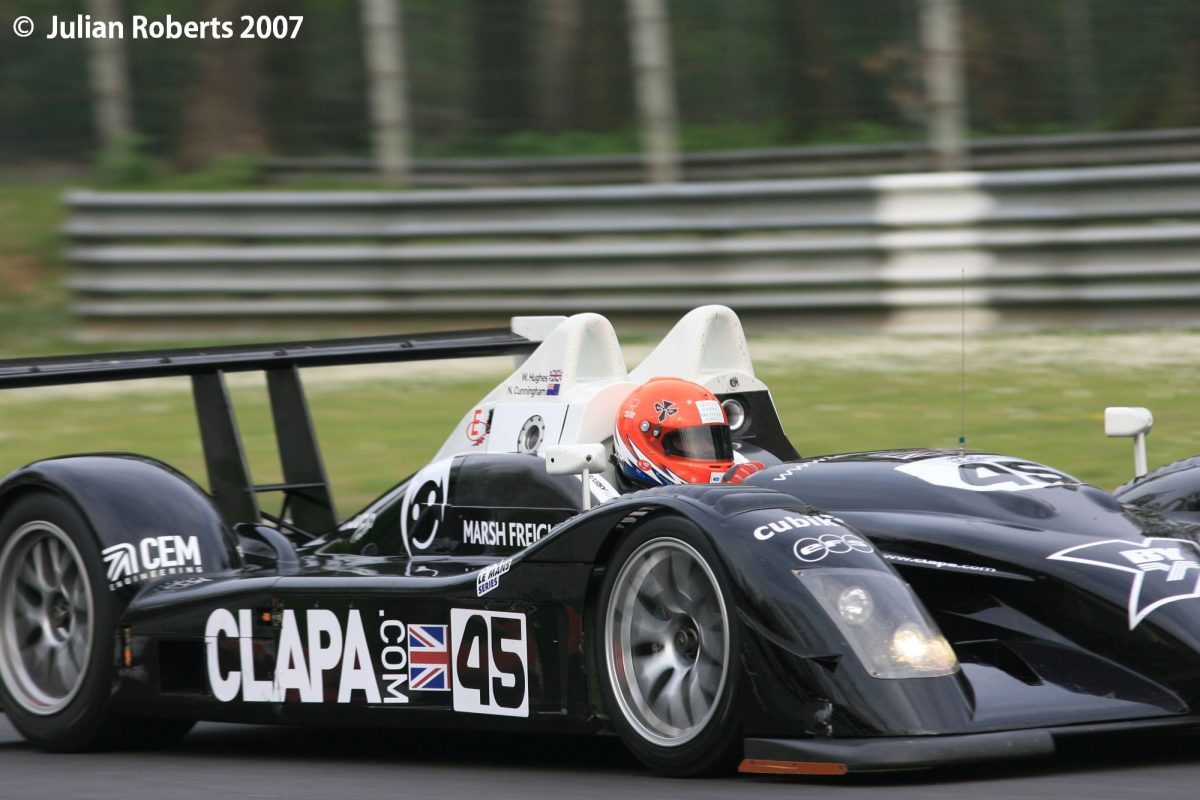
I’d missed the entire morning so I bade my driver farewell (with a fat tip) and walked out to the track. I’d been to Monza once before in 1994 to see the Italian Grand Prix so I had a reasonable idea of the layout, and knew exactly where I wanted to go first, the Variante Ascari.
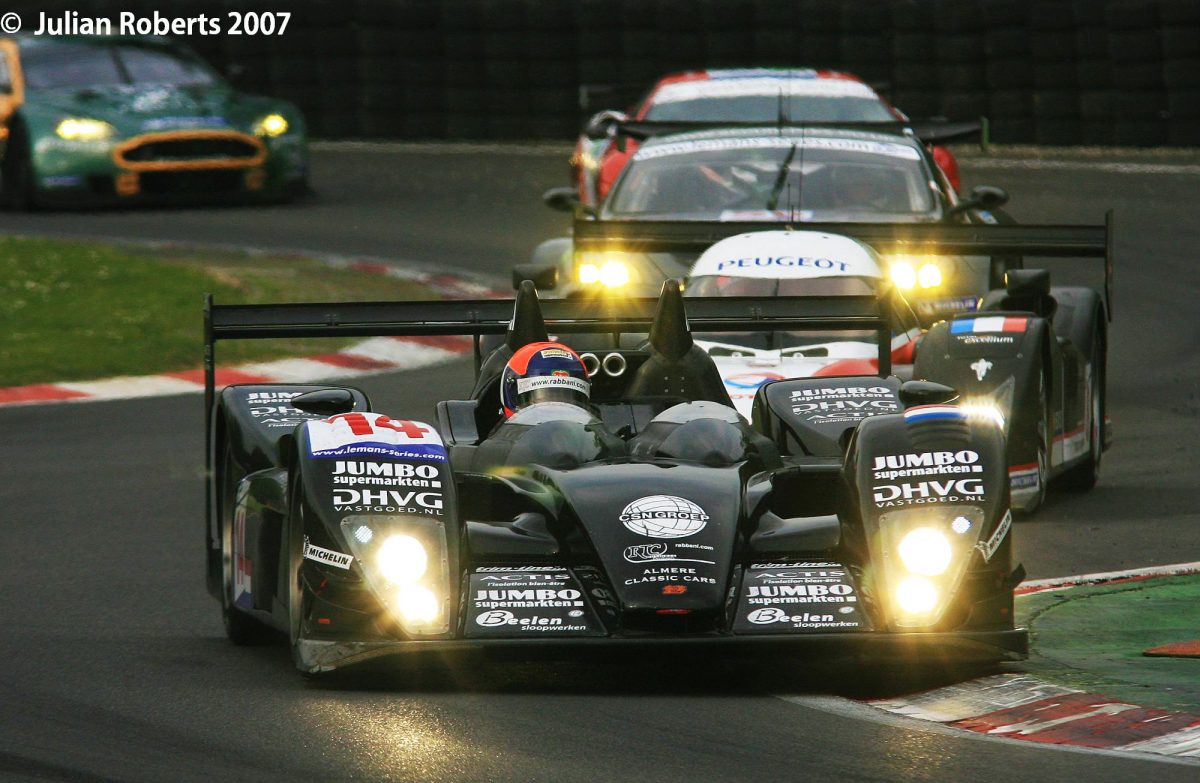
The first group out on track after lunch were the Classic Endurance Series or CER. Lola and Chevron prototypes, Ferrari Boxer, Porsche 911, 935, 908, BMW M1 and so many more. I’d never seen such a group of cars in England. I was in my element and was almost disappointed when the session ended and the LMS cars came out.
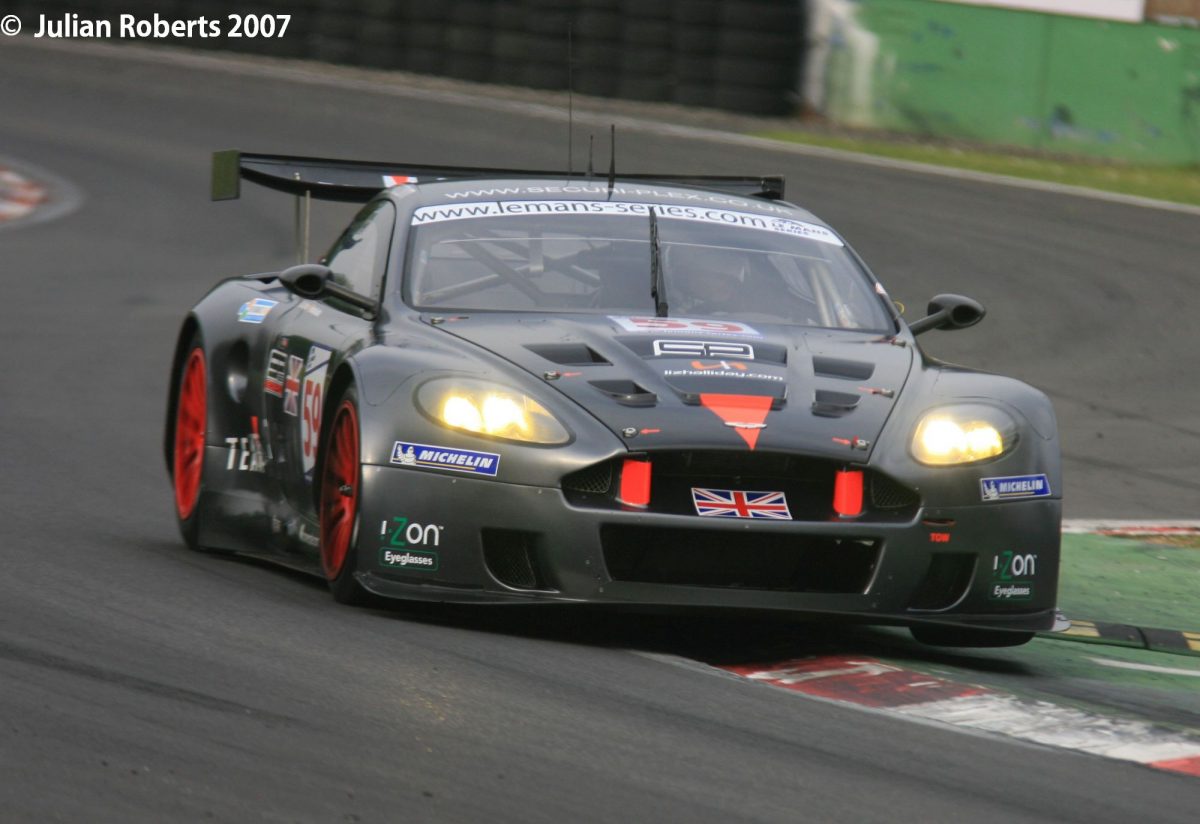
I remained blissfully happy at the Variante Ascari until the end of the day. I’d asked the hotel receptionist to arrange for a taxi to collect me from outside the main gate at 6pm. After 90 minutes (during which time I’d declined two lifts from kindly Brits) no taxi had arrived so I elected to walk back across the park. The walk was much further than I anticipated, taking over an hour, and by the time I reached my hotel, having been on the go since 5 a.m., I was exhausted. I had a quick shower, a restorative beer or three, followed by dinner and bed.
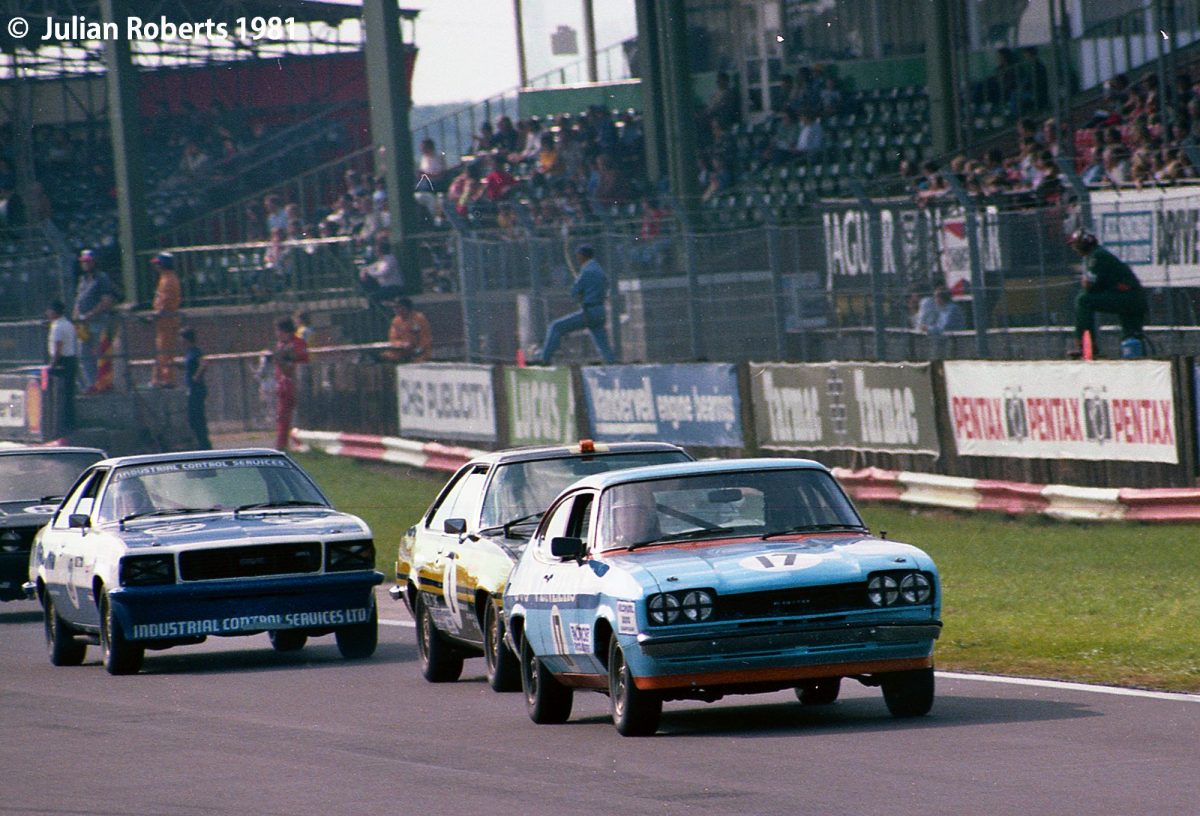
The next morning, during breakfast I noticed an English registered car with an historic racer on a trailer. There was another English couple in the dining room so assuming it was theirs I introduced myself. I was wrong, but it was a happy mistake as the gentleman was former British Touring Car ace, Peter Hall. He and his wife were there to support their son Stuart who was driving Martin Short’s Rollcentre Racing LM P1 Pescarolo 01.
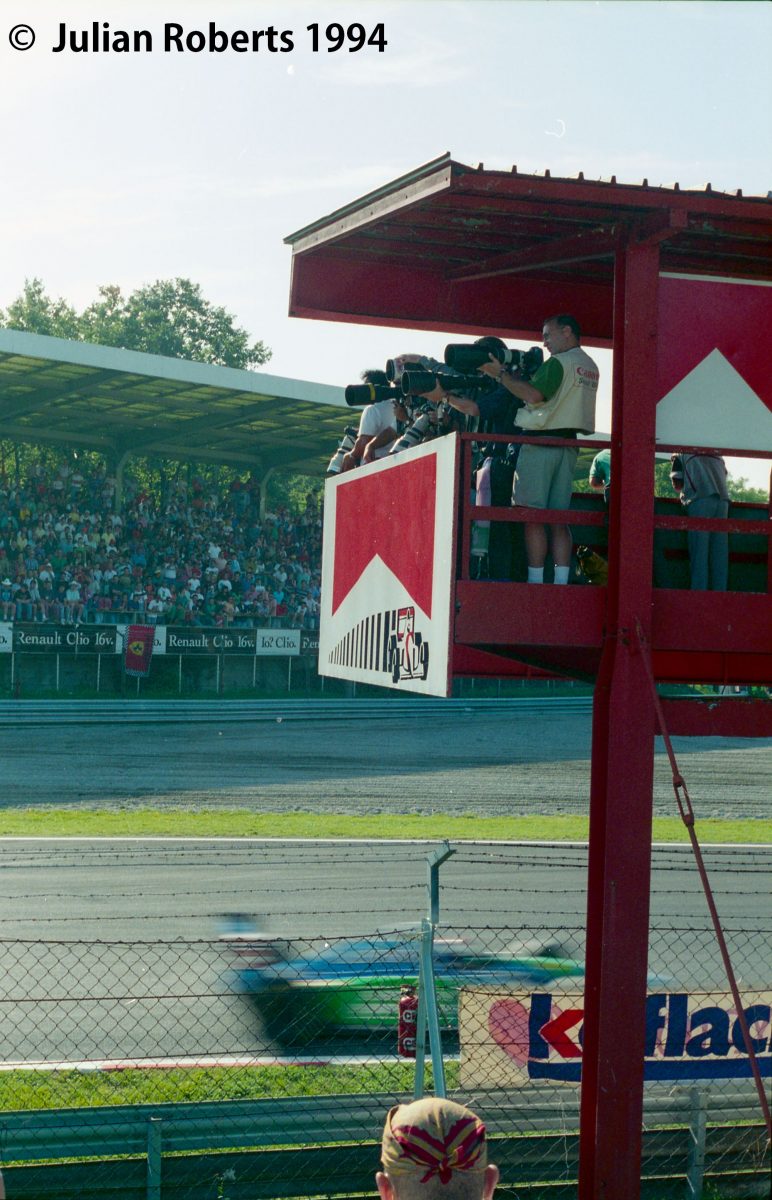
Back at the circuit bright and early on Saturday morning, the next item on my Monza bucket list was the raised photographers box above the turn-in point for the Curva Parabolica.
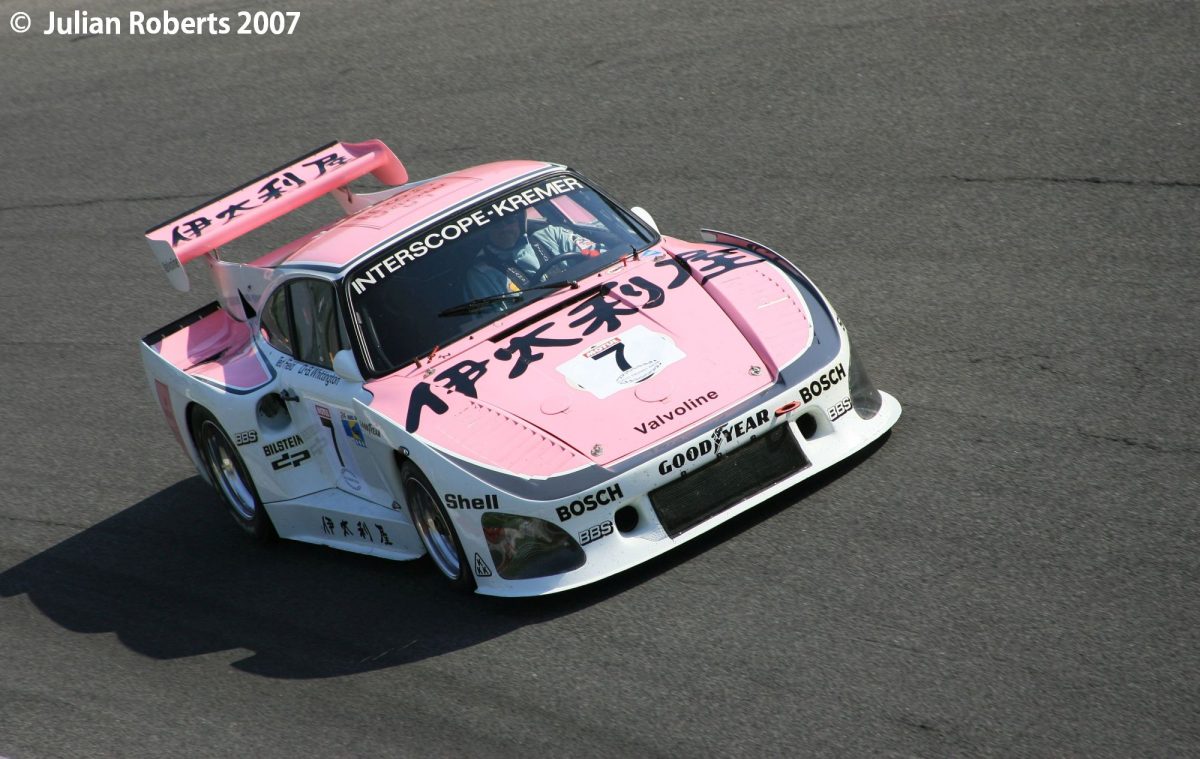
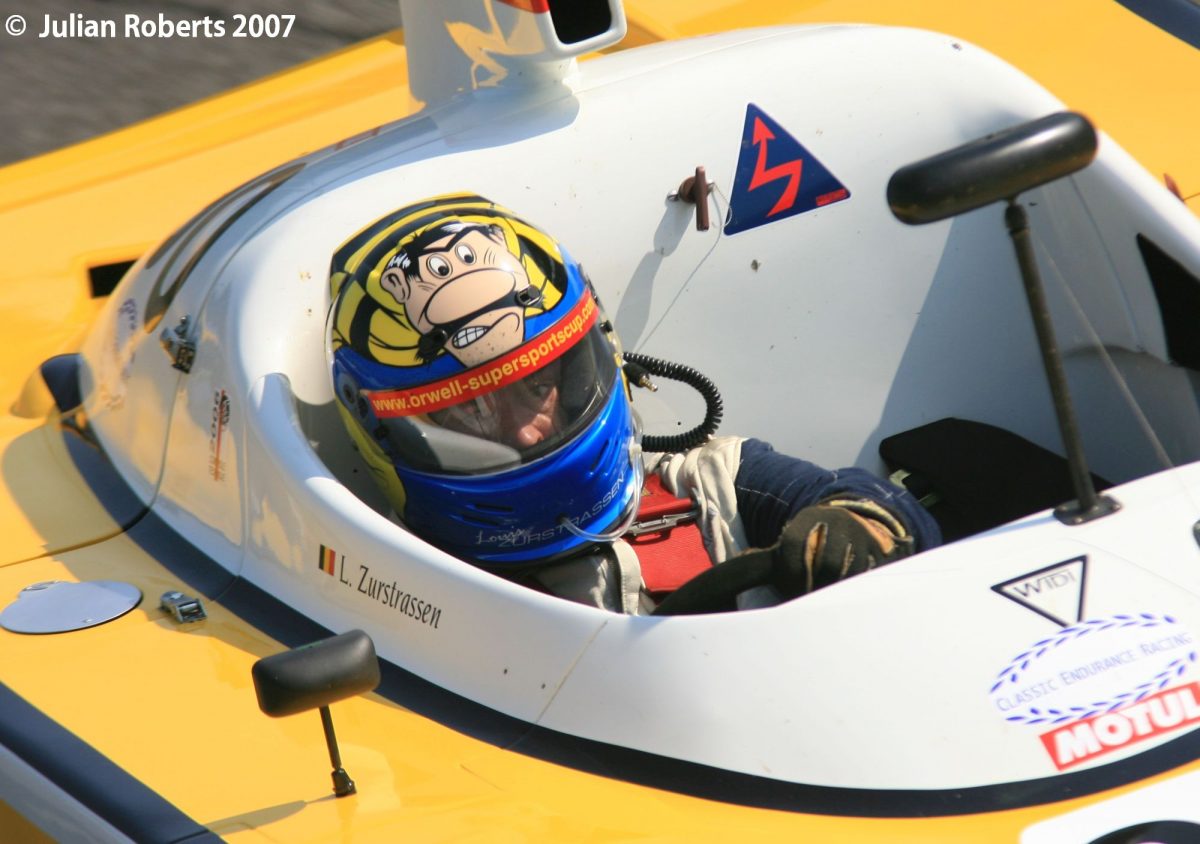
Once again the first cars out were the Classics, and I had a classic view of them.
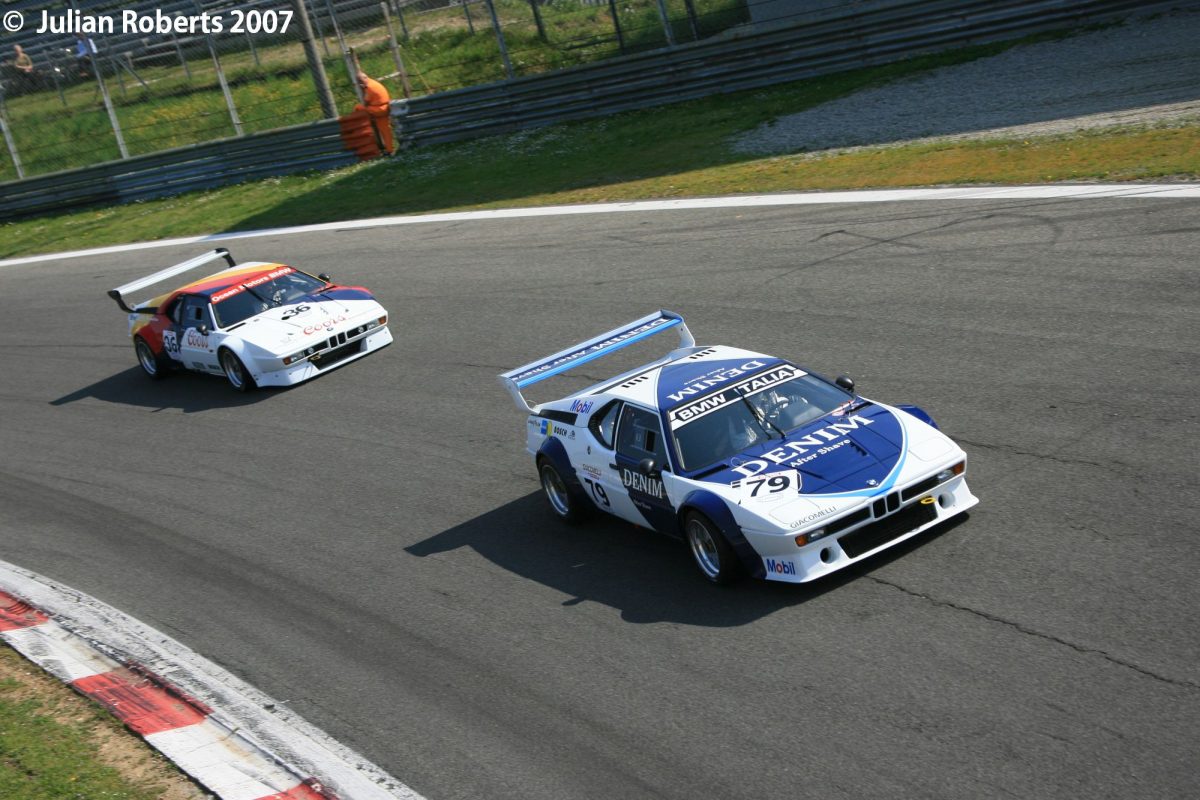
I had in mind the classic image of two Gulf Porsche 917s line astern turning in and wanted to try and recreate it, albeit without a pair of 917s. The best I could manage was a pair of BMW M1s.
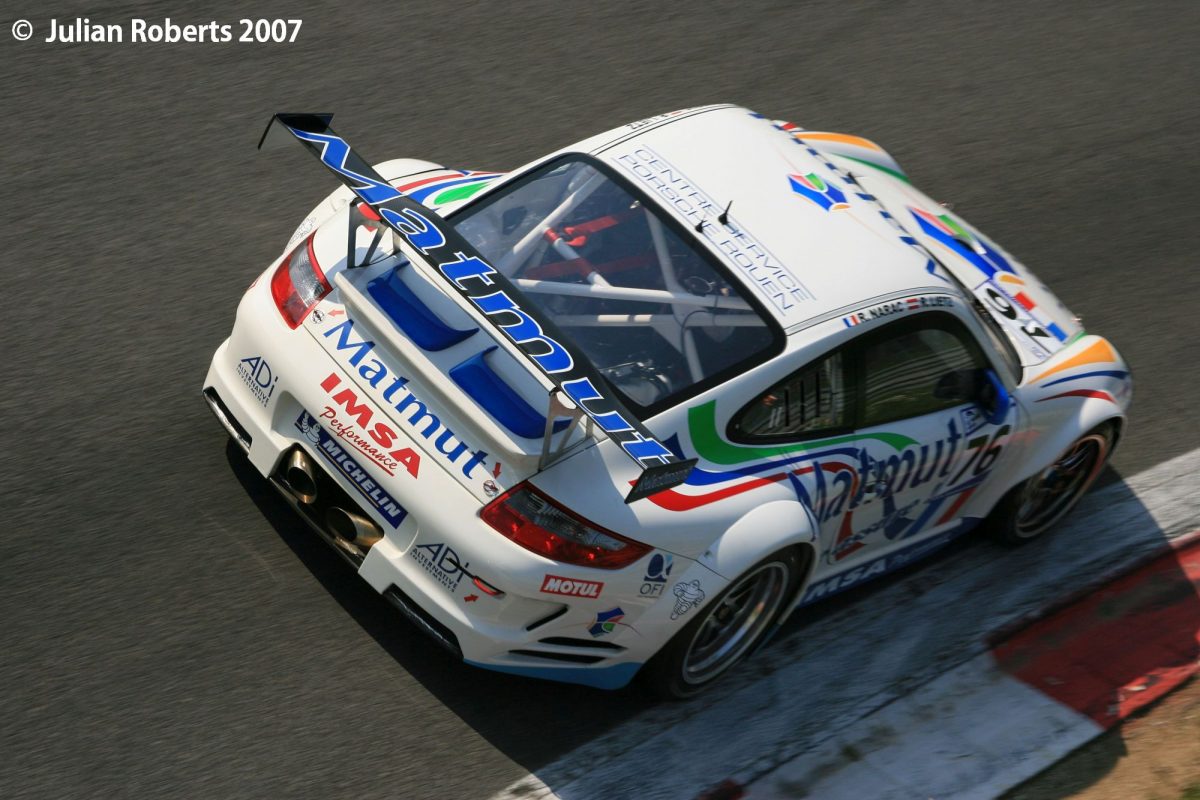
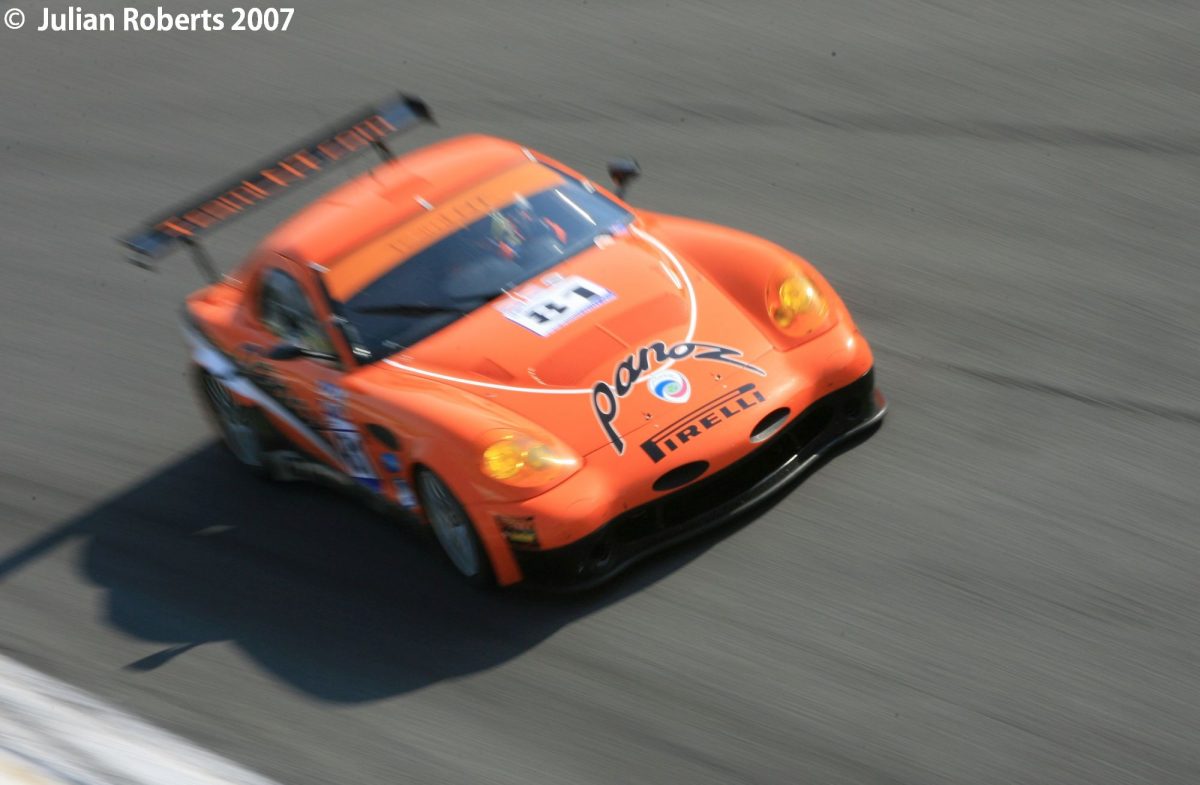
I remained in the box throughout the morning CER and LMS sessions having the time of my life.
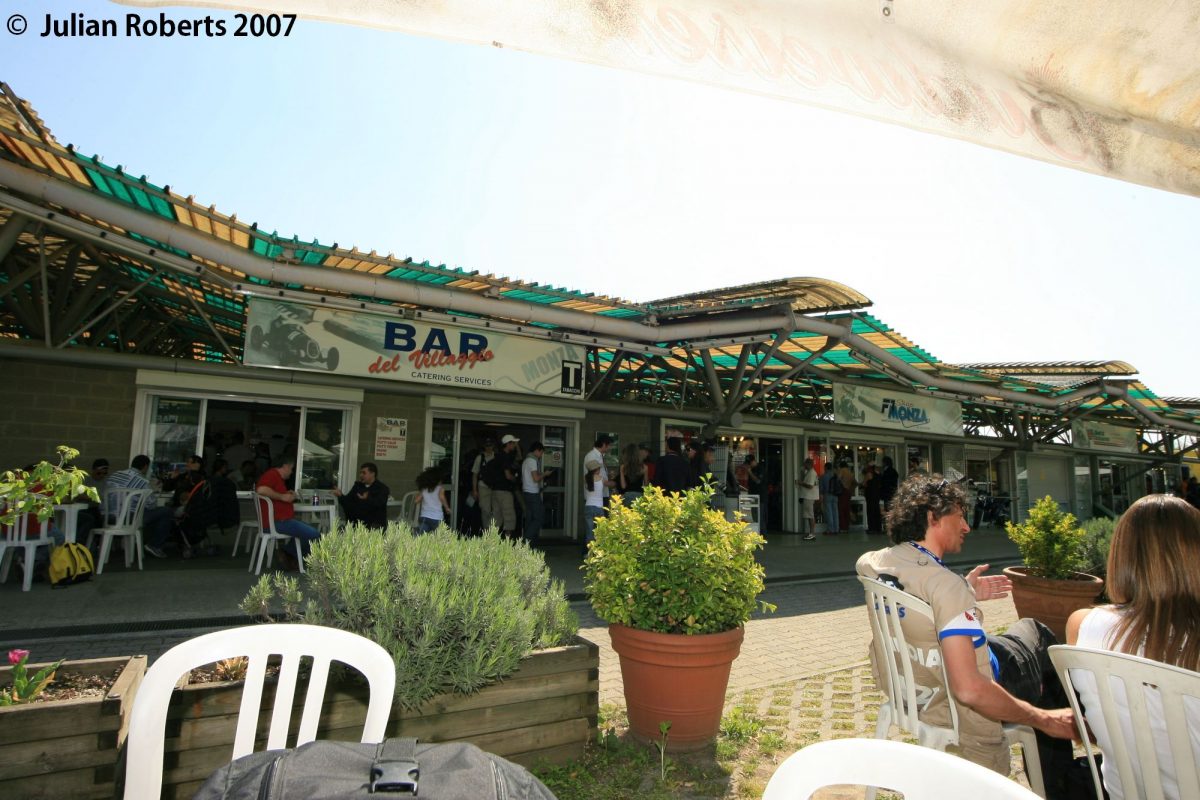
Afterwards I made my way back to the paddock for a quick lunch – not quite Silverstone….
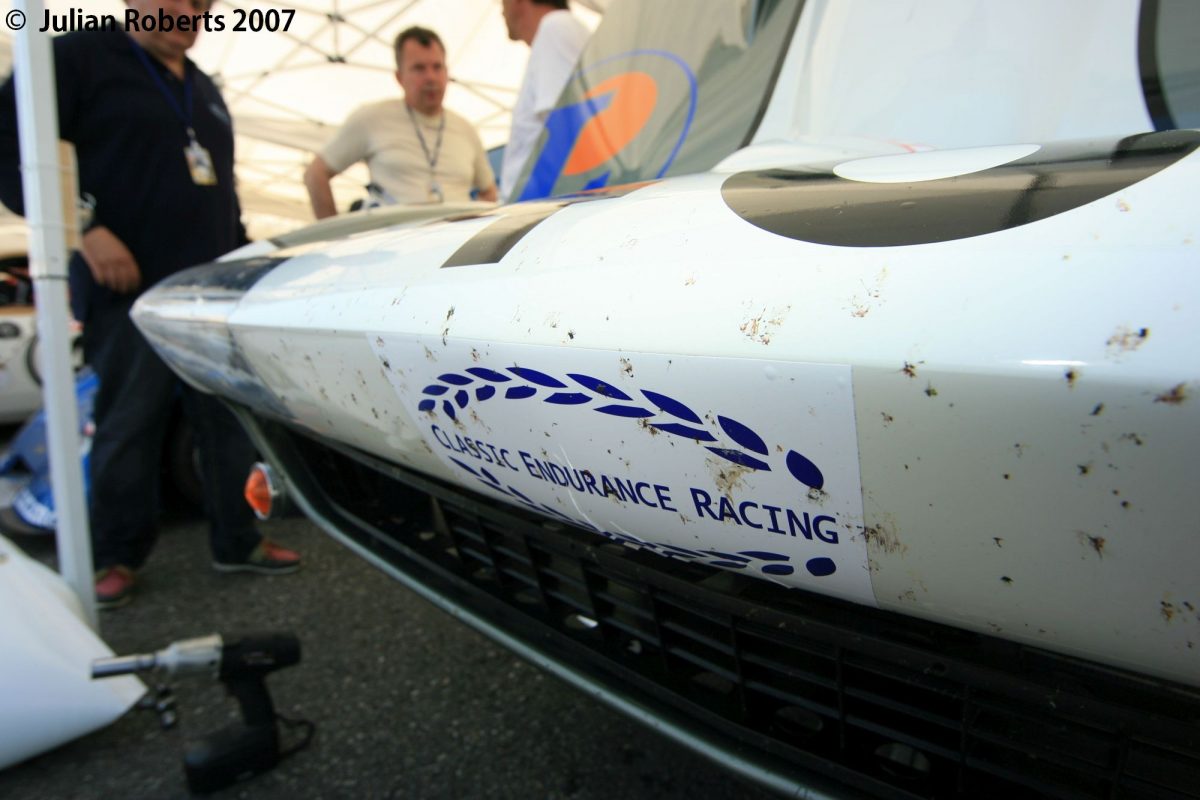
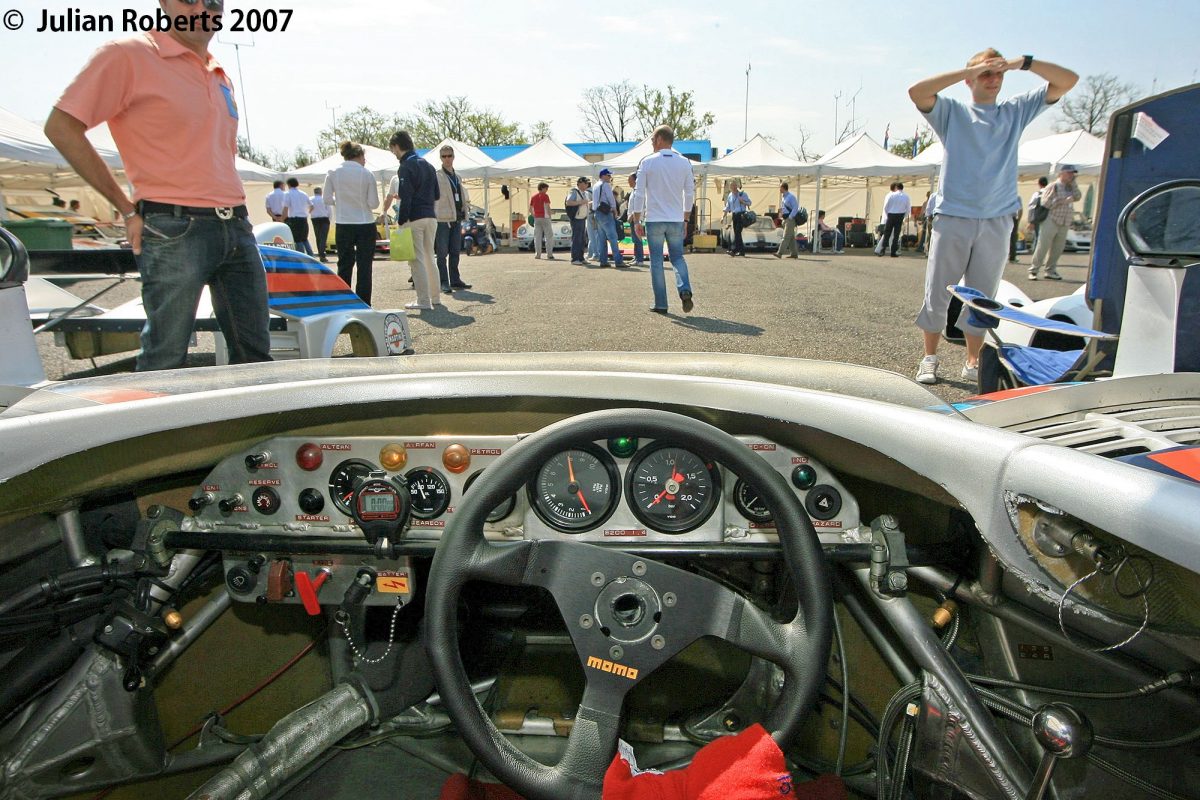
Then I couldn’t resist a wander through the CER enclosure and admire, what to me at least, were becoming the stars of the show.
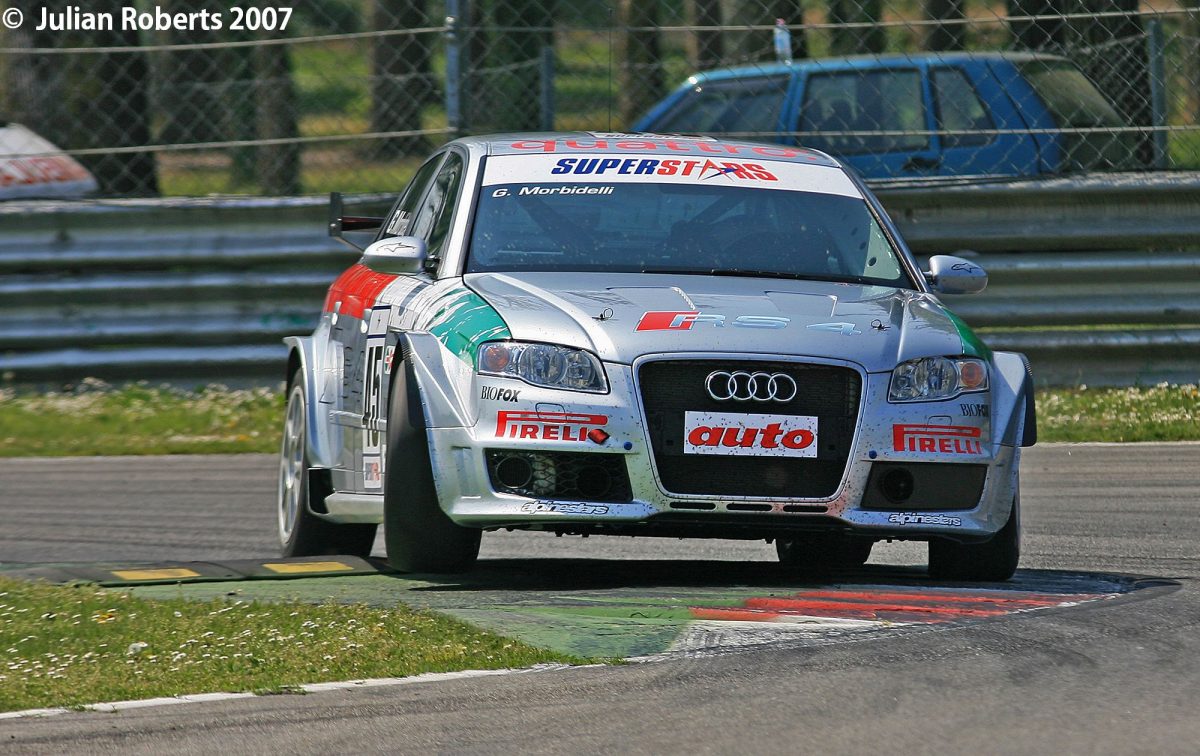
My vantage point for the afternoon was the first chicane; the Variante del Rettifilo. First was a qualifying session for the Campionato Italiano Superstars, the highlight of which was Gianni Morbidelli driving an Audi RS4.

Next up was LMS qualifying. Based on my brief chat with Peter Hall and his wife I was now Rollcentre Racing’s number one fan and I was disappointed to see João Barbosa roll to halt in front of me destined to take no further part.
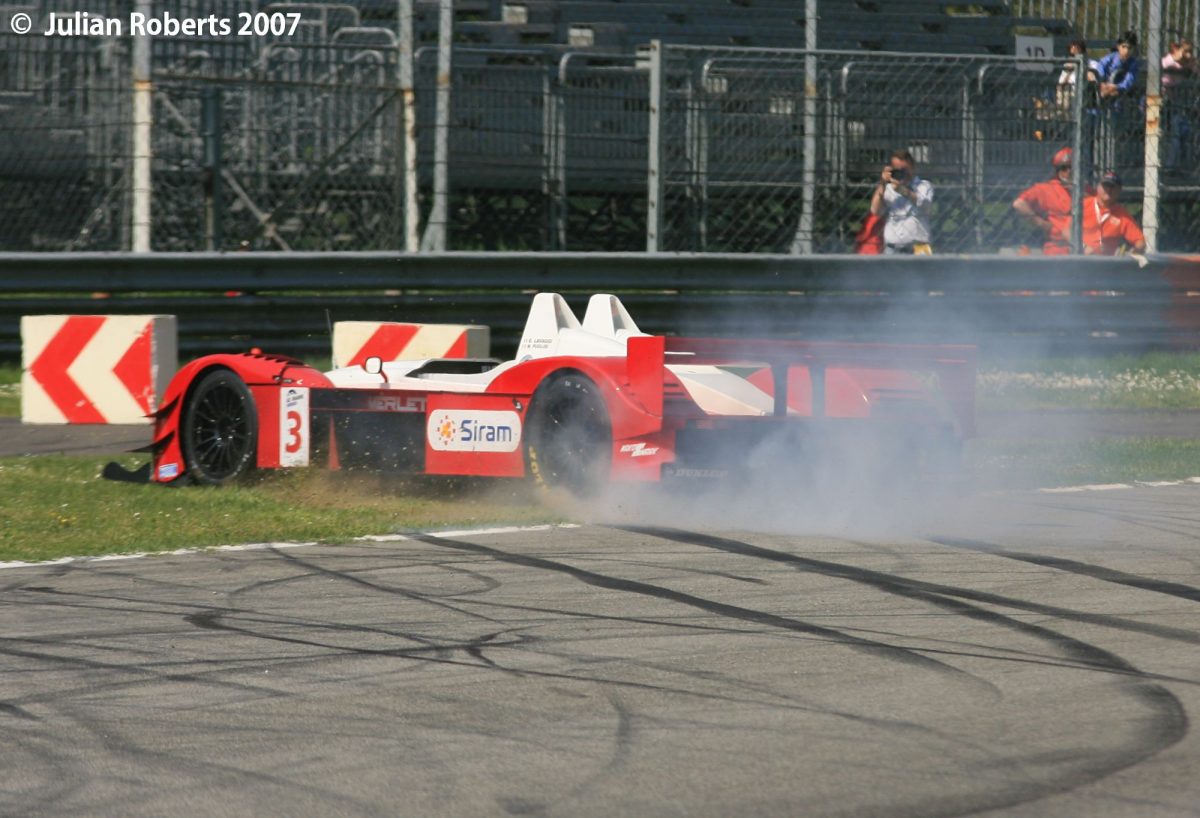
One notable entrant was ex-Pacific & Minardi Formula One driver Gianni Lavaggi, affectionately known as Johnny Carwash. He was sharing the eponymous Lavaggi LS1 with Marcello Puglisi , the LS1 qualified poorly and looked a handful to drive.
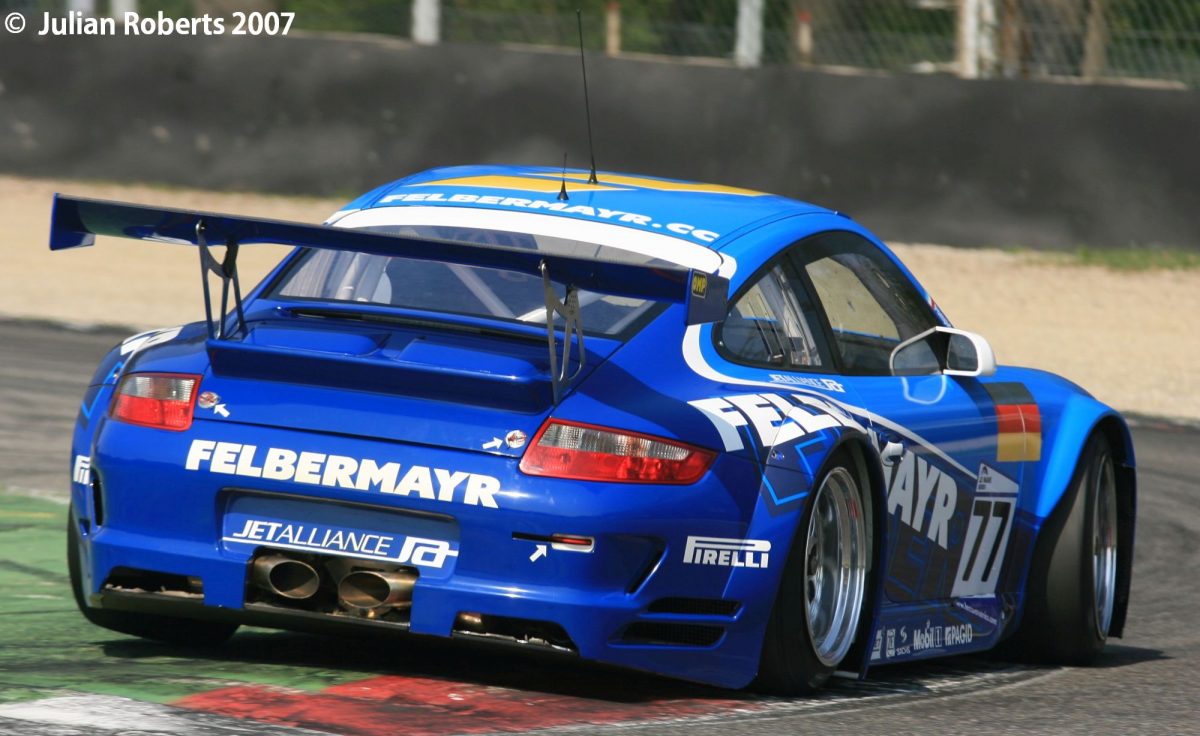
Being a totally unprofessional in every sense of the word, I always select a favourite car which my camera is unfailingly drawn to. This time it was three; the trio of Felbermayr Proton Porsche 997 GT3 RSRs, such a pretty car with a simple but eye-catching paint scheme. It seemed the session was over moments after it began. Predictably the Peugeots were in a class of their own almost two seconds faster than their nearest rival.

As the LMS field were being put away for the day there was the first race of the weekend, the opening round of the Formula Renault 3.5 Series. This wasn’t a championship I was familiar with and I didn’t recognise any of the drivers, but cynically knowing that young chargers and the first chicane at Monza are seldom a good mix, I made my way across the track (oh the access !) to give me a view almost straight down the circuit towards the start. Then I pre-focussed on the braking point and selected 1,000ths of a second. The start was uneventful, but later there was an incident which brought out the Safety Car. At the restart Clivio Piccione lying in about 10th place, misjudged his braking and slammed into the rear of Guillaume Moreau launching himself skywards like a Eurofighter on reheat. I had focus lock and rammed the shutter button into the body as hard as I could, just following the red plane plane on its wild ride. I fired off 33 frames before the car came to a halt upside down.
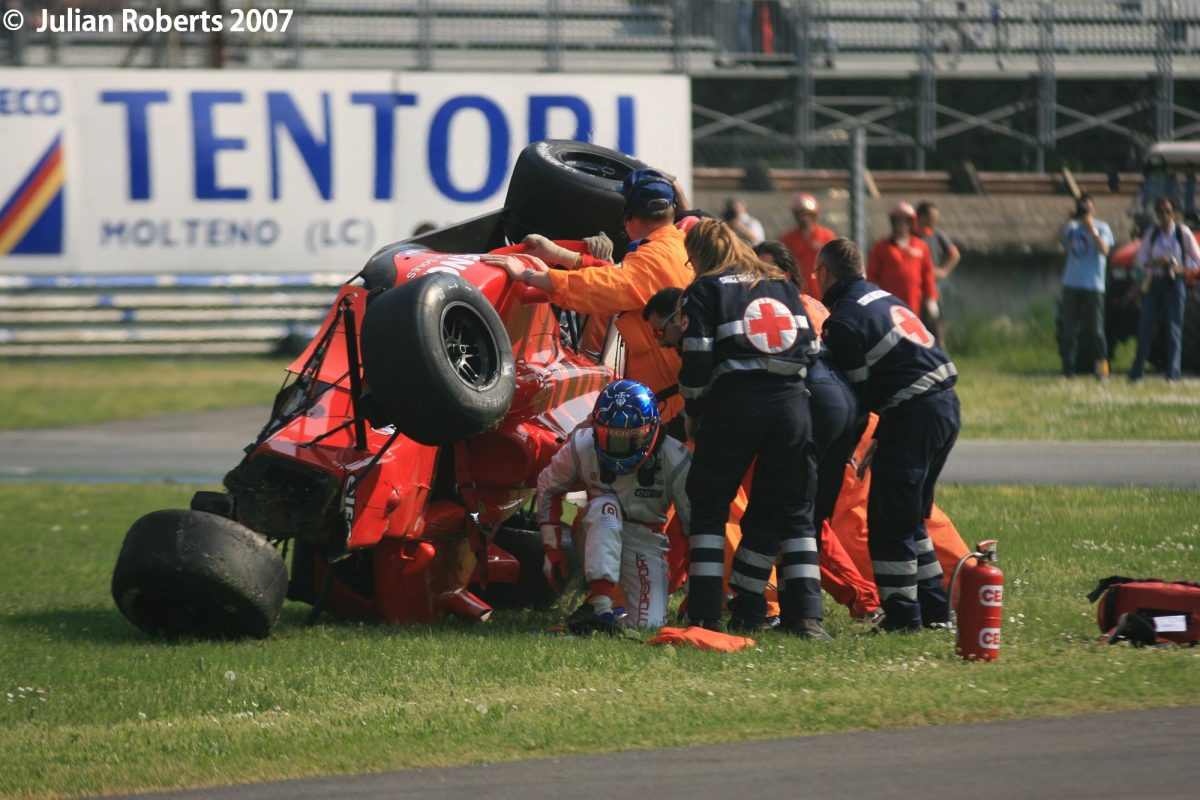
Thankfully, with help from the marshals, Piccione was able to clamber out unhurt. Looking back at the entry list, bearing in mind I’d never heard of any of the drivers, I had just watched future Grand Prix drivers Sebastian Vettel and Giedo van der Garde.
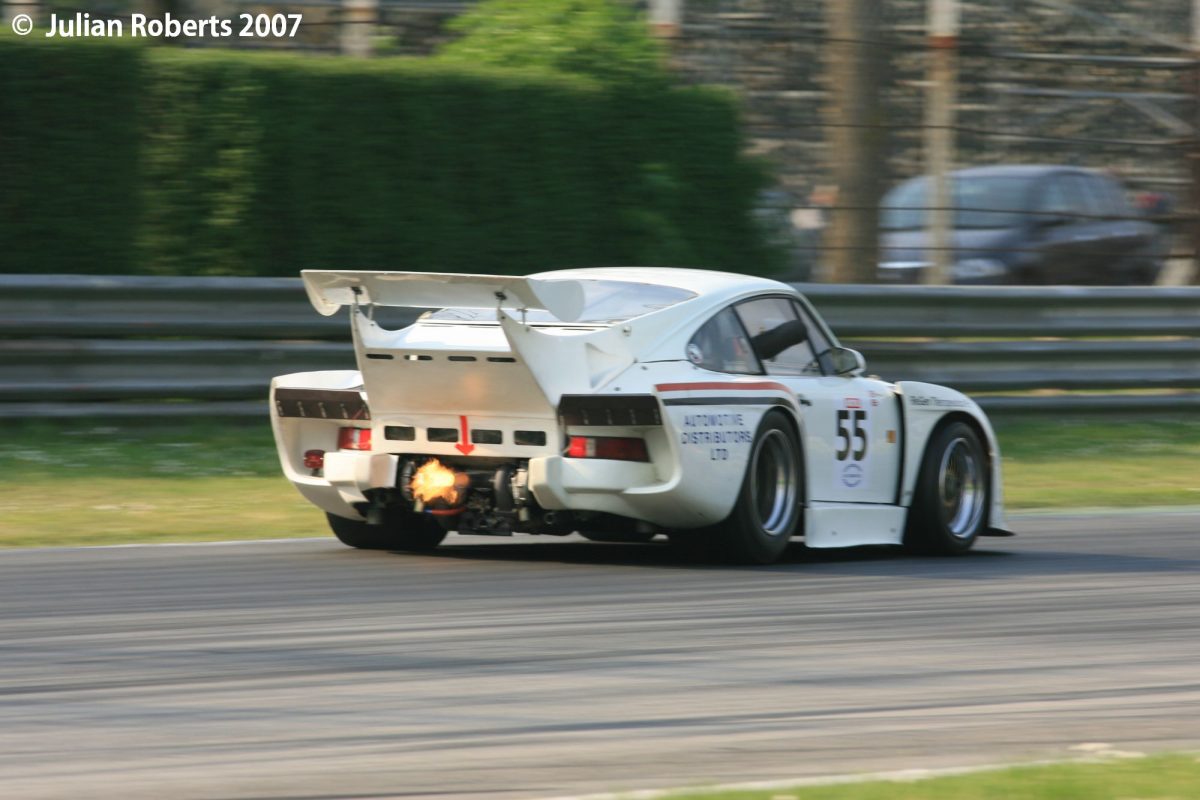
After some tracking sweeping and the collection of abandoned cars it was time for me to enjoy the Classic Endurance Series race. As always I was drawn to the Porsches like a moth to a candle, I cannot resist them. There was a 908-4, two fire snorting 935s, four RSRs, three RS, two Group 4 911s and a 906; Porsche heaven.
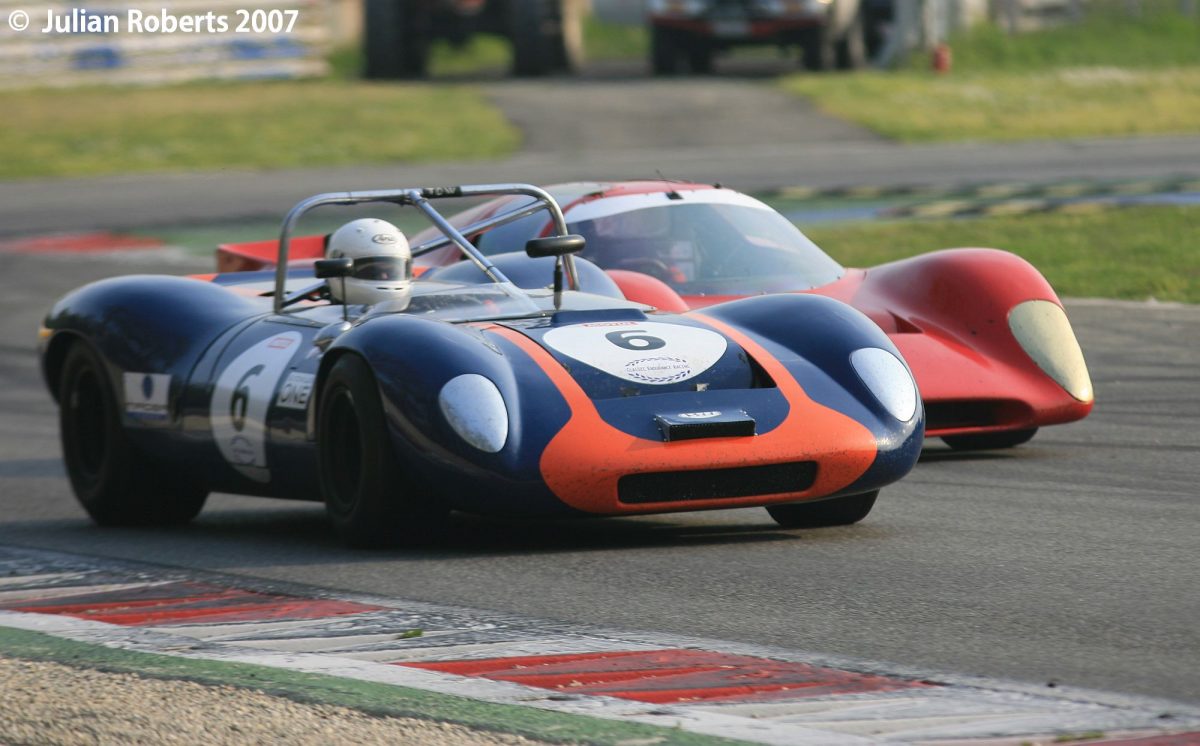
One particularly interesting car was the wooden monocoque design Astra RNR2 FVC designed by Roger Nathan and driven by Stéphane Gutzwiller. Seeking to check the details on the Astra, I reached up and left (I am surrounded by books on three sides in my tiny study) for my copy of Roger Nathan’s autobiography “An Adventurous Life”. It’s pleasing to note the above mentioned Stéphane Gutzwiller was Nathan’s co-writer for this project.
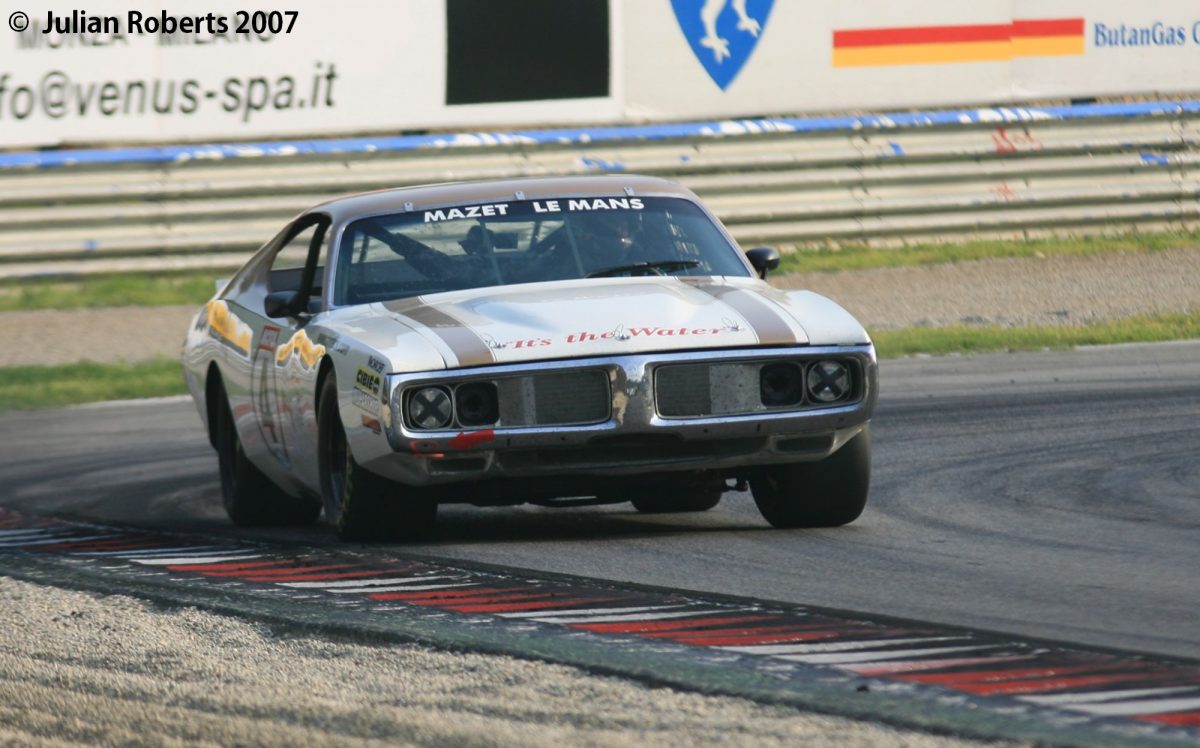
Apart from the Porsches my favourite classic had to be Christophe Schwartz’ Dodge Charger, I had never heard a louder race engine, it was magnificent. Starting life as a road car, this was a ground-up recreation of father and son Hershel and Doug McGriff’s 1976 Le Mans entry. The ACO were keen to form an alliance with the Daytona 24 Hours and contacted Bill France, the head of NASCAR, inviting some American iron over to La Sarthe. Two IMSA specification Chevrolets, John Greenwood’s Corvette and Michael Keyser’s Monza made the trip as did two NASCAR stock cars. A Ford Torino and McGriff’s four year old Dodge also took up the invitation. At Le Mans it weighed 1,660kgs, had four forward gears, drum brakes and a live rear axle on leaf springs. Oh, and the McGriff’s only fitted mirrors following concerns brought to the ACO by the prototype drivers. It wasn’t a fairy tale ending. The car was designed to run on high octane fuel not the 80 octane essence available at the circuit and destroyed two engines in practice. The race engine did not even last two laps. This recreation now using decent fuel runs consistently well and, like the original, is a crowd favourite.
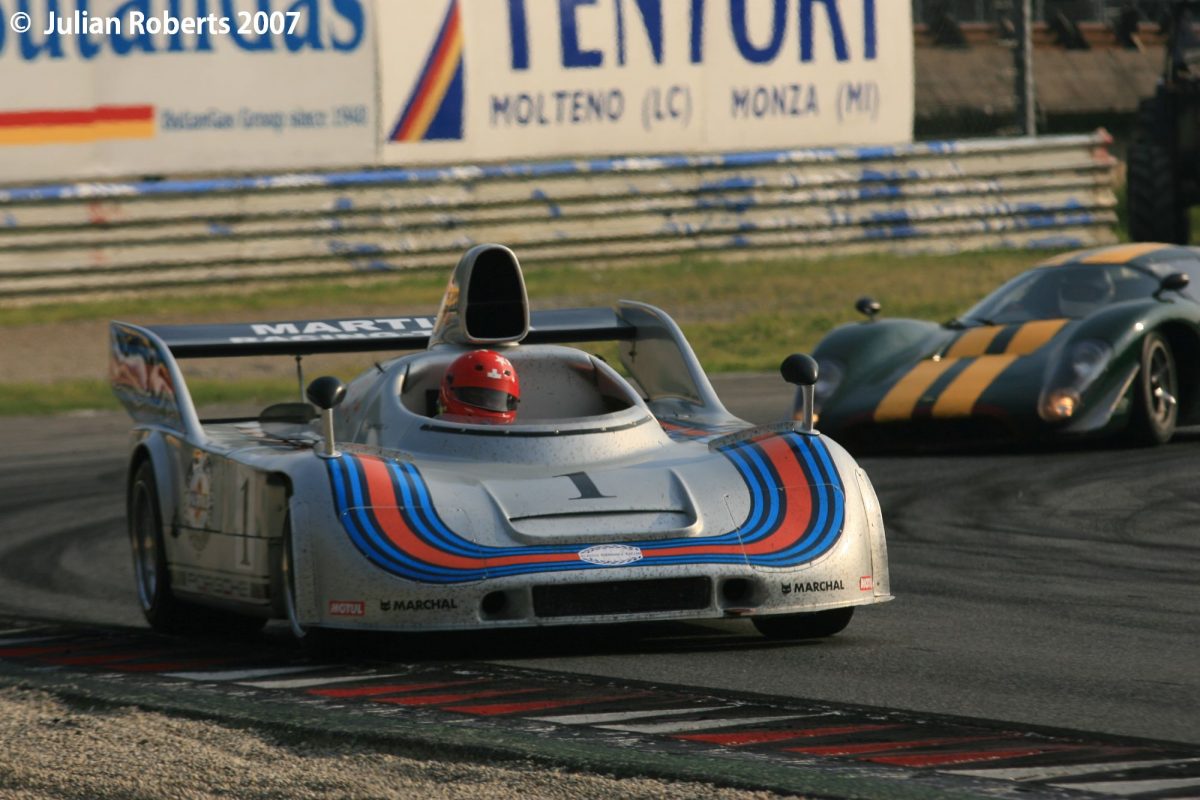
The race lasted an hour and I gleefully fired off another 400 shots!
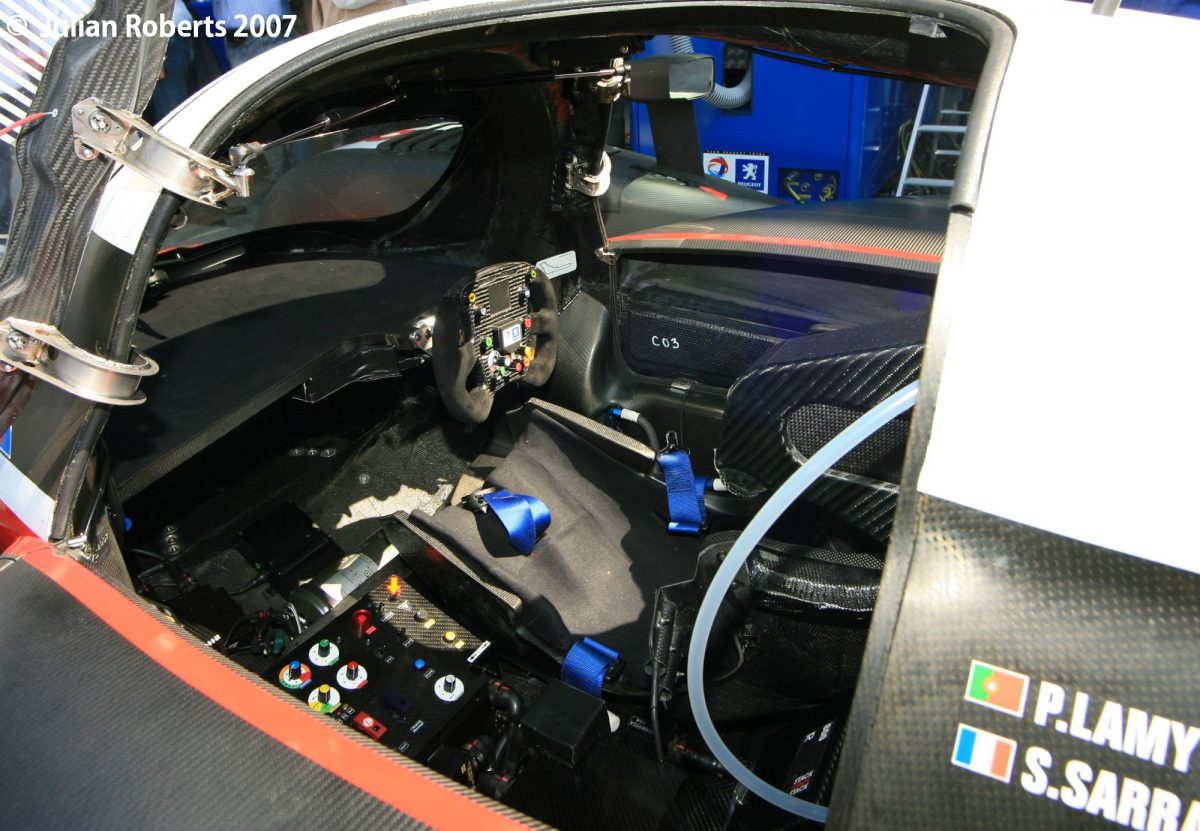
Sunday dawned, no more preamble, time for the main event.
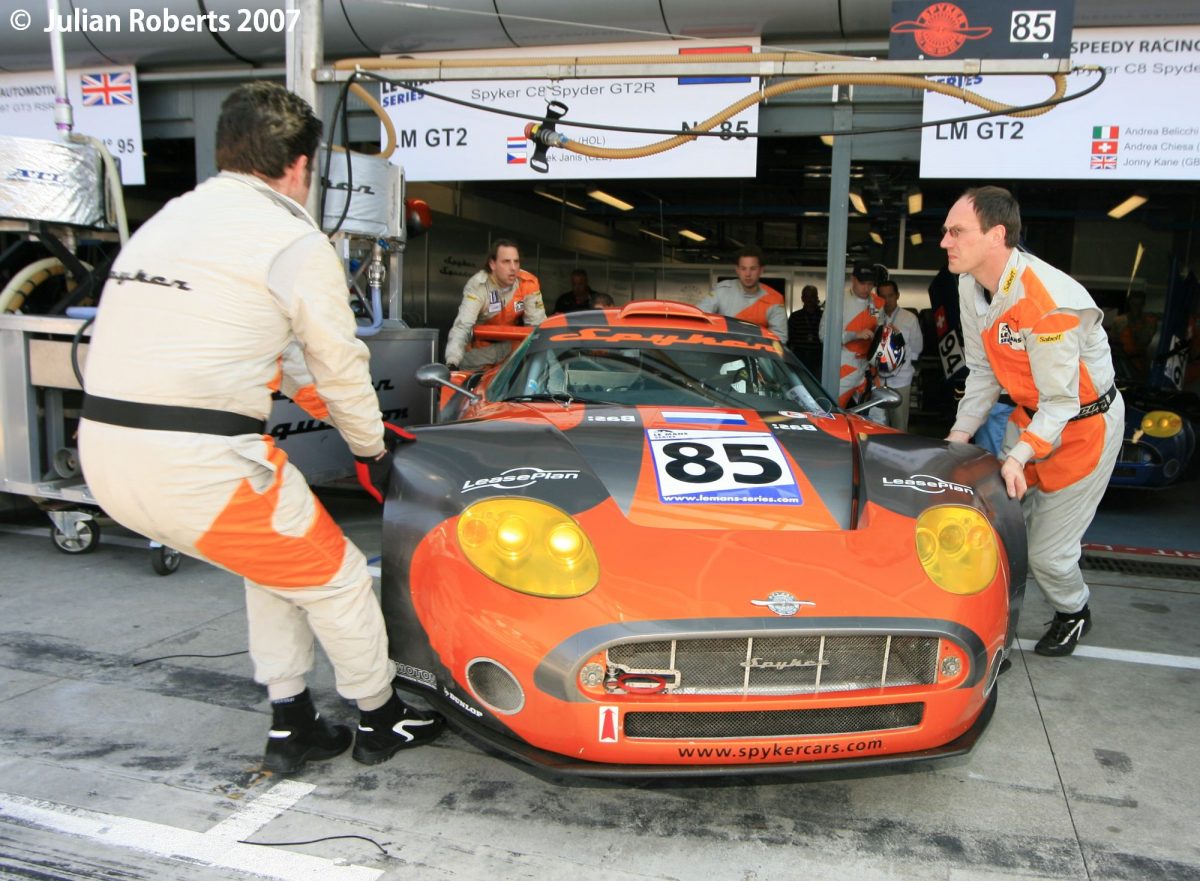
Not being blessed with the ‘access all areas’ photographers vest I had to grab my pitlane shots during the morning pit walkabout.
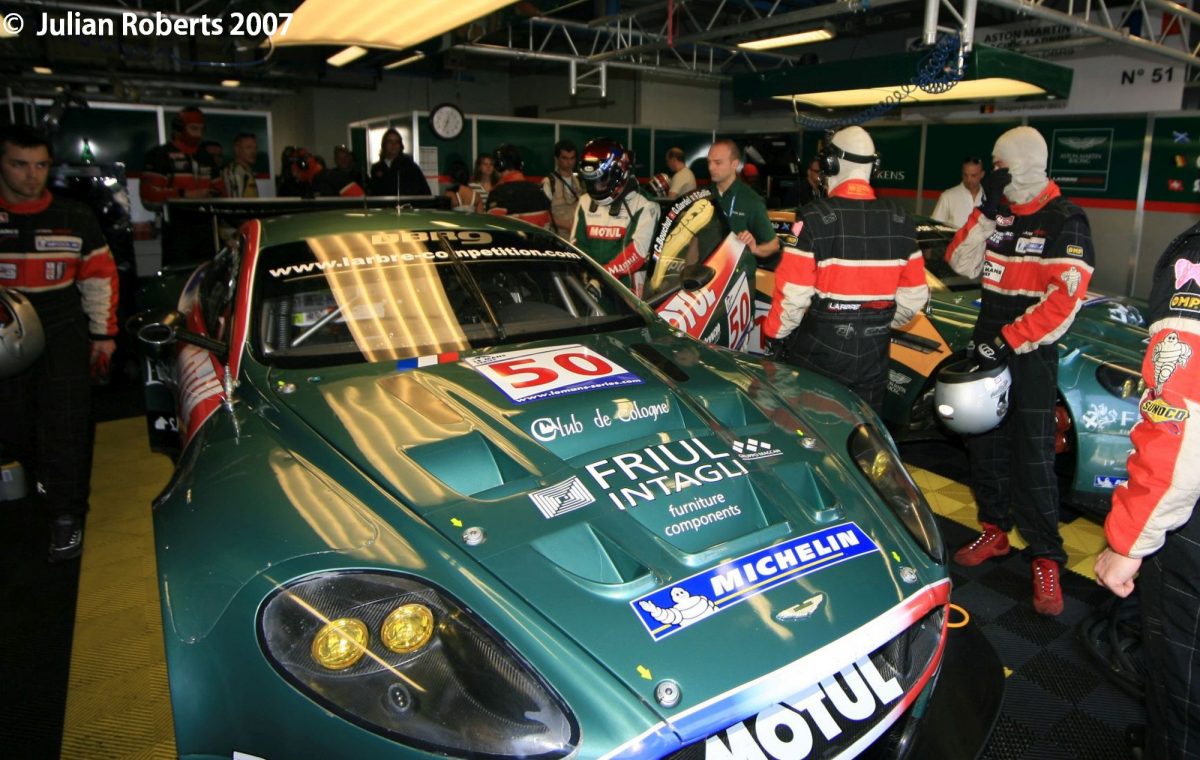
Not to worry, make the best of it, you’re at Monza !
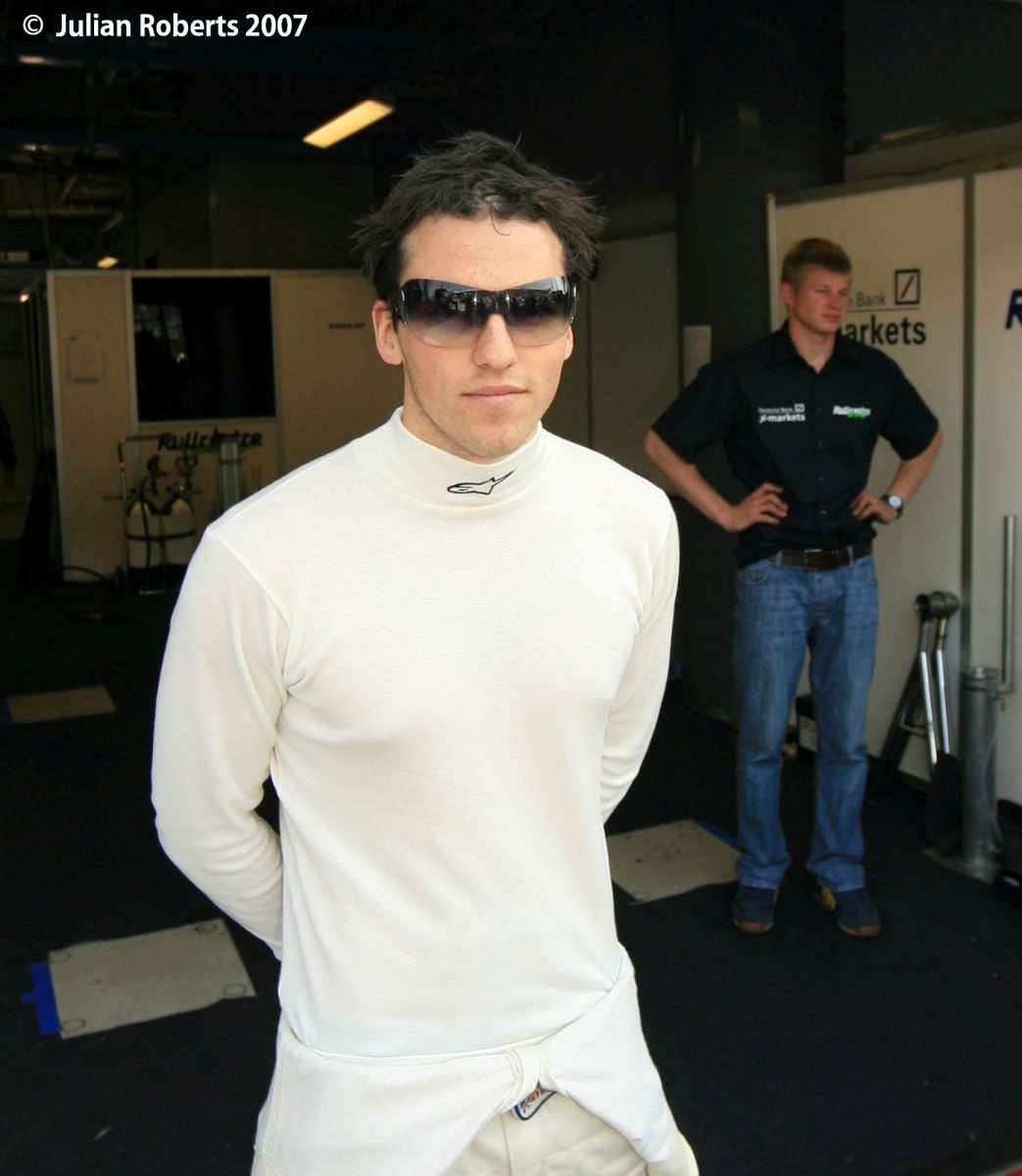
My new favourite driver Stuart Hall posed for me looking very ‘eff wun‘ in his graduated shades, behind, in civvies, stands his erstwhile team mate Phil Keen.
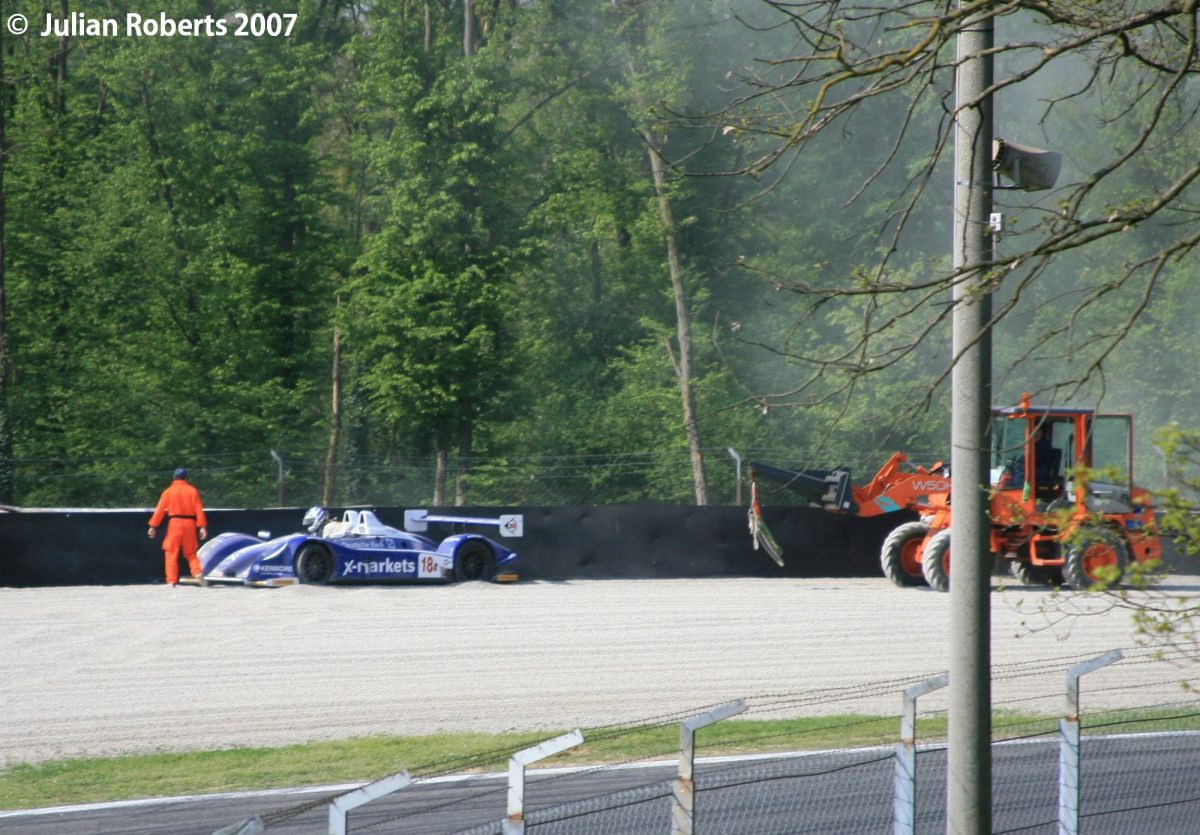
I was told, that Rollcentre boss Martin Short had stood Keen down as he was driving the heavy prototype “like a Formula 3 car”. Also beaching it in the Parabolica gravel trap on his first flying lap during Practice, leaving the team unable to set further times in the session, can’t have helped.
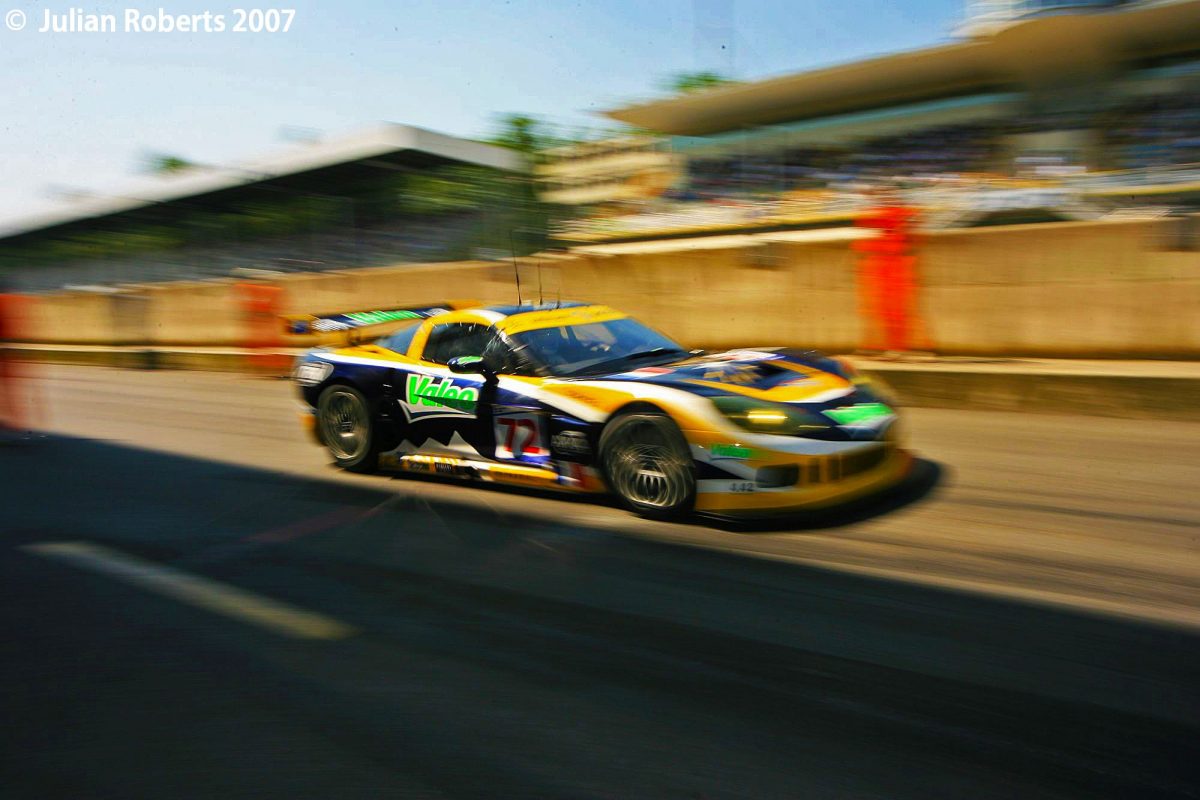
By now the cars were leaving the pits and I needed to get moving if I was to catch the start.
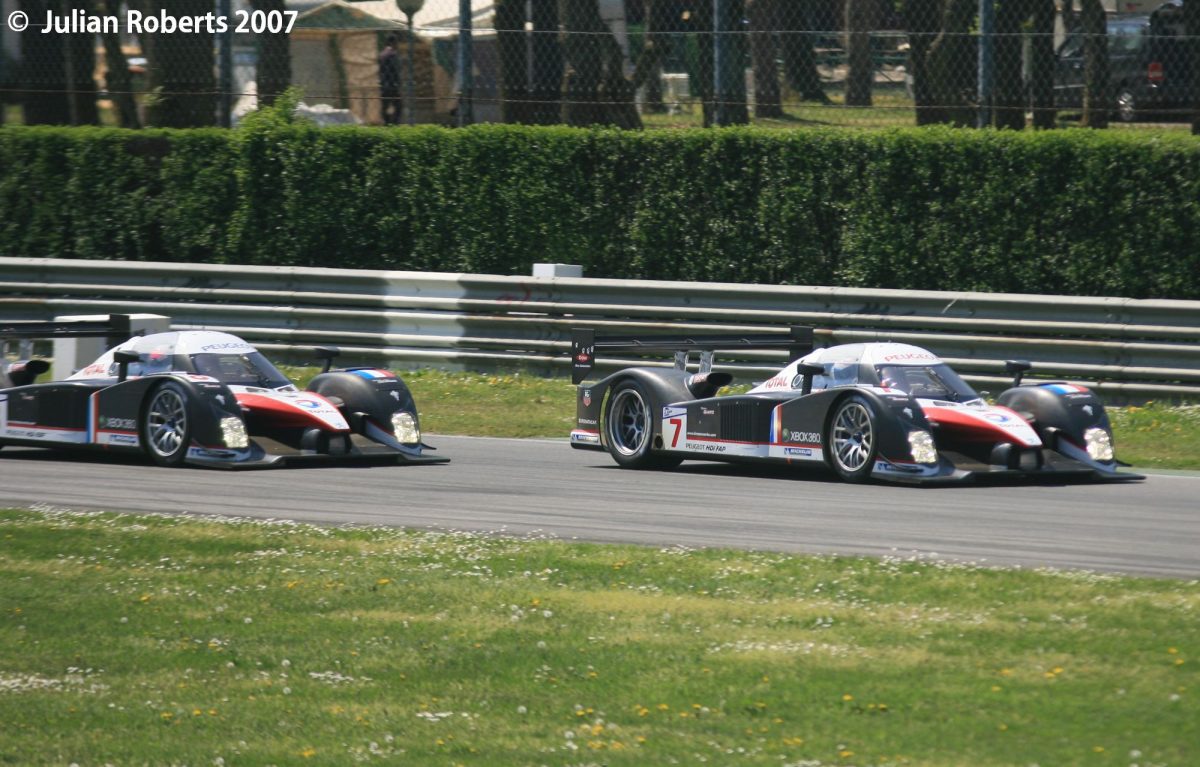
I chose to stand in the raised photographers enclosure overlooking the Variante Alta. This was a mistake. It has a perfect view over the chicane with the cars coming straight towards the camera after the initial turn in.
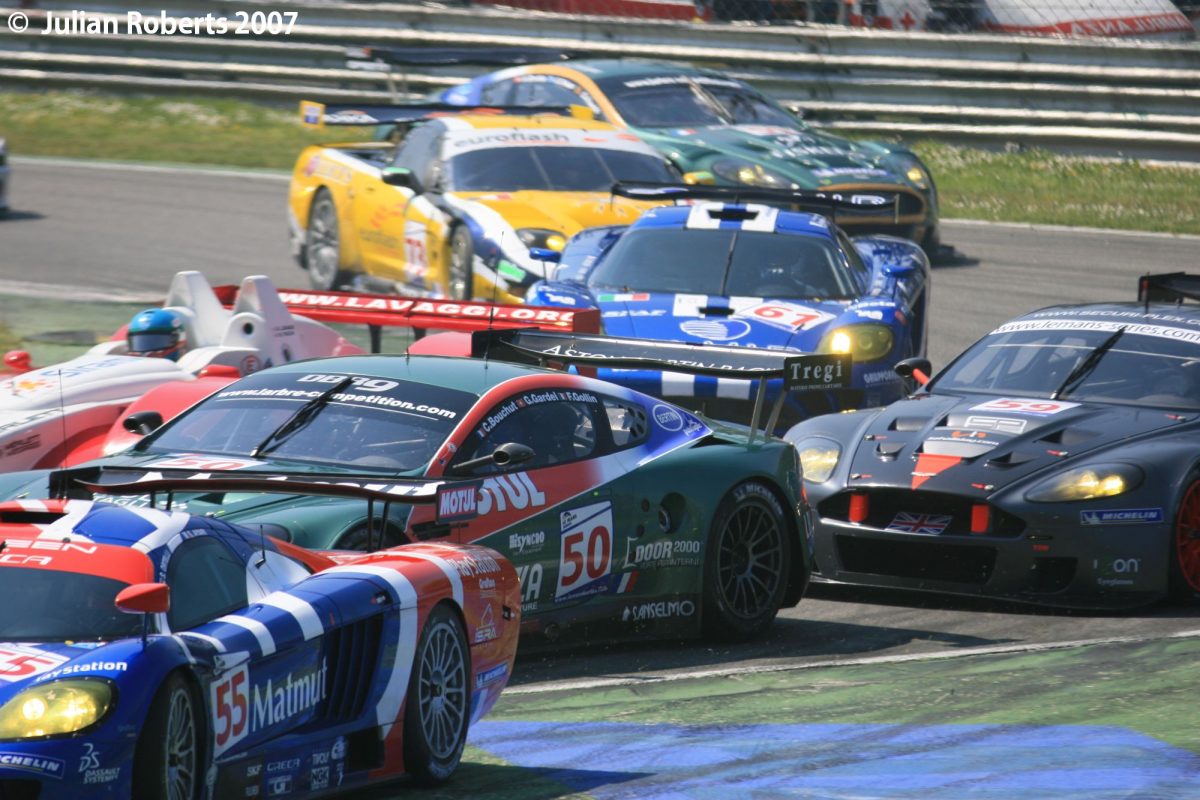
Without thinking I’d selected my 300mm lens and while it was fine for picking out a single car, it was too long to the capture the melee of the opening lap. I shot the 2 Peugeots braking for the chicane, thereafter my images of the start are a colourful collage.

Abandoning my lofty perch I returned to ground level and crossed the infield to the Variante Ascari and began a slow anti-clockwise, lap of the circuit via the Curva del Serraglio, the Lesmos and Variante del Roggia and finally, my favourite spot, the photographers’ platform above the Parabolica. On one of the service roads inside the circuit there’s a small old quite old looking building which had a familiar moulding of a snake on a shield. Familiar because reversed it is the Alfa Romeo symbol. Following a little research I learn it is called a Biscione and is generally the symbol for Milan and particularly it’s the eleventh-century Milanese Visconti family coat of arms. The origin of the serpent devouring the human (some say child) isn’t certain and there are a number of theories.
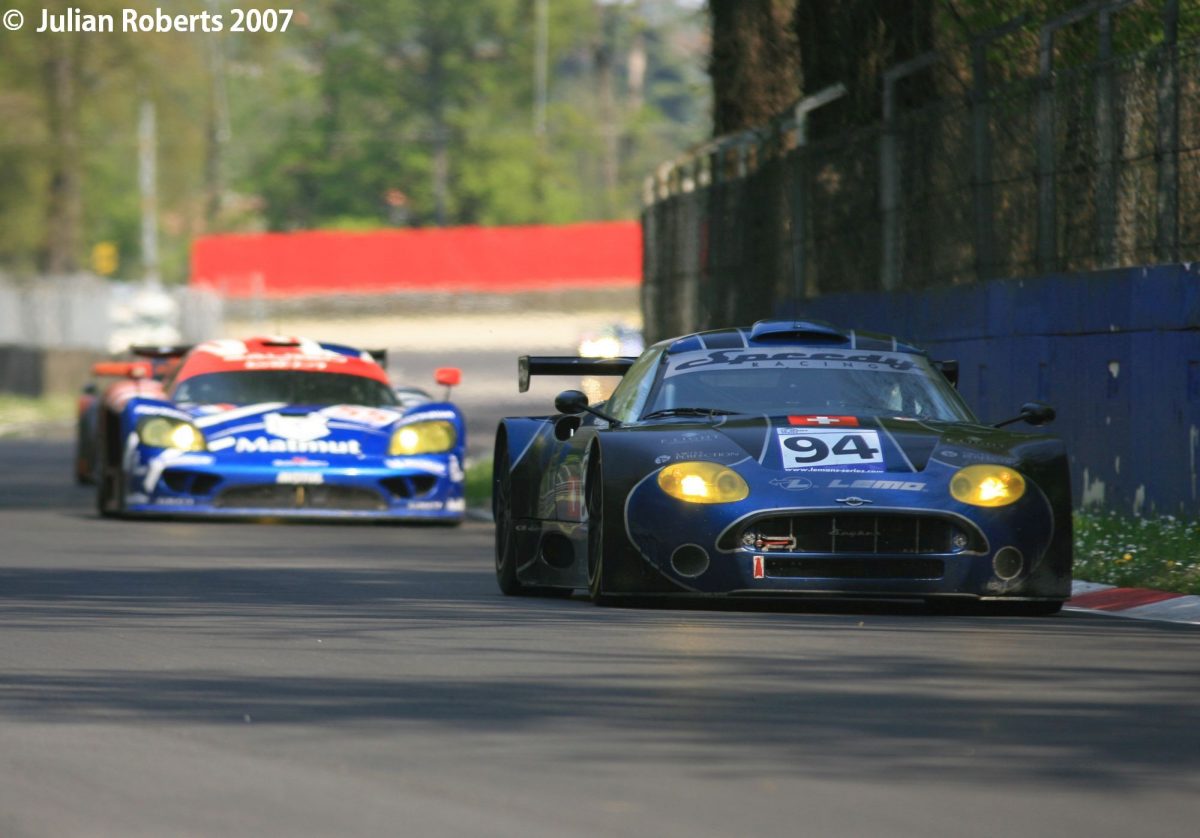
My day was just about perfect.
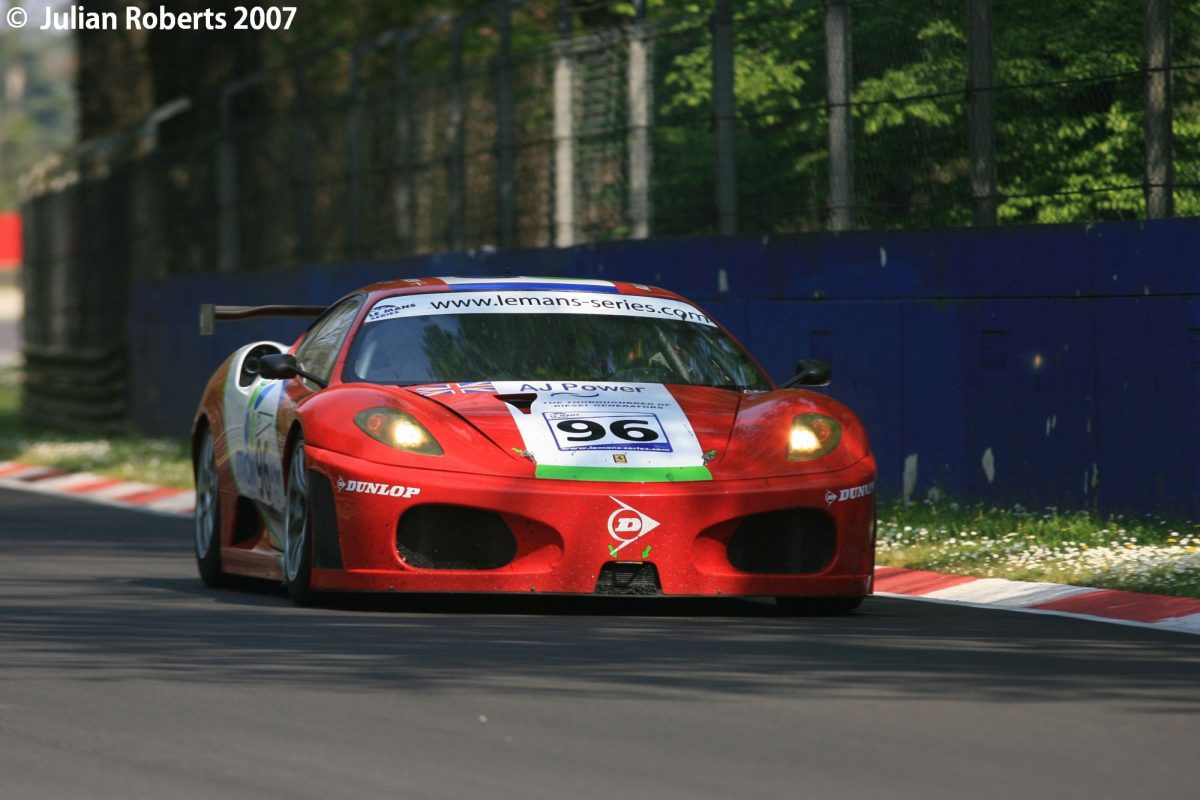
I was in warm autumn sunshine watching THE Monza 1000kms with full trackside access. Pausing at Curva del Serraglio which is the bend between Lesmo Two and the old banking I crouched behind the Armco barrier and had a great view back up the track towards Lesmo Two and then lay down in the access to shoot the cars going away under the bridge.
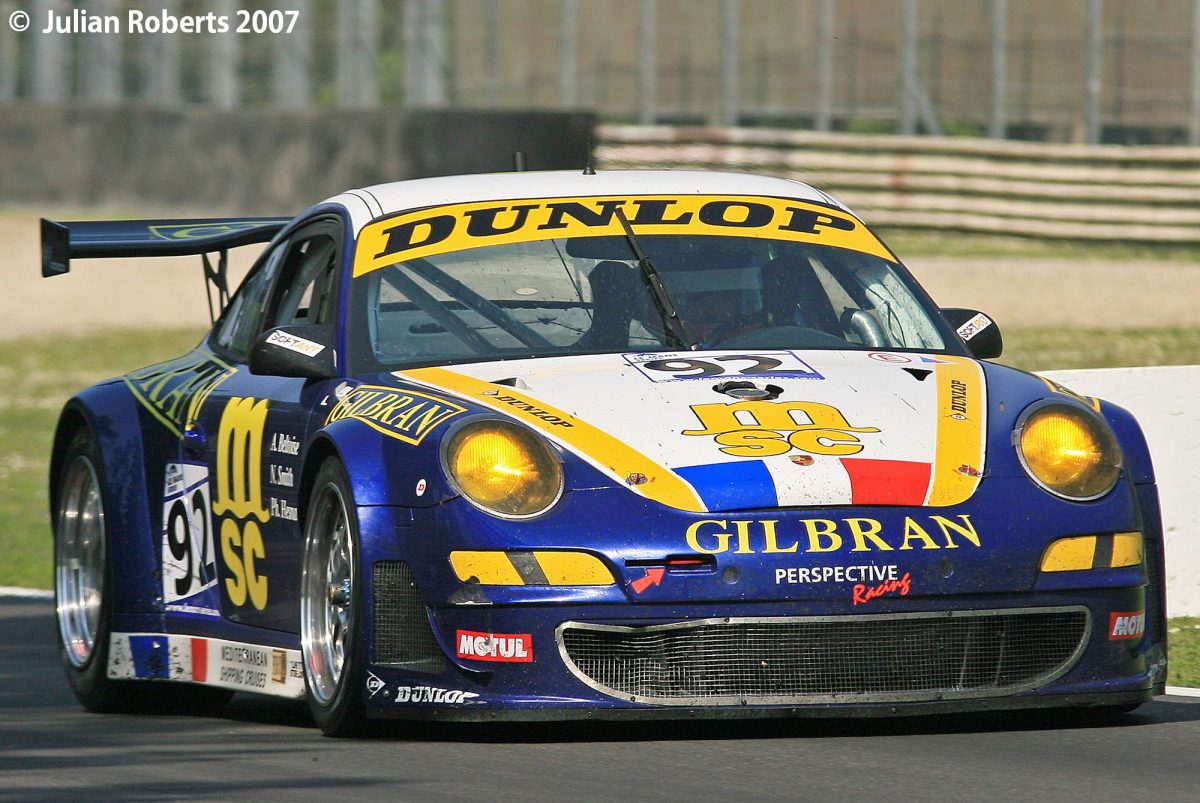
Next was Lesmo Two and I was surprised just how close I was permitted to stand to the tarmac, now the cars weren’t just an aural sensation, I could physically feel them too.
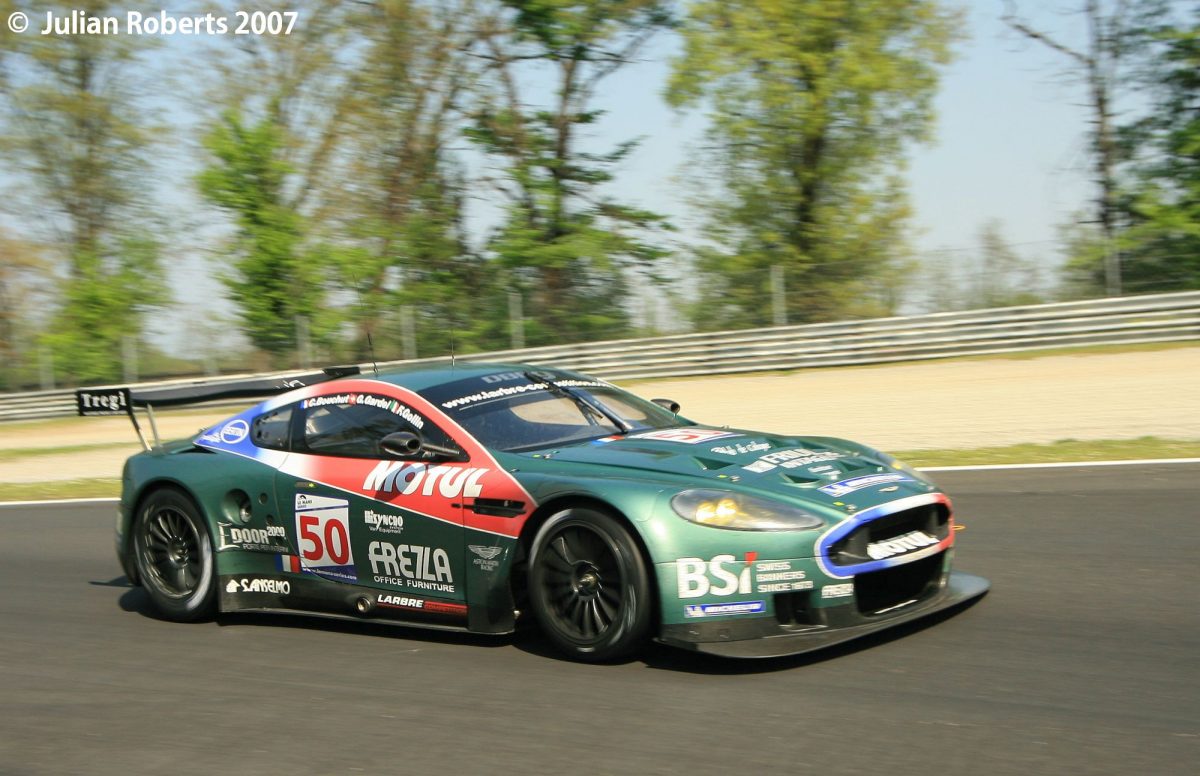
I stayed about half an hour switching between my 300mm lens to catch them head on and a wide angle angle lens panning with the cars as they swept through.
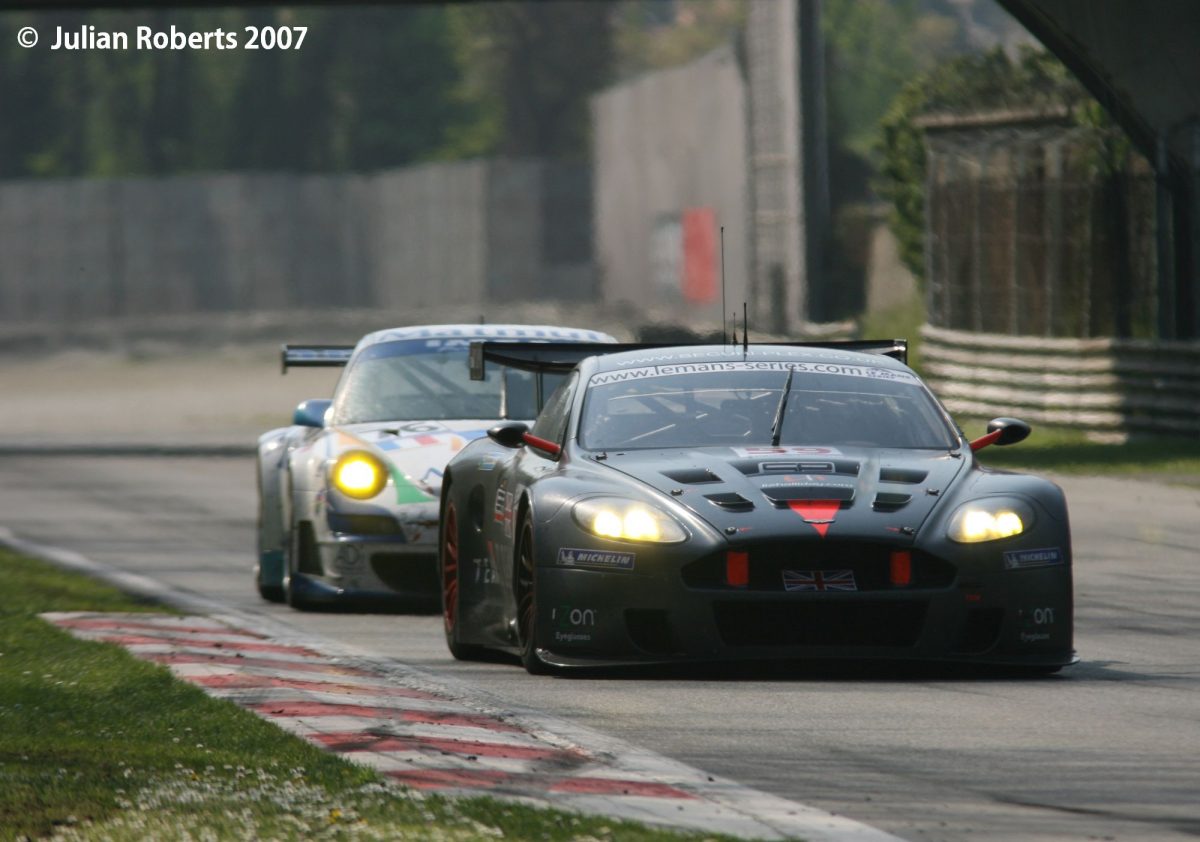
Spoiled for choice I made another bucket list tick and walked alongside the track to the Variante del Roggia.
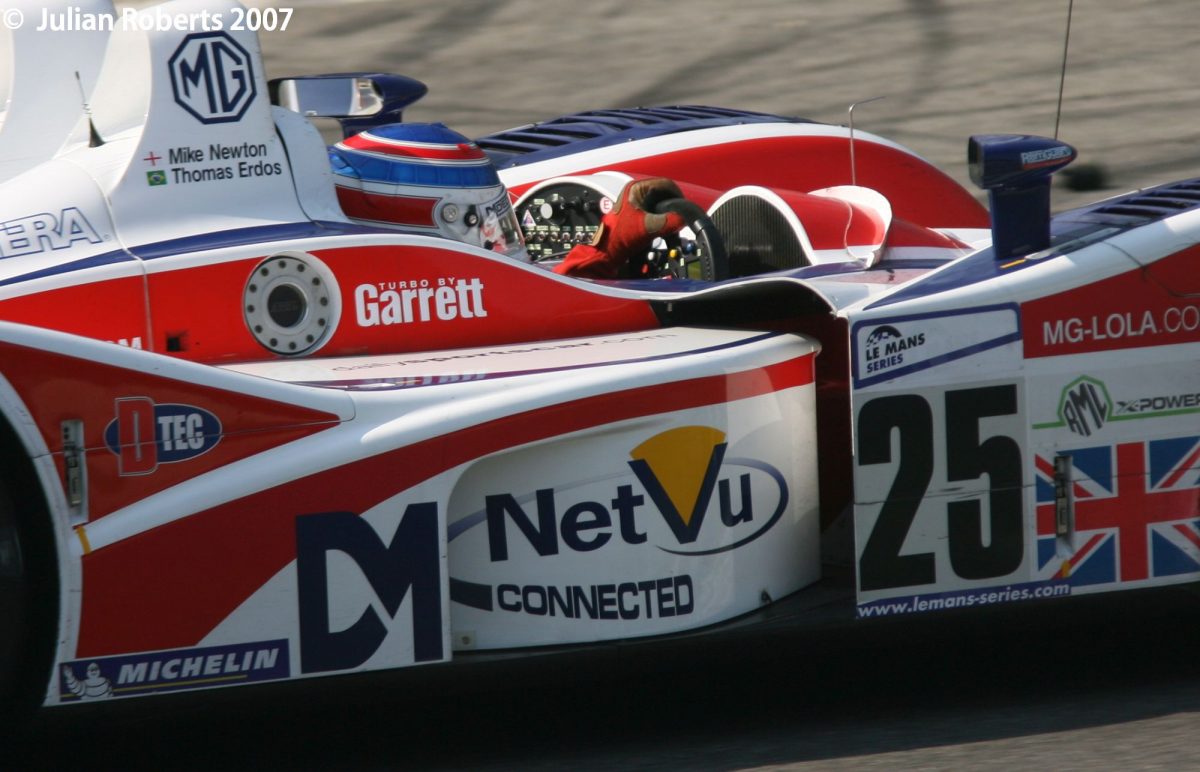
Here the cars come storming into view from the Curve Grande then hard on the brakes for this fast left right left.
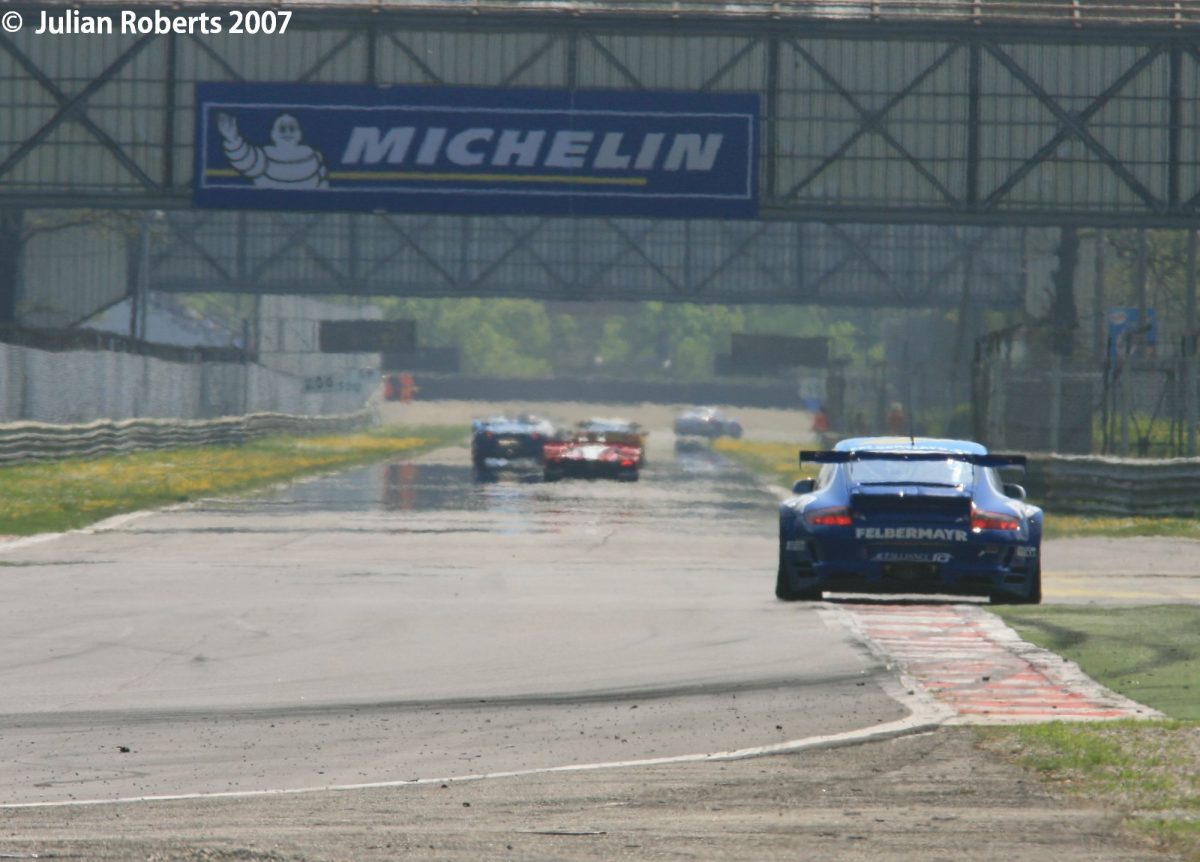
Next was the Variante Ascari once more on my way to my favourite perch in the photographers’ box at the Parabolica.
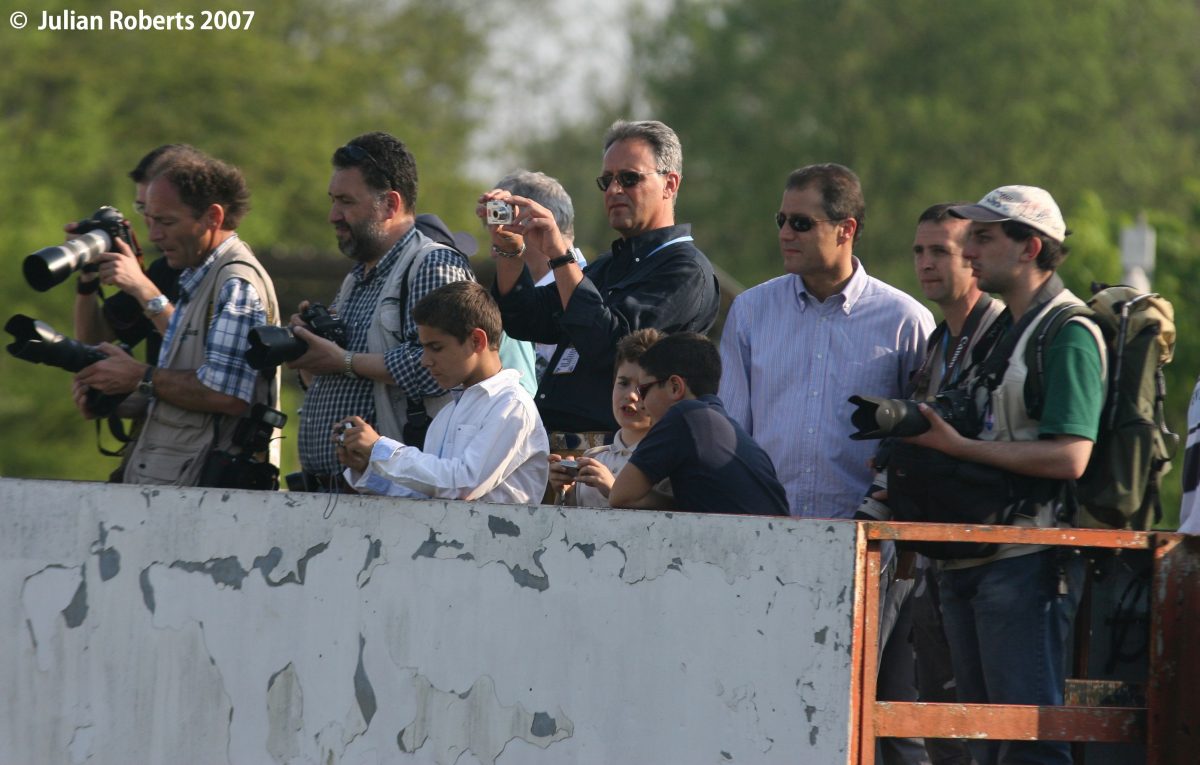
Space was at a premium as the prime spots were occupied by three young boys wielding tiny point and shoot digital cameras.
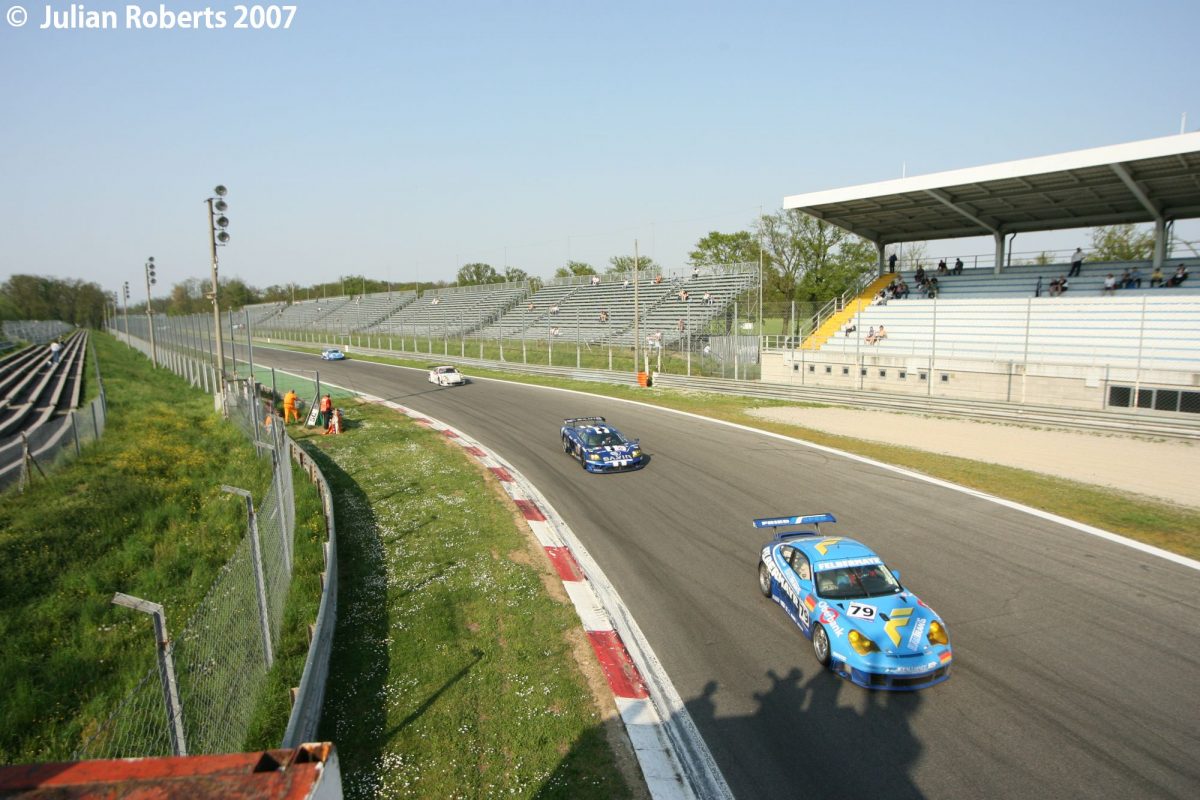
Elbows out I took up my position and lost myself in overhead photography.
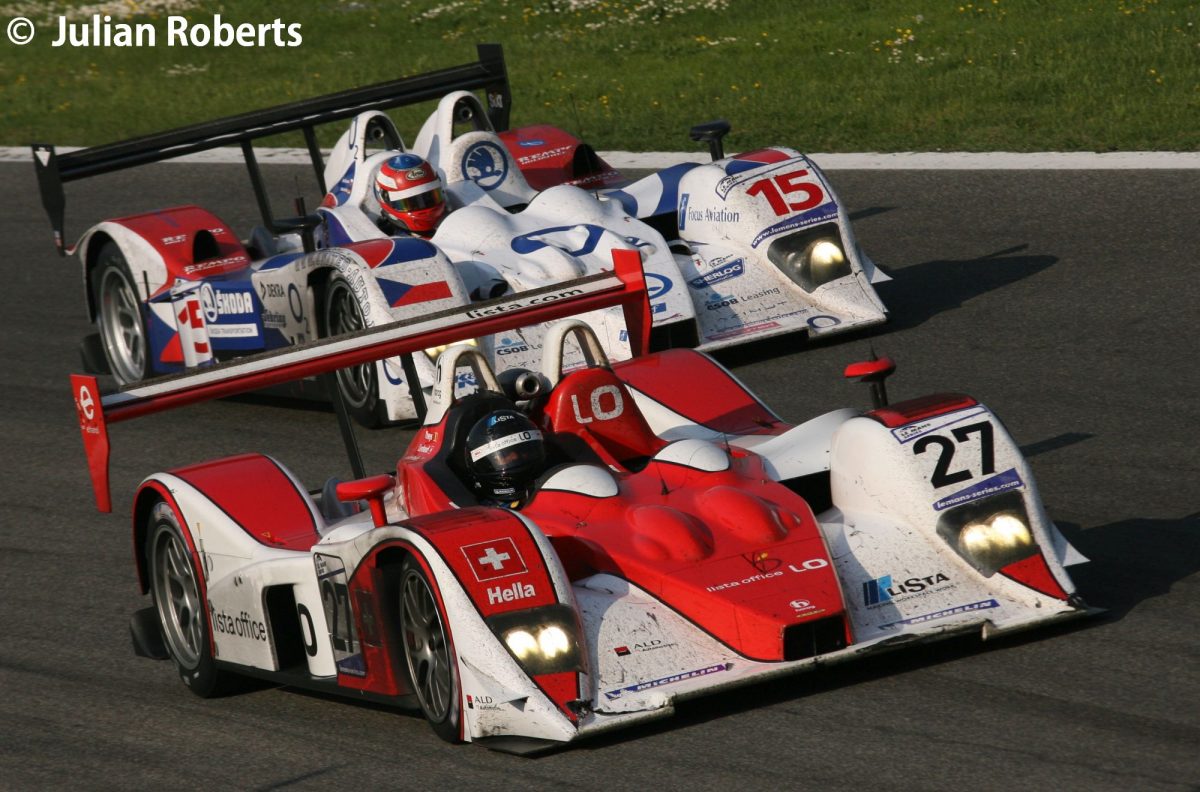
Suddenly it was very quiet. The race had ended, to the surprise of absolutely no one, Peugeot won, though it was first and third for the 908 Diesels.
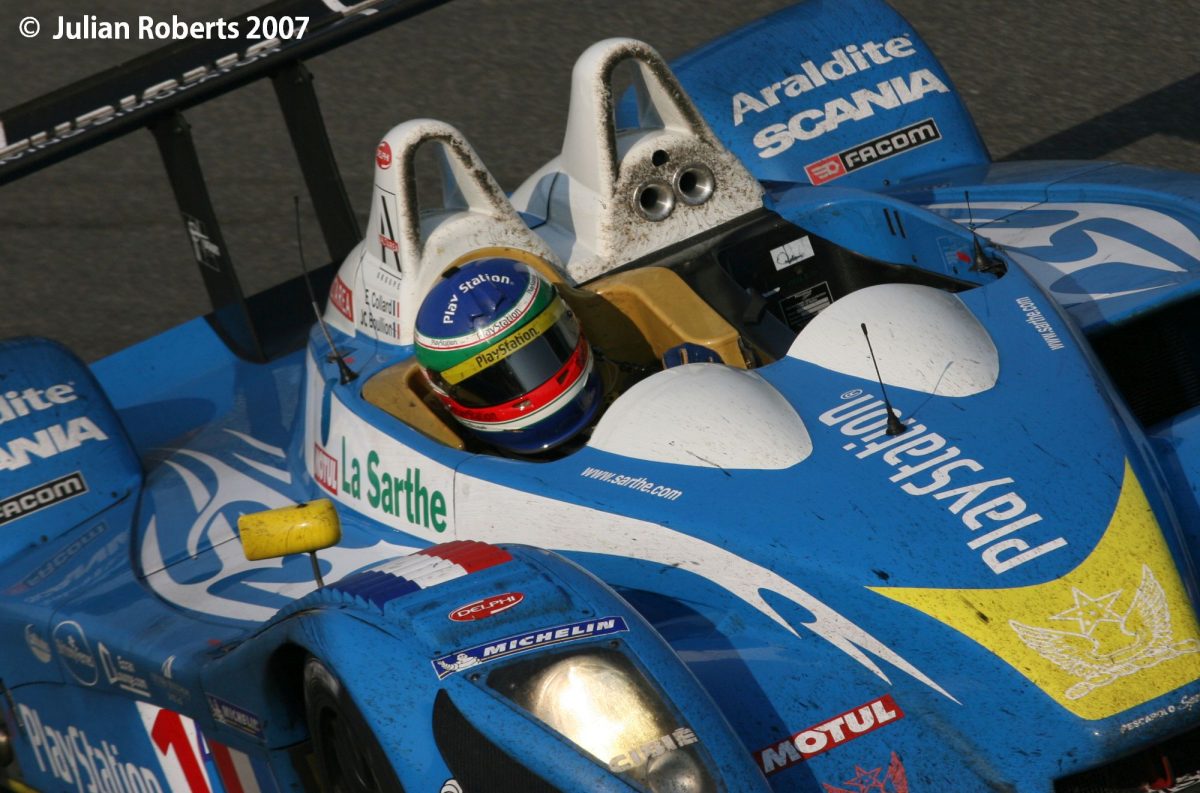
This allowed the Pescarolo Sport team some well-deserved glory grabbing second place, and their second car finished fourth. Back in the paddock I bumped into Mr & Mrs Hall who were pleased with Stuart’s result – starting in dead last he and João Barbosa had climbed through the field to finish in seventh place. Better still they offered me a lift back and we arranged to meet for dinner at the hotel. Sadly being a Sunday, the restaurant was closed, but the receptionist directed us to a local pizzeria where we gorged ourselves on wood fired pizza and cheap red wine talking about motor racing and in particular (at my insistence) his time in the BTCC and his association with Andy Rouse. A fitting end to a terrific weekend.
I’d booked a lunchtime flight home so there was no hurry over breakfast. Taxi to the airport, back to Stansted, an hour’s drive home and that was it, back to work and reality tomorrow. Already I was having doubts at my ability to make a living out of this, but I was certainly going to enjoy myself !
Next stop, round two of the FIA GT Championship at Silverstone in May.
Julian Roberts, October 2020
The post My Big Year – The Prologue first appeared on DoubleDeClutch.com.
]]>A recent celebration of the Steve McQueen classic “Le Mans” in Los Angeles brought out all the stars. DDC’s own Bond Girl was on hand to add lustre to the occasion and here she gives her take on the screening. When the film “Le Mans” was released in 1971, I was barely driving. It was the era of […]
The post 24 Hours at the Starlight first appeared on DoubleDeClutch.com.
]]>A recent celebration of the Steve McQueen classic “Le Mans” in Los Angeles brought out all the stars. DDC’s own Bond Girl was on hand to add lustre to the occasion and here she gives her take on the screening.
When the film “Le Mans” was released in 1971, I was barely driving. It was the era of the Saturday night date at the local drive-in theater. I saw “Le Mans” at the Starlight. Please rest assured that any exuberance exhibited while watching cars racing around a track in the French countryside existed purely for the benefit of the boyfriend of the moment. However, it wasn’t all feigned. There was that crush on Steve McQueen. As far as I was concerned, the King of Cool just embodied the sexy Hollywood superstar. So while a trip to the drive-in to see Le Mans was, for some, all about the racing footage, I just wanted to gaze up into those dazzling blue eyes. Talk about a passion pit.
In the racing world, however, it wasn’t just about McQueen’s taciturn Michael Delaney and those charismatic facial expressions. Beyond his craft, enthusiasts respected the man as a competent racer, making the role a realistic fit. For all that, the movie itself co-starred in pole position with the Circuit de la Sarthe. Considered by many to be the most influential racing film ever made, some forty years later, “Le Mans” enjoys an almost cult like following. From Delaney’s slate gray 911S, to the Heuer Monaco on his wrist, to the 917 in Gulf Colors, the film resonates.
Still, aside from McQueen, just who and what were we actually watching? For starters, actual footage from the 1970 24 Heures du Mans. Moving on from there, how about a supporting cast including the likes of Brian Redman and Jo Siffert to name just a few of the notables – piloting various Porsche 917’s and Ferrari 512’s. In addition to list of drivers named in the credits was a very young Jürgen Barth. When asked of his own role in the film, Barth replied, “I drove the 911 that caused the crash.” We were watching legends at work, no wonder it all appeared to be so authentic.
Voyeuristically, we screamed along the Mulsanne Straight in the rain, at night and in the home stretch. And that’s what makes the film more of a documentary, that insider’s perspective. At the time, a good percentage of us truly had no idea we were watching the real deal as we munched popcorn and steamed up the windows of our own rides.
Today, aside from in-home, Blu-Ray screenings, the chance to revisit “Le Mans” on the big screen is almost never going to happen. But the opportunity did arise recently, and what better venue than The Chinese Theater in LaLa Land? Hollywood is not only the land of the star, but playground to the luxurious, the fast, the cool, the expensive automobile. These attributes converged at the Turner Classic Movie Festival with Porsche Cars North America joining the celebration by hosting Club TCM, held at a venerable hotel. A pre-screening discussion presented two of racing’s own cool cats, Derek Bell and Vic Elford, on the dias, and rounding out the expertise was McQueen’s son, Chad. Each reminisced about a simpler time in racing, about McQueen and his driving, his personality and their own experiences during the filming of the movie.
Basking in the glitz and glamour of Tinseltown, the approach to Hollywood’s Roosevelt Hotel revealed two Porsches positioned on their own crimson runner; a brand-new, bright yellow 991, and a black, completely original 1965 911. Needing no introductions, the pair stood in silent welcome as fans of the film and the marque arrived to revisit 1971 in the comfort of Hollywood’s Chinese Theater.
It may not have been the Starlight, but then again, I’ve been driving for a long time now.
Lizett Bond, May 2013
Photos courtesy of Lizett and scans courtesy of Michael Keyser, taken from my review of his book on the making of the movie
http://www.doubledeclutch.com/?p=3224
The post 24 Hours at the Starlight first appeared on DoubleDeClutch.com.
]]>Ten years or more has passed since Bob Wollek was killed in an accident on Highway 98, near Lorida, Florida. Last summer has seen the publication of a biography of the great French endurance driver, written, appropriately, enough by his close friend, Jean-Marc Teissedre. Jean-Marc is now unquestioningly the leader of the journalistic pack in […]
The post Bob Wollek – En marge de la gloire first appeared on DoubleDeClutch.com.
]]>Ten years or more has passed since Bob Wollek was killed in an accident on Highway 98, near Lorida, Florida. Last summer has seen the publication of a biography of the great French endurance driver, written, appropriately, enough by his close friend, Jean-Marc Teissedre.
Jean-Marc is now unquestioningly the leader of the journalistic pack in the endurance sportscar racing media circles. The proud Frenchman has been covering that aspect of the sport since the ’70s and now, since the retirement of Mike Cotton, is probably the only one, other than Mark Cole, who can remember witnessing the glory days of Group C. Jean-Marc was a confidant of Bob Wollek and there can be no more appropriate author of a book celebrating the life and times of a very successful racing driver.
However the book is far from a hagiography, it is a warts and all account of a man who spent nearly 30 years at the top of the sport. A indication of the honest tone of the book is found right from the start as Jean-Marc gives an account of his first encounter with Mr. Wollek.
“Can you imagine a worse introduction to a guy who had a reputation for being pretty unsociable than having to ask him for money? This is what happened to me in the paddock of the old Nürburgring on Friday evening before the final round of the 1977 German Circuits Championship. Auto Hebdo sent me to Germany to cover the event, and I got the exchange rate between the French Franc and the Deutschmark a bit mixed up. The only solution was to find a Frenchman who would get me out of this mess. And they were thin on the ground in that era. So it looked like my only hope was Wollek! I didn’t know him, but the magazine asked me to follow him closely as his reputation was just beginning to expand beyond the banks of the Rhine. But at this particular point in time I had to introduce myself to him not as a journalist but as a beggar! So after a very careful approach I had to come clean. I told him who I was and asked for what I wanted almost in the same breath in a barely audible voice.
“Who the hell do you think you are asking me for money? We don’t know each other- do you think I’m the Bank of France, or what?” he shot back. A long silence followed our first contact. By the time I’d got round to thinking up an answer, Bob had already gone to the rear of the car and was talking to the Porsche Kremer Racing mechanics in German.
I walked a little further away and tried to think. I didn’t know anybody, the future was looking grim. But now it was time for practice so I said to myself that I’d see about it later. After things had calmed down I went into the press room, and as luck would have it I found myself face to face with Bob. “Have you got your one hundred marks?”
“Well, er .. . no. I don’t know anybody here……”
“It’s not bloody possible…”
I couldn’t make out the rest of the sentence, but it was probably a sarcastic comment about the level of intelligence of the journalistic profession. But I didn’t have to be asked twice when Bob told me to follow him. He flipped open his wallet and gave me fifty marks. But now there was another problem- how was I going to repay him? At best we’d meet up again in the same spot in March of the following year for the first round of the 1978 DRM. This is what I said to him. He rubbed his hand across his forehead asking himself what kind of half-wit he was dealing with. “And a cheque, you don’t know what that is? It’s a little piece of paper you take to your bank and get money in exchange!”
Mumbling vague excuses for not having thought of this solution I promised to send him a cheque on the Monday following our meeting.”
Not an auspicious start.
And the book continues in a similar vein, the story of Bob’s career as a skier, then a rally driver and finally to the circuits. Interwoven into the tale are pieces from his contemporaries and also artifacts from his estate. One that caught my eye is the invoice from Motor Racing Developments for a Brabham BT28 the weapon of choice for a Formula Three campaign in 1970, all for the princely sum of £1,860-0-0.
It was in the Brabham that Bob’s career nearly ended before it began. Contact with none other than James Hunt sent Wollek into the trees of Rouen, bouncing from one trunk to another, the car was destroyed and the final destination for Bob was the local hospital for a couple of weeks. Racing at the time was a blood sport, for two others (Jean-Luc Salmon and Denis Dayan) were killed in that race, the drivers adding their impetuosity to the fragile nature of the cars. Bob’s friend of the time and 1980 Le Mans winner, Jean-Pierre Jaussaud, recalled the race in the book, “They tried to pass four abreast in a place where there was only room for two.” What can one add to that?
The story continues on with Bob soon ascending to Formula Two, and ultimately more significant in the long run he found his way into endurance racing with Lola and Matra. It is all here in chronological order, the privateer Porsche years, his successes in IMSA, the titles and the race wins, culminating with factory drives for Lancia and Porsche.
The book is spiced with comments from his contemporaries, not always complimentary, as evidenced by this passage from his 1995 Le Mans co-driver, Eric Helary. “In my life I’ve only had problems with two drivers: Christophe Bouchut and Bob Wollek. I respect everything that Bob did but he made our 1995 Le Mans 24 Hours sheer hell. Right from the start he behaved despicably. He didn’t want Mario or me to get in the car. He wanted to do the start, the finish, practice, qualifying, the lot.”
And then, “At the finish Mario and I were in the motorhome and we asked each other what the hell was going on in Bob’s head? And it didn’t stop there. After the race he wrote me a letter telling me I was an arsehole!”
Eric concludes, “Maybe I’m not a good example as I drove with him in only one race and I never came across him again. I have the impression that I didn’t see the real Bob Wollek. I never knew the other side to him.”
Mario, in diplomatic mode, was less critical. “I always had good relations with Bob who I’d known for a long time as we’d done tests in the open WSC Porsche at Charlotte which had gone off without a hitch. I respected him as he had an exceptional set of results.” Team Owner, Yves Courage, also found Wollek to something of a Jekyll and Hyde personality but I will let you buy the book to read the full story. For every negative there is also a positive view from those not easily fooled, like Klaus Ludwig and Norbert Singer.
When I sat down to write this review I was inclined to include some personal experiences and I have to say that my own somewhat limited dealings with Bob were, at best, mixed. At the time I started out in motorsport he was one of the stars of the scene and I was another anonymous face in the mob of photographers, so there was no call for any form of interaction. I witnessed Wollek win races, join teams at the wrong moment and endure all manner of indignities at Le Mans. He grabbed pole position in 1987 and then in the race did not even get to drive as the engine went bang. Bob was driving a werks-Porsche, the ones with Rothmans’ signage, they were not supposed to fail, after all excellence was expected. However a rash of top line Porsches retired early in the race, all victims of a batch of fuel supplied by the ACO that was found to have a lower octane level than it should have, which played havoc with the turbocharged cars. Typically the sister car did not blow a piston and went on to win the race against all odds.
The 1987 edition of Le Mans was perhaps the first time I really saw how forceful Wollek could be. The ACO would have a Friday afternoon press conference which in theory was to champion the great race. However the President of FISA, Jean-Marie Balestre, would also manage to be present and would always take to the stage. Balestre was prone to giving the assembled hacks a stern lecture on whatever topic was troubling him at that moment, so although we were at Le Mans we would usually receive a rant about Formula 1. This was delivered in the theatrical style of a proper tinpot dictator, thumping the desk and getting red in the face all the while bellowing about FOCA or the drivers, or some other iniquity.
Craven cowards that we in the media were, we would endure these bizarre performances without protest, partly because we wanted a pass the following year, and partly because there was usually some form of gift or bribe to encourage our attendance. For instance in 1986 it had been a Magnum of vintage Moët & Chandon Champagne, I can certainly remember that high point of dubious incentives. Well I still have the bottle in my office though it is sadly empty, the bottle that is.
There was the usual matinée idol performance from J-MB and then as the floor was opened to questions Bob stood up and gave Monsieur le Président a full blast. My French comprehension is poor at the best of times but I was no doubt that this was about safety standards at Le Mans and the irrelevance of the Formula One blather. The drivers were very concerned about the speeds down the Mulsanne Straight, which pushed to the limits of the tyres’ performance, a year earlier Jo Gartner had been killed during the race in an unexplained accident. Klaus Ludwig, a three time winner, had refused to race at La Sarthe unless changes were made. Balestre was shaken by the direct line that Wollek took as he was more accustomed to dealing with a tame bunch of scribblers. Bob made his point quietly but he left the Président in no doubt. The message was clear, force the ACO to do something before someone else is killed. As if to underline this point there were several accidents in that race week culminating in the monumental crash of Win Percy’s Jaguar, after a puncture at around 230 mph. Win survived but it was a lottery, the next victim might not be so fortunate. Within a year or two the Chicanes on the Mulsanne would appear. Bob had made his point.
I continued to see Bob at the tracks but the next time we had any real interaction was less enjoyable. His final race as a Porsche driver in the top class was in 1998 at the Suzuka 1000kms, a round of the 1998 FIA GT Championship. Porsche had endured a horrible season being beaten at almost every turn by AMG Mercedes Benz. The exception, of course, was Le Mans but Bob had only managed yet another second place, once again the glory went to his team mates. Looking through the viewfinder at the podium ceremonies, it would taken a heart of stone not to be moved by Bob’s tears as the realisation set in that the dream was over, there would be no triumph at La Sarthe.
For the race in Japan he was paired with Uwe Alzen and Jörg Müller but the trio could not match the pace of the other factory Porsche, let alone the Mercedes duo. During Bob’s mid-race stint he had contact with a GT2 in the final chicane and recovered to dive into the pits to check for damage, unfortunately to do so meant driving against the traffic and he received a three minute stop-and-go penalty for his pains. I reported this in a Swiss magazine that I was working for but something in the translated report incurred Bob’s ire and he threatened to sue us all! The Editor assured me that he would sort it out and I got the impression that this was not the first time that he had Angry of Strasbourg on the phone.
The next encounter with Bob was much more convivial. At the Le Mans Test weekend for the 2000 race I was filling the hire car up at the petrol station near to the Parc des Expositions next to the track. A Porsche pulled in at the next pump and out got Bob, who nodded hello and gave me a smile, it made my day, maybe I had stopped travelling, perhaps I had arrived. Like Porsche AG itself, Wollek was confined to the supporting ranks of the GT class. He continued to go flat out, frequently surprising the Young Guns like Lucas Luhr and Dirk Müller with his turn of speed. He certainly seemed more at peace, reconciled to the fact that he would never take the great prize.
The following March I was at the Sebring 12 Hours. Arriving at the track on race morning before the sun rose, there is always a photo briefing to look forward to, a great assembly of grumbling, groaning snappers. I understand that the collective noun for motorsport photographers is a Moan. 2001’s race-day photo meeting was an unexpectedly solemn occasion though. First to arrive, and in those pre-digital days, first to leave, the vast majority of us snappers had not heard the news, Bob Wollek was dead. It was unbelievable, Wollek had survived during a truly dangerous period in motorsport and now, as he contemplated retirement, he was killed in a pointless traffic incident. There would be no more chance encounters.
Every year that I make the trek to Sebring for the 12 Hours I try and get out to the marker post near Lorida where Bob Wollek was knocked off his bike and killed. Others also make the same pilgrimage, evidence such as fresh flowers and wine bottles attest to that.
Bob Wollek was a complex, contradictory character, much loved by those who he allowed to get close, less so by those who were not. This book is a fascinating account of a man who lived by his own terms, well researched, written and translated. It lacks an index but that is about all, buy it, treat yourself, especially if you are in Sebring this week
John Brooks, March 2013
The post Bob Wollek – En marge de la gloire first appeared on DoubleDeClutch.com.
]]>The Retromobile was the usual classy affair, one of the best bits is meeting up with old friends. On Hall & Hall’s stand I found 288, the Jaguar XJR9/XJR12 that completed the unique double of winning both Daytona and Le Mans 24 Hours. More on the latter achievement soon. Hunting through the shots on file, I ran […]
The post I’m On Top Of The World, Ma……………. first appeared on DoubleDeClutch.com.
]]>The Retromobile was the usual classy affair, one of the best bits is meeting up with old friends. On Hall & Hall’s stand I found 288, the Jaguar XJR9/XJR12 that completed the unique double of winning both Daytona and Le Mans 24 Hours. More on the latter achievement soon. Hunting through the shots on file, I ran into the above with yours truly perched above the pit. If I recall correctly a tipsy tart in the Jaguar Dealers’ Hospitality Box tried to shove me off the ledge, I was in her shot, I didn’t get any respect back then either. And look at my crucial skateboarder’s knee pads, cutting edge or what?
Happy Days.
John Brooks, February 2013
The post I’m On Top Of The World, Ma……………. first appeared on DoubleDeClutch.com.
]]>Rumbles from several sources suggest that one of the big surprises that will form part of the announcement revealing the list of invitations to compete in the 2013 Le Mans 24 Hours will be the inclusion of a brace of SRT Vipers. Those blessed with a good memory will recall a hat trick of Viper victories around the turn of […]
The post Snakes in the Grass? first appeared on DoubleDeClutch.com.
]]>Rumbles from several sources suggest that one of the big surprises that will form part of the announcement revealing the list of invitations to compete in the 2013 Le Mans 24 Hours will be the inclusion of a brace of SRT Vipers. Those blessed with a good memory will recall a hat trick of Viper victories around the turn of the century, so this is a welcome return, but they will have a lot to live up to. Olivier Beretta is seen here celebrating his triumph in 2000.
John Brooks, February 2013
The post Snakes in the Grass? first appeared on DoubleDeClutch.com.
]]>Jean Rondeau and Jean-Pierre Jaussaud, on top of their Rondeau M379 B, struggle through the hordes trying to get to the podium to celebrate their famous victory in the 1980 Le Mans 24 Hours. I was down in the thick of it, a proud member of the rabble, determined to enjoy every minute of the […]
The post On the Crest of a Wave first appeared on DoubleDeClutch.com.
]]>Jean Rondeau and Jean-Pierre Jaussaud, on top of their Rondeau M379 B, struggle through the hordes trying to get to the podium to celebrate their famous victory in the 1980 Le Mans 24 Hours. I was down in the thick of it, a proud member of the rabble, determined to enjoy every minute of the world’s greatest race. Little did I imagine that future visits to the event would be in a professional capacity, some days the dreams do come true……………….and yes they did get to spray the Champagne, metaphorically speaking.
John Brooks, December 2012
The post On the Crest of a Wave first appeared on DoubleDeClutch.com.
]]>Found while scanning in 1998 Le Mans, this somehow overlooked shot of Carl Rosenblad in the Chereau Sports Porsche 911 GT2, a look of pure determination on his face. Le Mans as it should be…….. John Brooks, December 2012
The post Maintain Focus first appeared on DoubleDeClutch.com.
]]>Found while scanning in 1998 Le Mans, this somehow overlooked shot of Carl Rosenblad in the Chereau Sports Porsche 911 GT2, a look of pure determination on his face. Le Mans as it should be……..
John Brooks, December 2012
The post Maintain Focus first appeared on DoubleDeClutch.com.
]]>Sunday 13th June 1999 and Les Pompiers catch up on the news………………. John Brooks, September 2012
The post I Read The News Today, Oh Boy………… first appeared on DoubleDeClutch.com.
]]>Sunday 13th June 1999 and Les Pompiers catch up on the news……………….
John Brooks, September 2012
The post I Read The News Today, Oh Boy………… first appeared on DoubleDeClutch.com.
]]>An early attempt at “art”, my personal Cave of Altamira…………….a different time and place……….. John Brooks, August 2012
The post Things May Come and Things May Go But the Art School Dance Goes on Forever first appeared on DoubleDeClutch.com.
]]>An early attempt at “art”, my personal Cave of Altamira…………….a different time and place………..
John Brooks, August 2012
The post Things May Come and Things May Go But the Art School Dance Goes on Forever first appeared on DoubleDeClutch.com.
]]>Our Special Correspondent has been in France at the Great Race. Here he shares some of his observations and discoveries. In the days leading up to the 24 Hour race it is rewarding to look out for interesting cars round about Le Mans. Here are some that caught my eye and my delight: This is […]
The post Miscellany Manceau first appeared on DoubleDeClutch.com.
]]>Our Special Correspondent has been in France at the Great Race. Here he shares some of his observations and discoveries.
In the days leading up to the 24 Hour race it is rewarding to look out for interesting cars round about Le Mans. Here are some that caught my eye and my delight:
This is “Zig”, one of the Aston Martin Zagato prototypes, lurking in the Le Mans paddock still wearing its Nürburgring 24 Hours clothing, waiting to have a go in the Aston Martin Festival Challenge support race. It finished 11th.
I can never resist a visit to the Museum at Le Mans and they do vary the exhibits so it is usually worth a call. They have a superb example of that extraordinary French car, the Panhard Dynamic. Introduced in 1936, it featured a unit-construction body, a sleeve valve six-cylinder engine, torsion bar suspension and, unusually, a central driving position.
Notice the three windscreen wipers and three-piece windscreen.
The bodywork was designed by Louis Bionier and had semi-enclosed wheels. Some 40 six-light limousines were made on the eve of the Second World War for the military chiefs.
Toyota have returned to Le Mans for the first time since their huge effort to win this race with the GT-One cars in 1998-99. These yielded at best only a second place and they had come very close to winning in 1994 with this car, the 94CV.
Gearbox trouble robbed it of almost certain victory in the last hour of the race.
It is 40 years since Matra scored the first of three consecutive victories in the 24 Hour race in 1972. This was recognised at various events around the city. The winning car of Henri Pescarolo and Graham Hill was to be seen in the Village at the circuit as was the 1974 winner of Pescarolo and Gérard Larrousse.
At the traditional A.C.O. Press Conference Gérard Larrousse was awarded the Spirit of Le Mans Trophy – appropriately the 1973 winning Matra accompanied the occasion.
The popular Drivers’ Parade also remembered Matra’s achievements and no less than nine examples of their first proper production car, the 530, endured the incessant rain. The column of cars was led by a 530LX on board of which was Henri Pescarolo who had many successes in Matra cars.
Named after Matra’s R530 air-to-air missile, the 530 had a mid-mounted German Ford V4 engine shared with the contemporary Taunus and for the first two years production was entrusted to the French coachbuilder Brissonneau et Lotz at Creil.
Invariably one comes across a gem in the Parade and for this writer the favourite was the Morris Léon Bollée. This was one of William Morris’s failures. He was anxious to break into the French market and purchased the Léon Bollée factory at Le Mans. The cars were produced as Morris Léon Bollées but did not sell well, although he was able to put his factory at the disposal of the Bentley team when they came to compete in the 24 Hour race. Later models used Hotchkiss engines before production finally ceased.
Tailpiece
Spotted in Falaise on the way home from Le Mans, this Quale Mangusta is reputed to be the only right-hand drive example. The Mangusta started life as the De Tomaso Biguà which appeared at the Geneva Show in 1996. Kjell Quale, the West Coast of America importer of many European prestige cars, agreed to fund the production for which a factory in Modena was used on condition that the car was called the De Tomaso Mangusta. Quale and De Tomaso soon had disagreements and the car was re-named the Quale Mangusta. It had a chassis designed by Enrique Scalabroni and bodywork by Marcello Gandini and under the bonnet lay a 4.6-litre DOHC Ford V8. About 284 cars were made between 2000 and 2001. The Mangusta platform was used as the basis of the MG X-Power SV.
David Blumlein, June 2012
The post Miscellany Manceau first appeared on DoubleDeClutch.com.
]]>